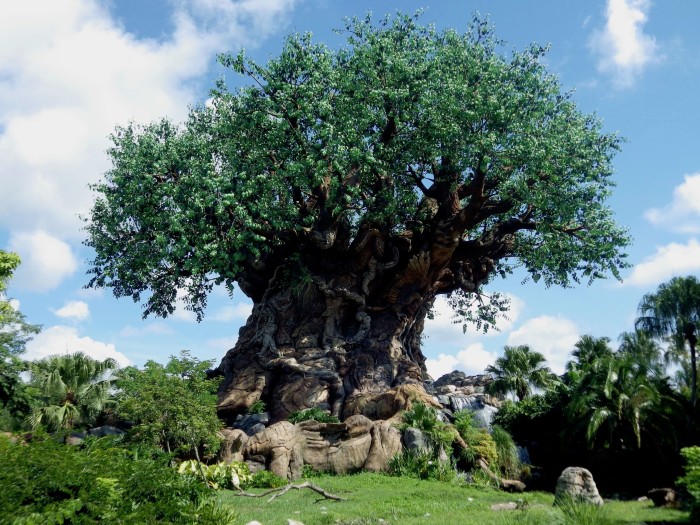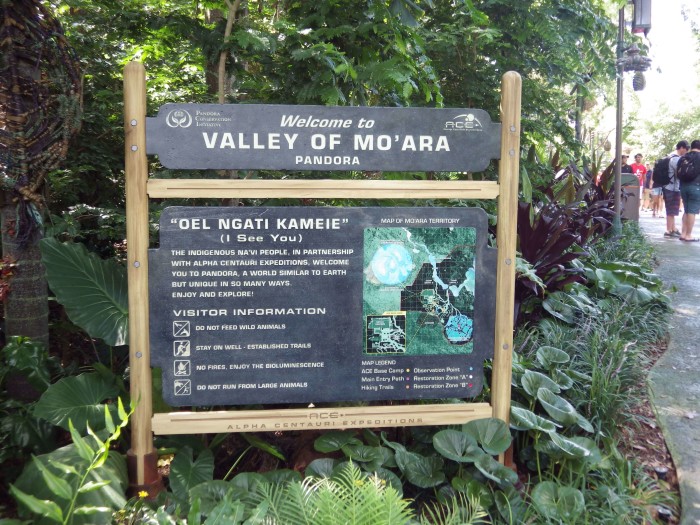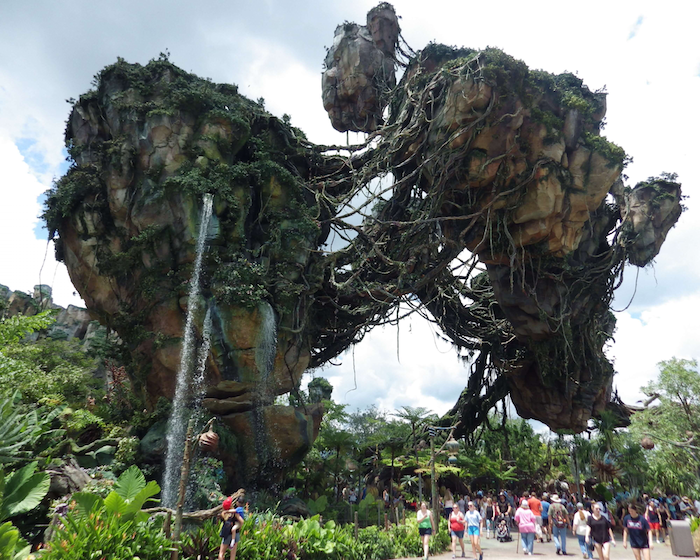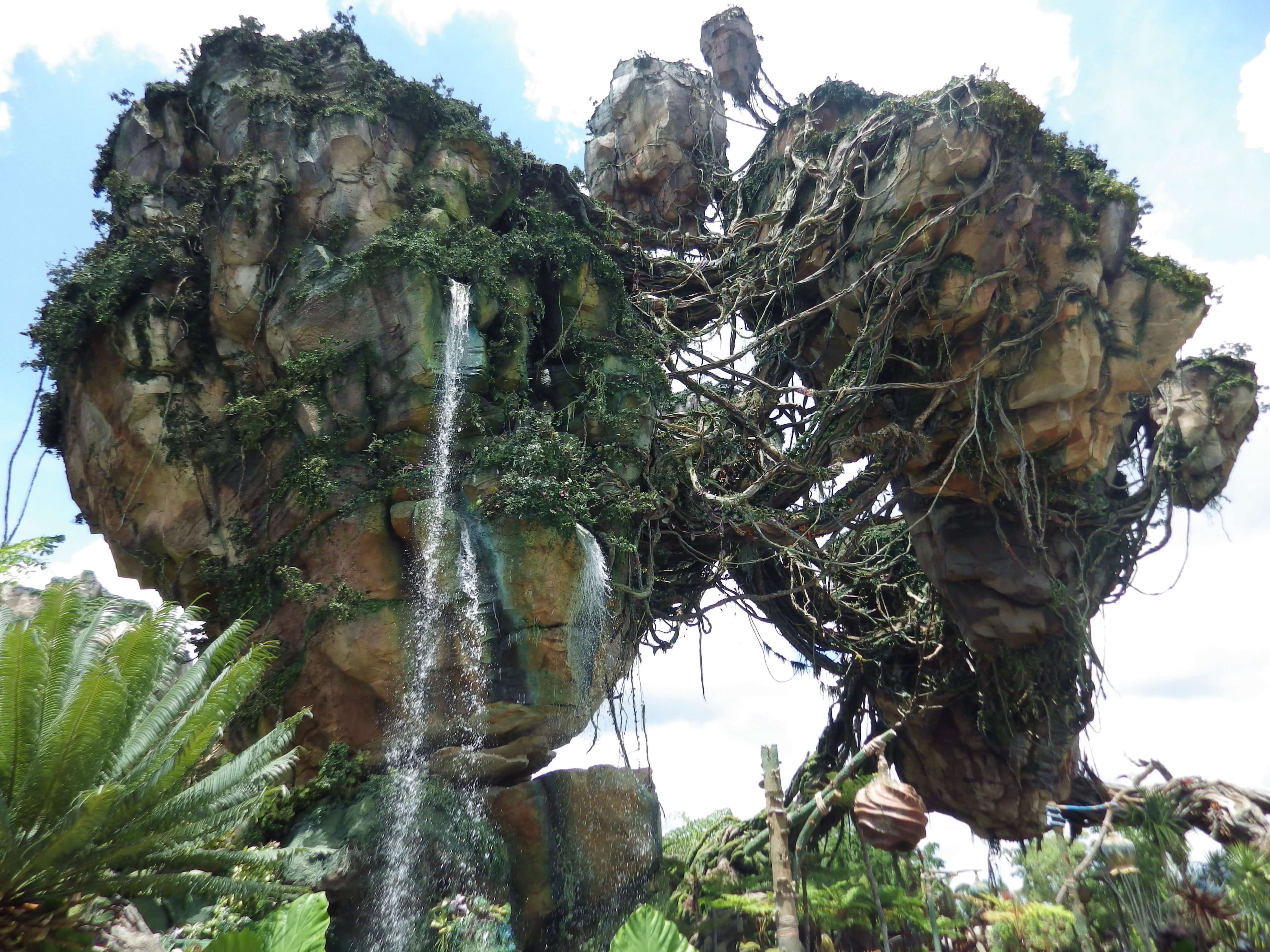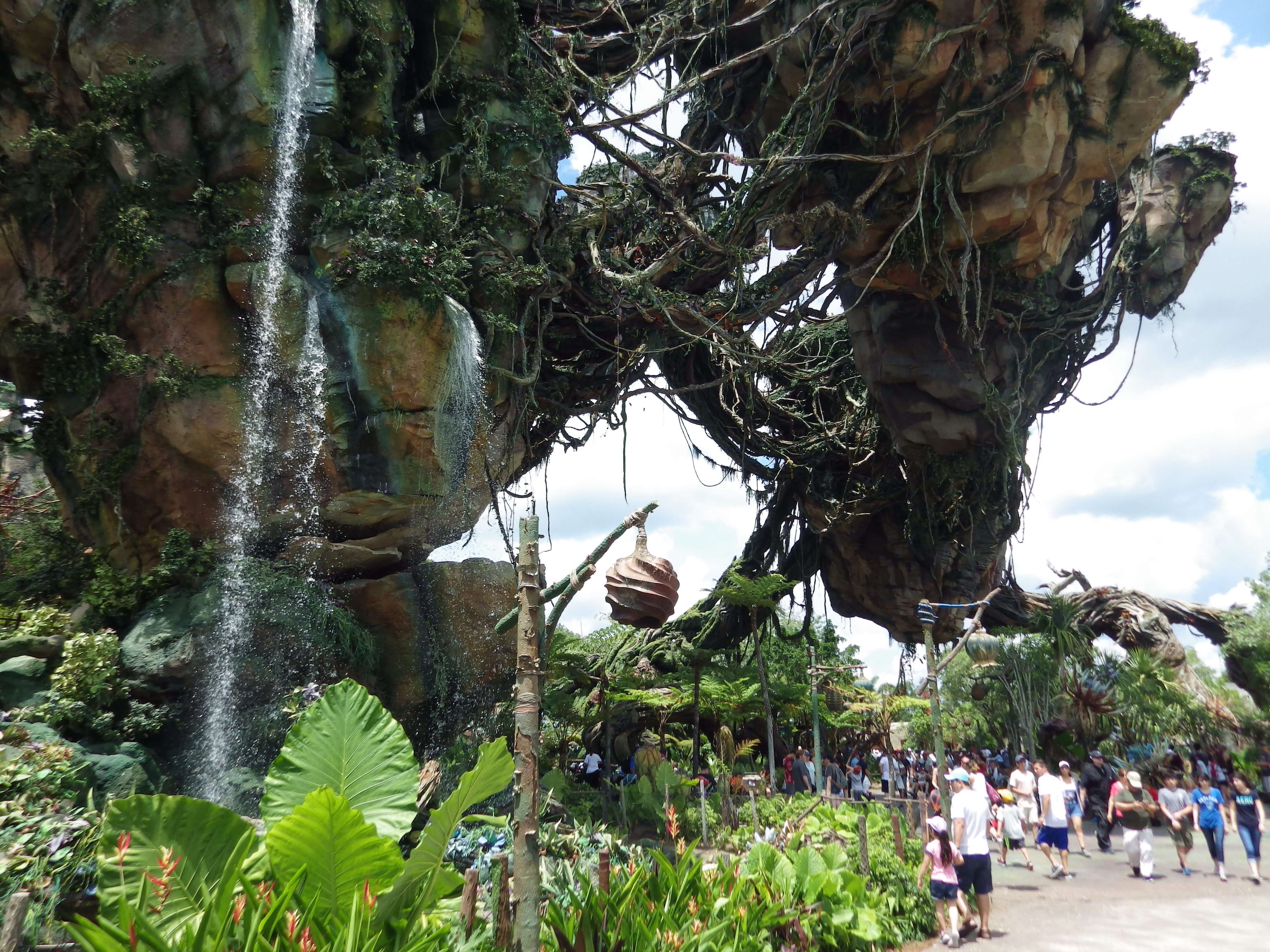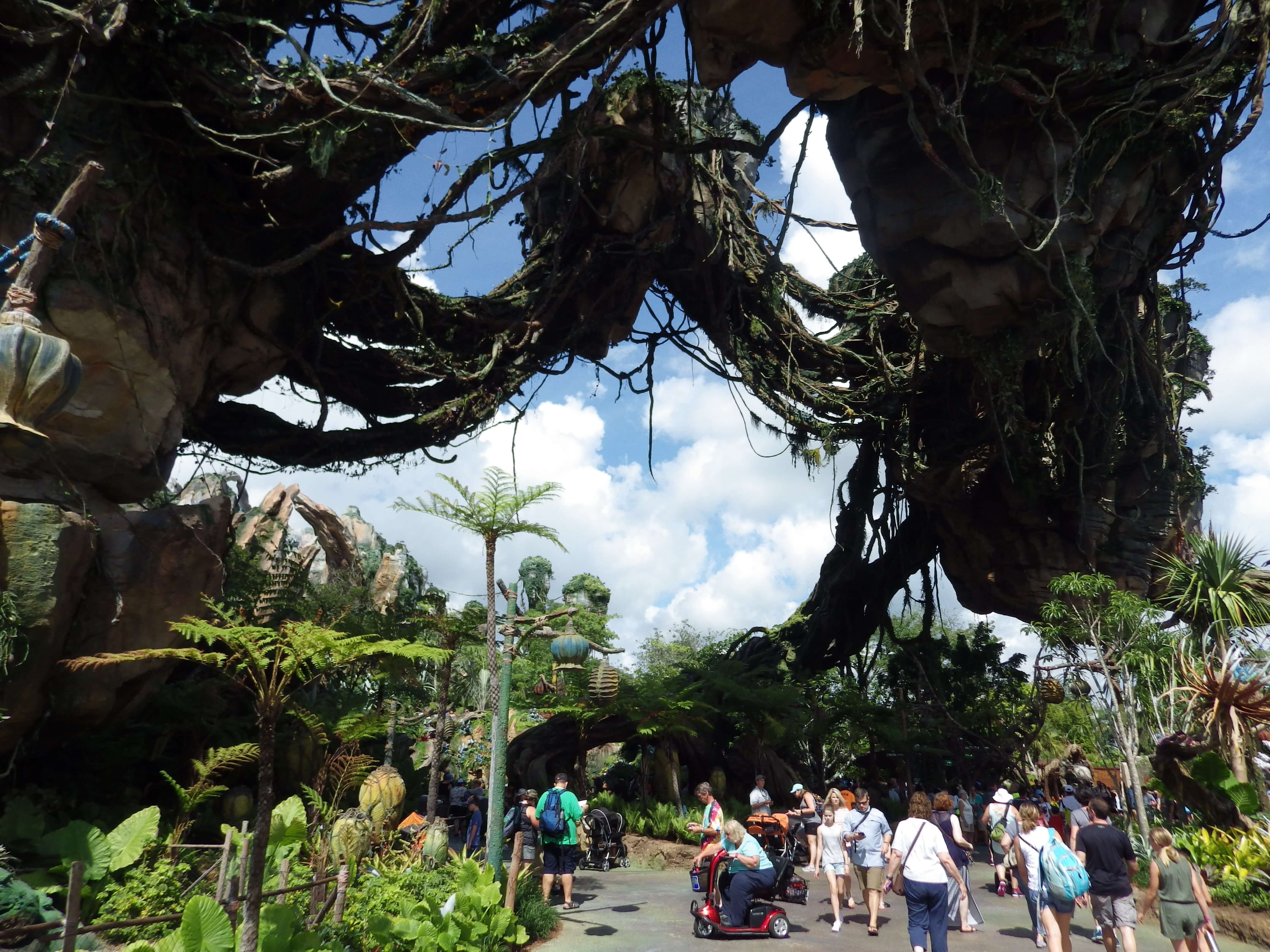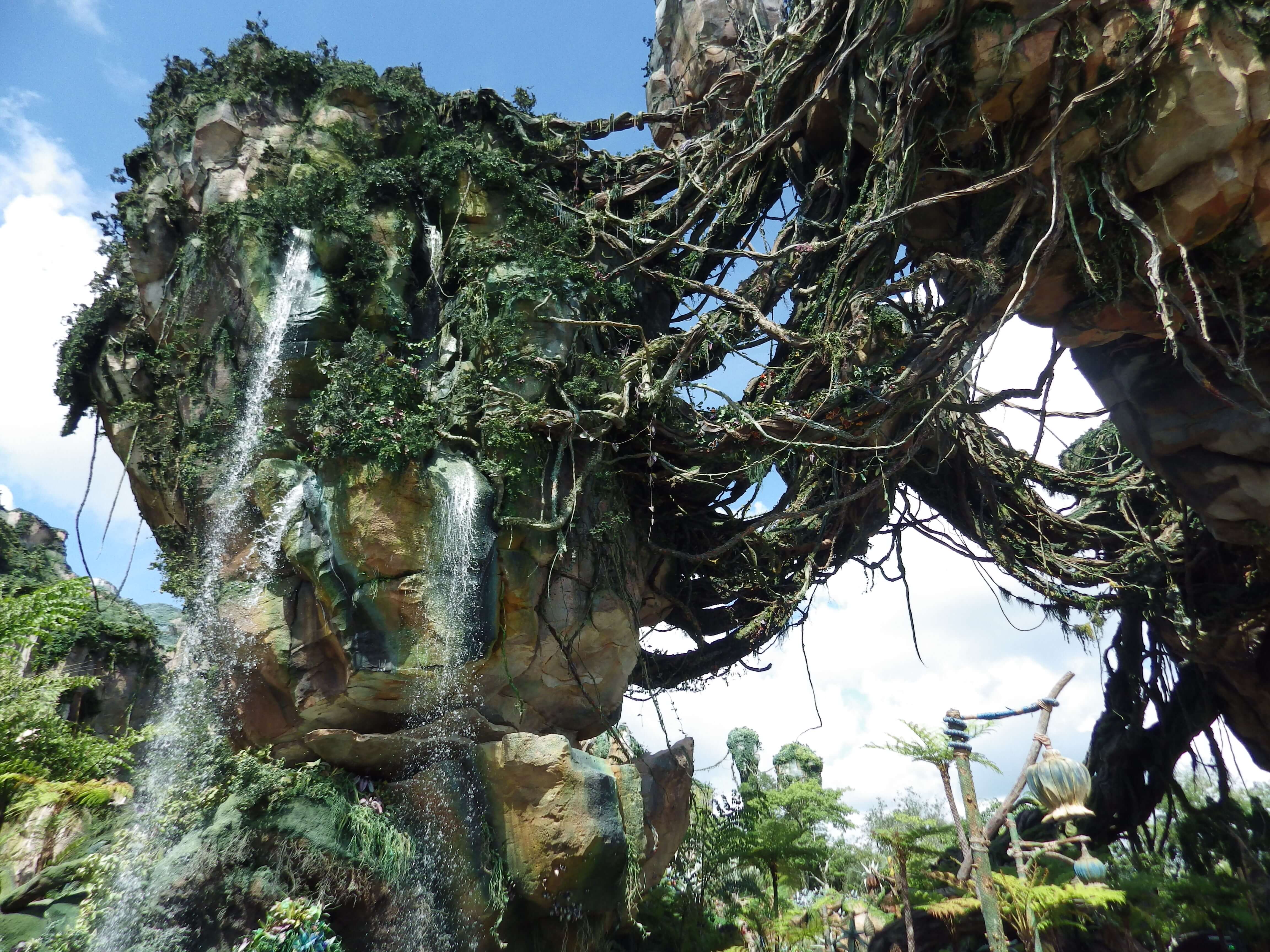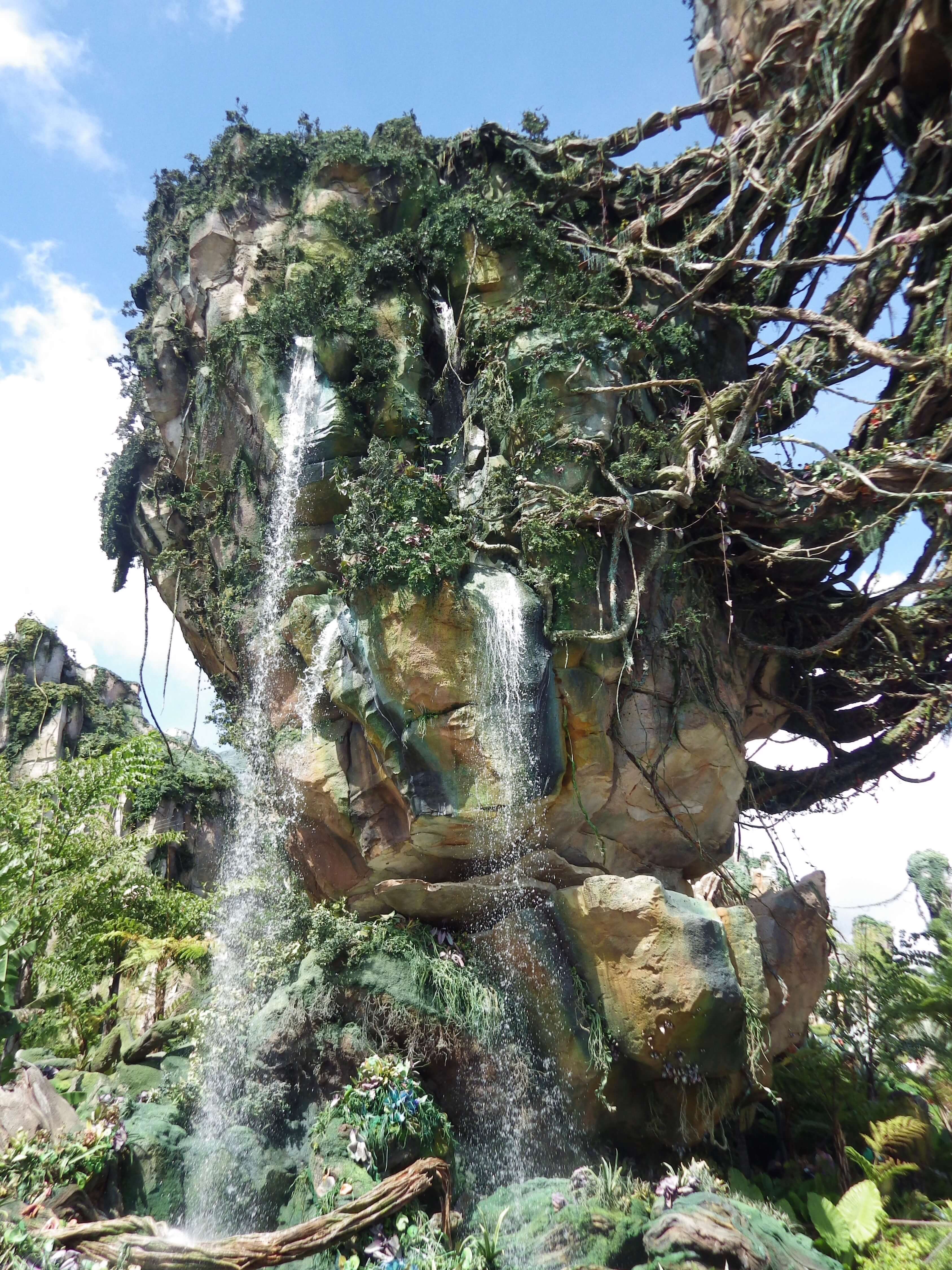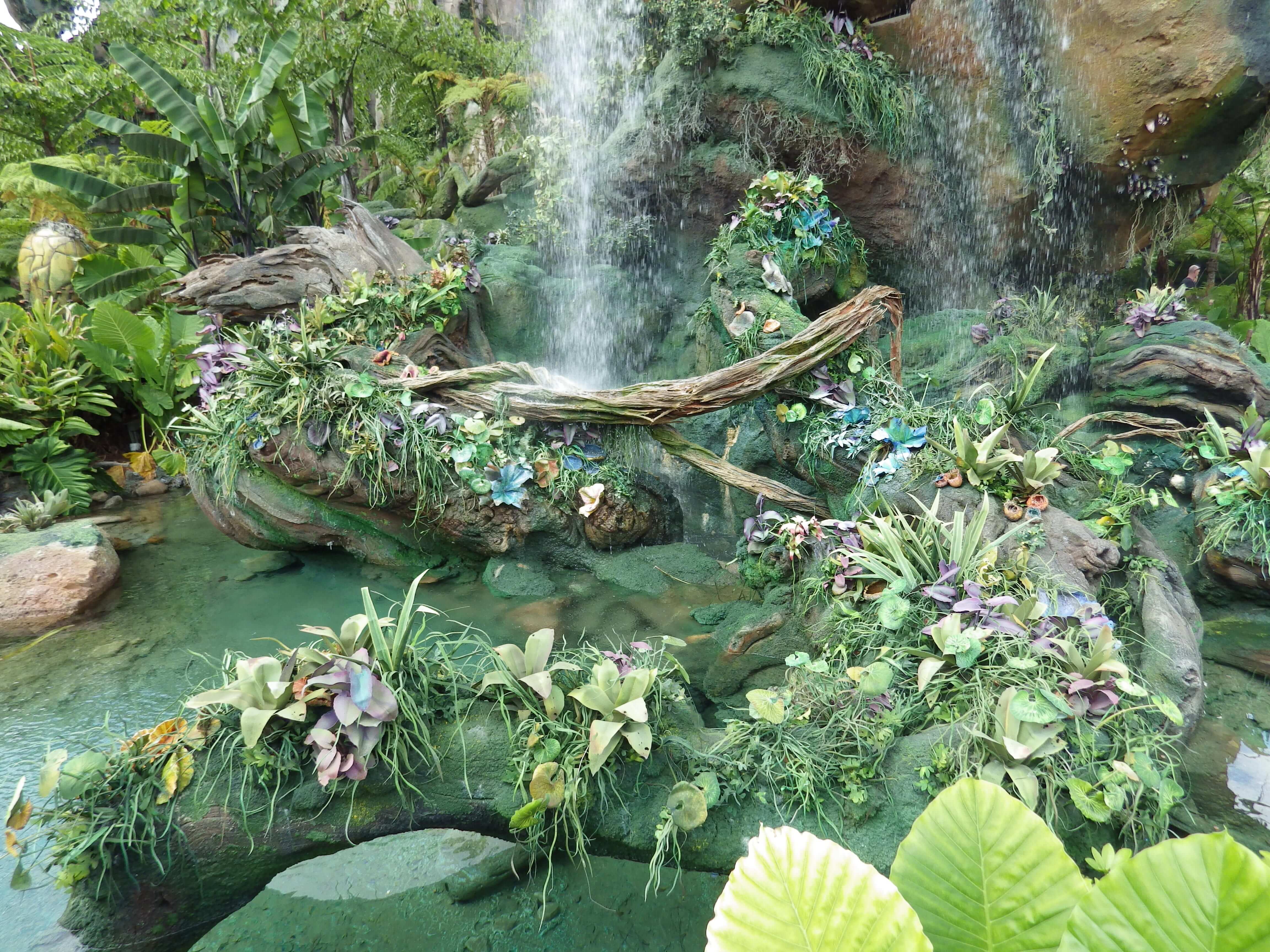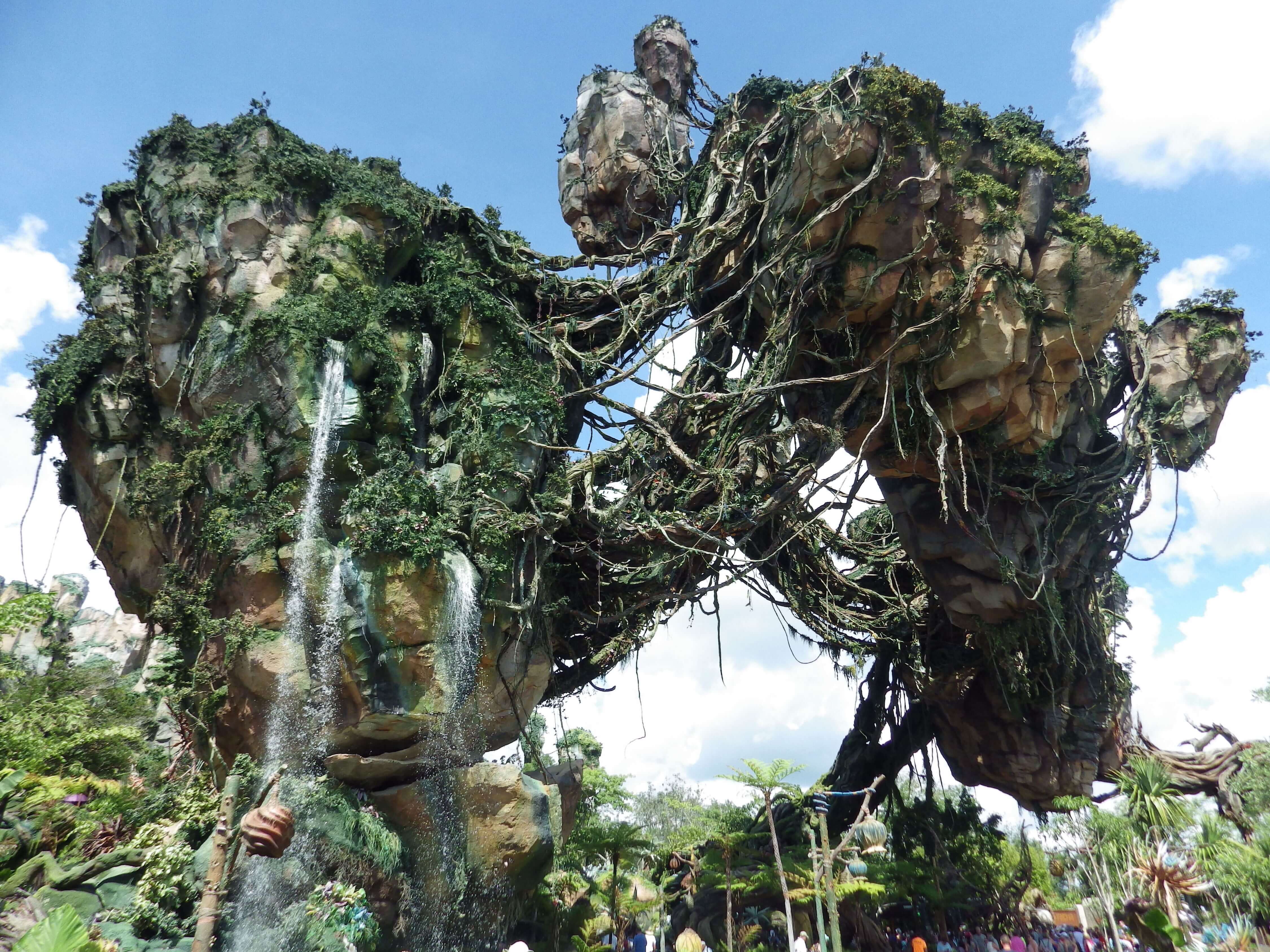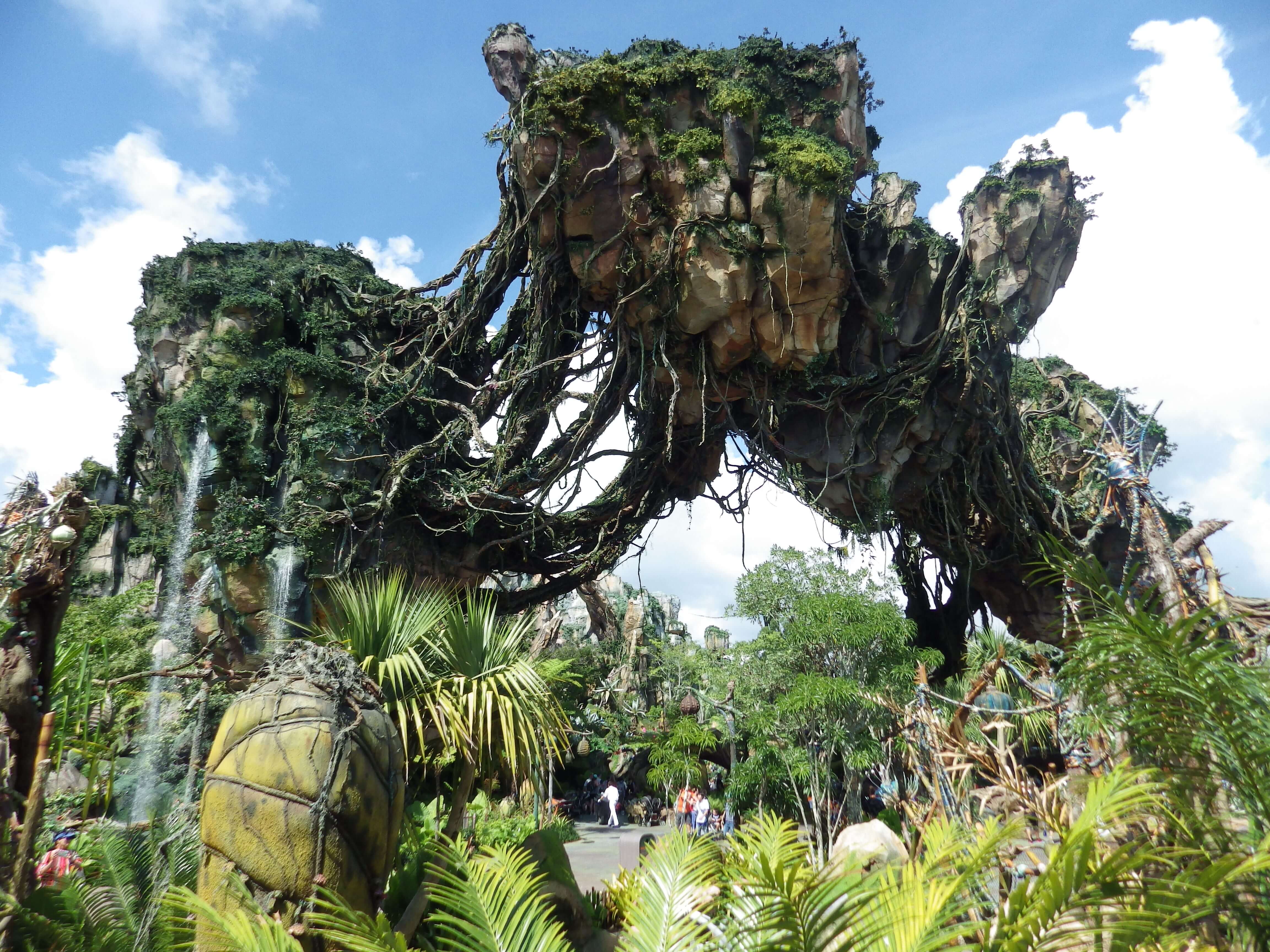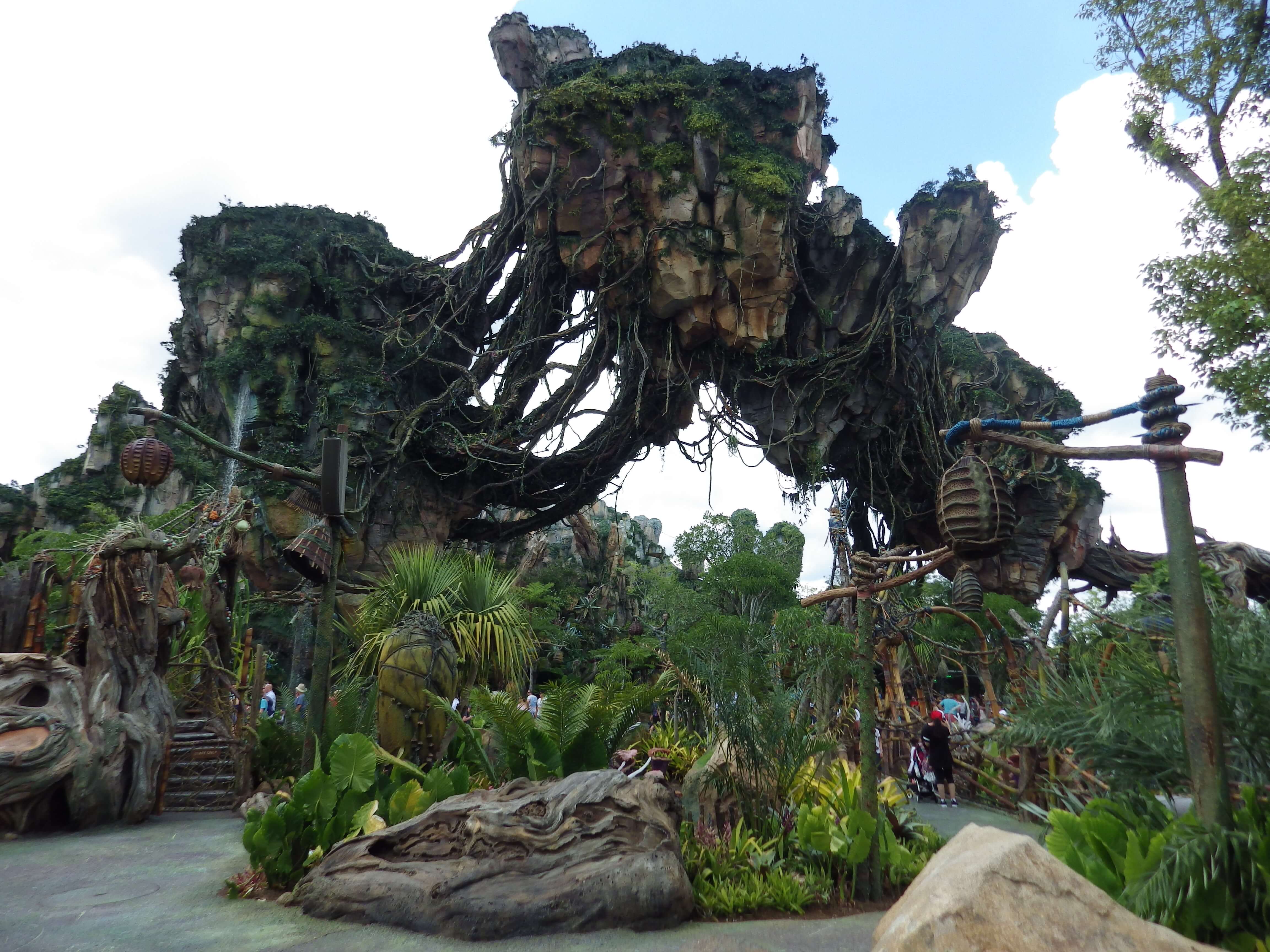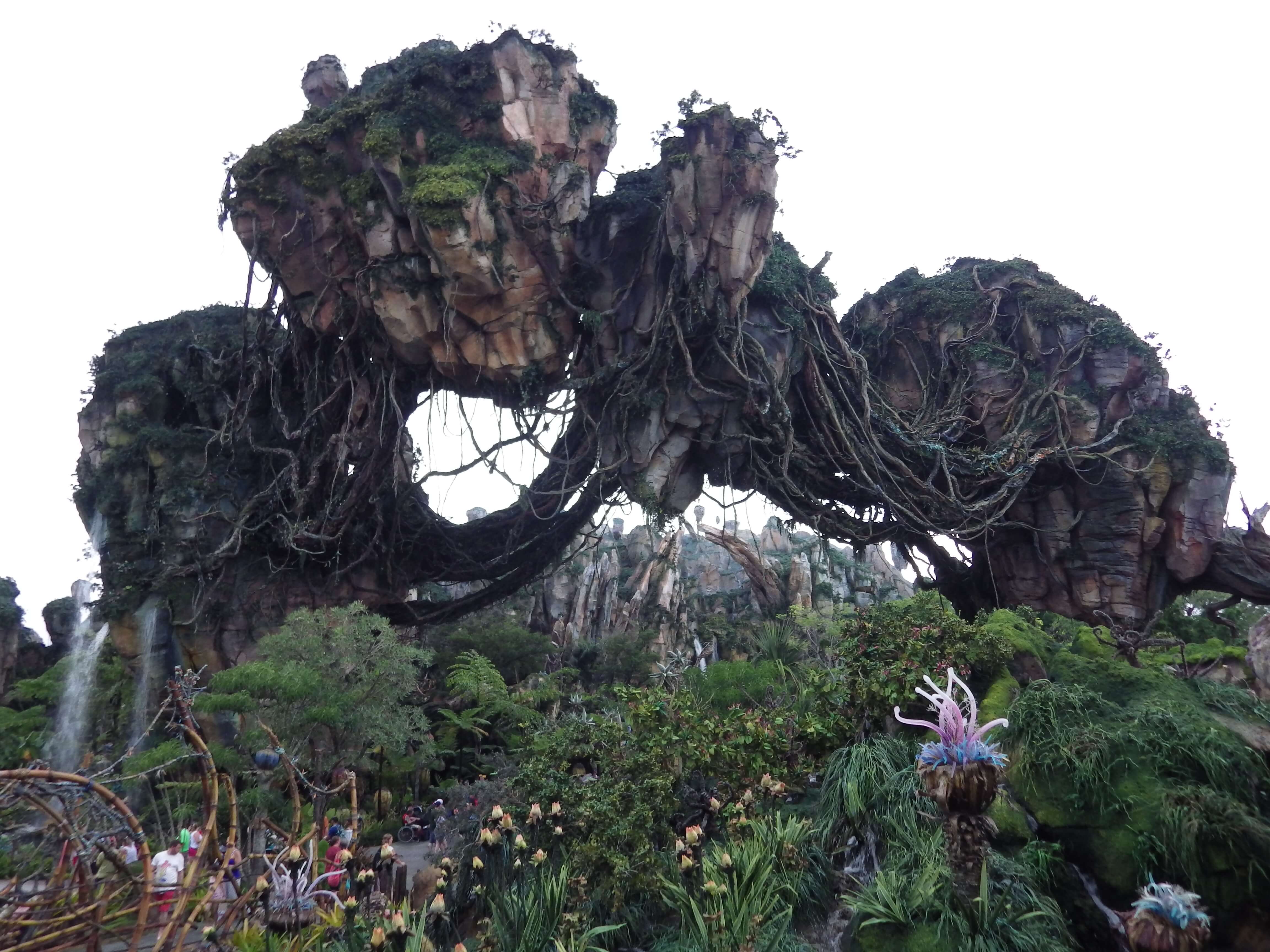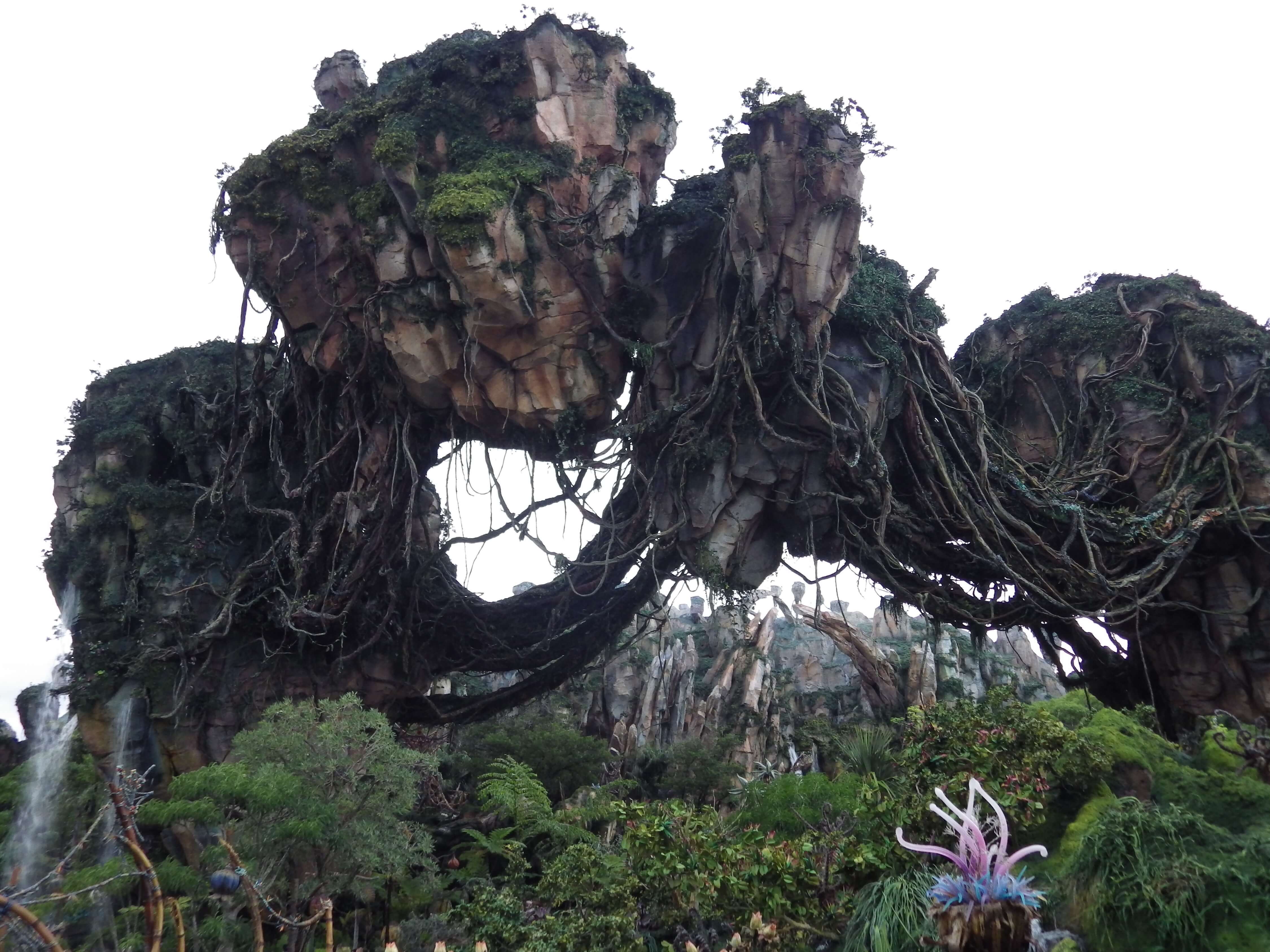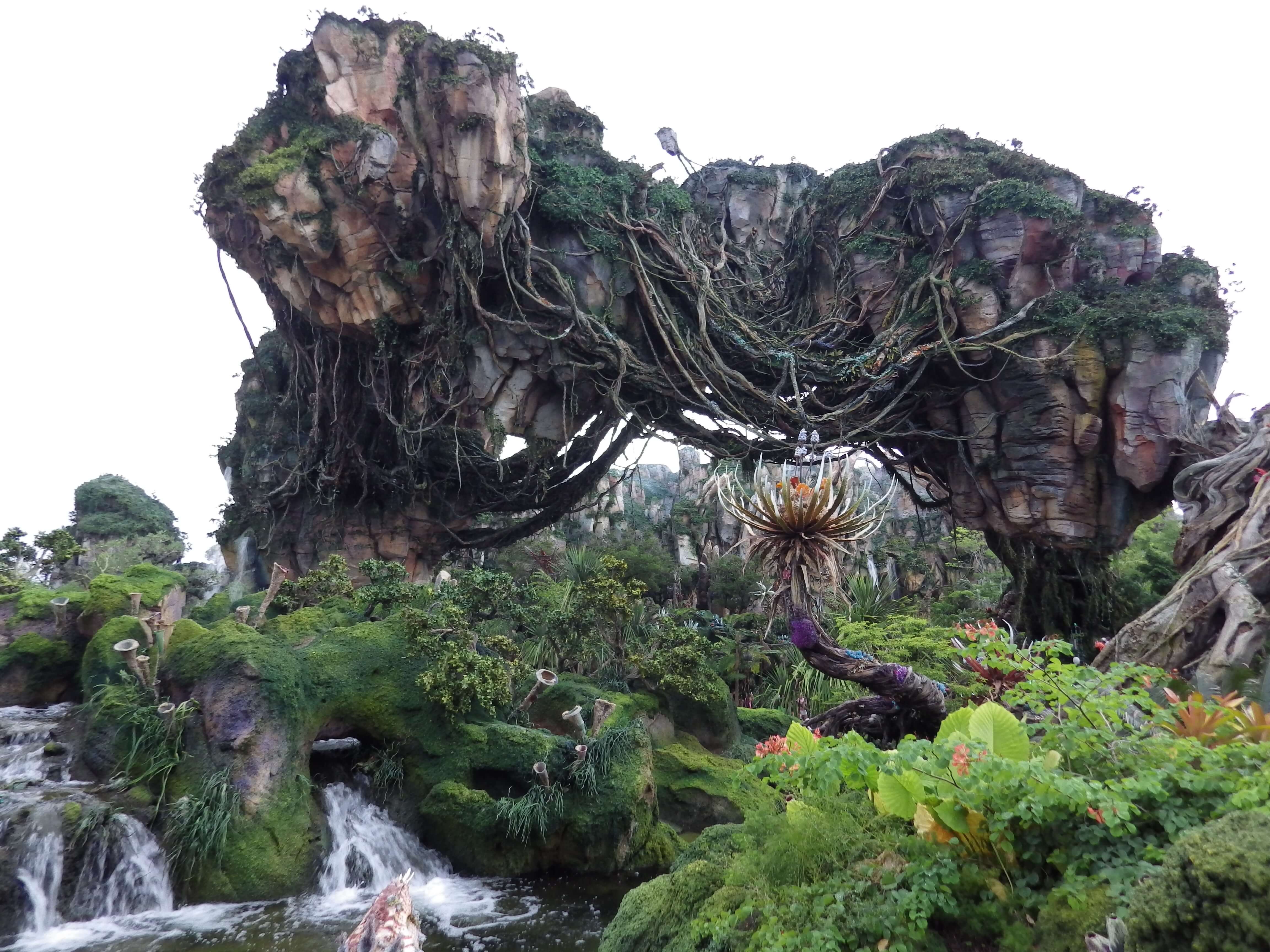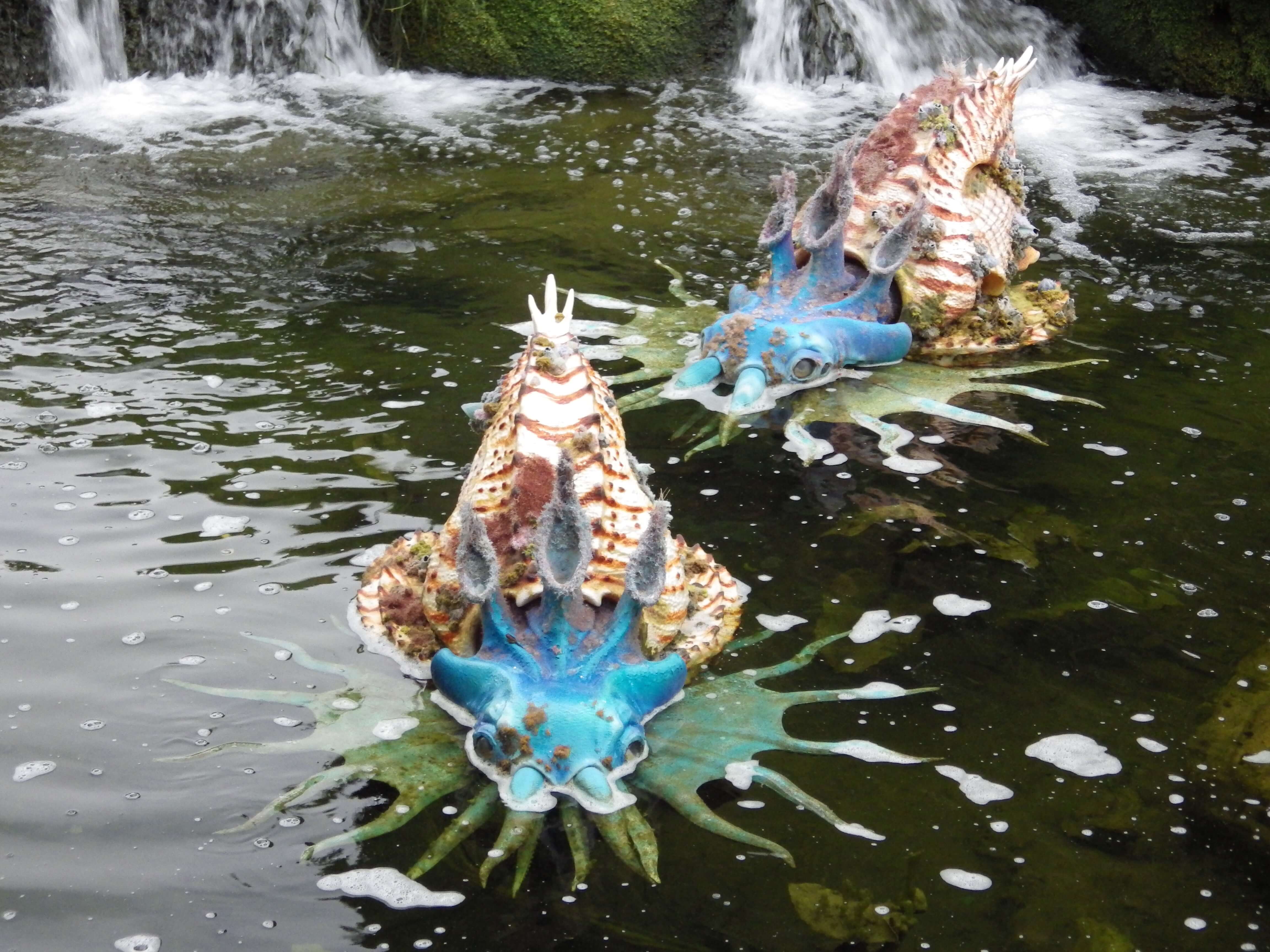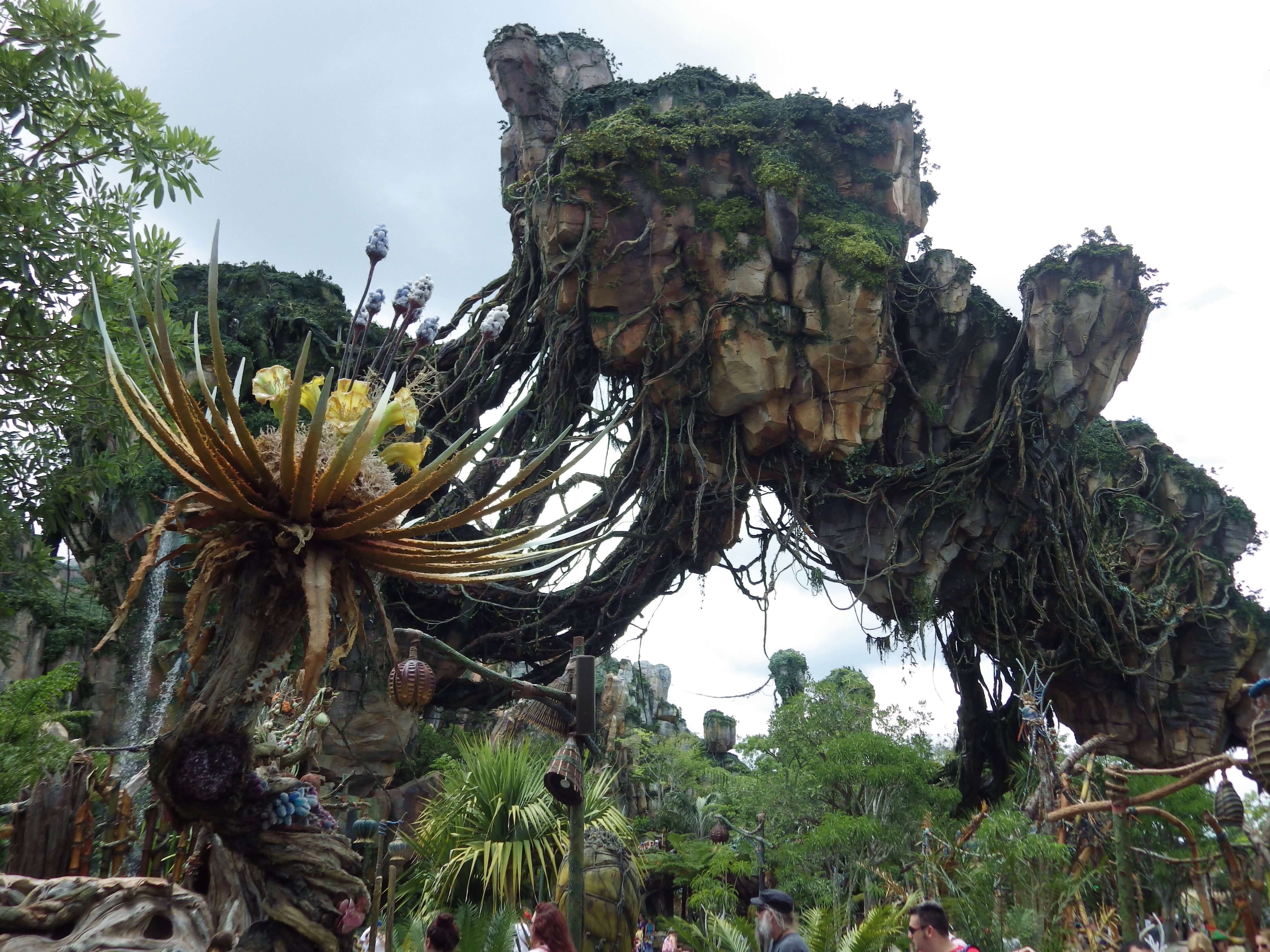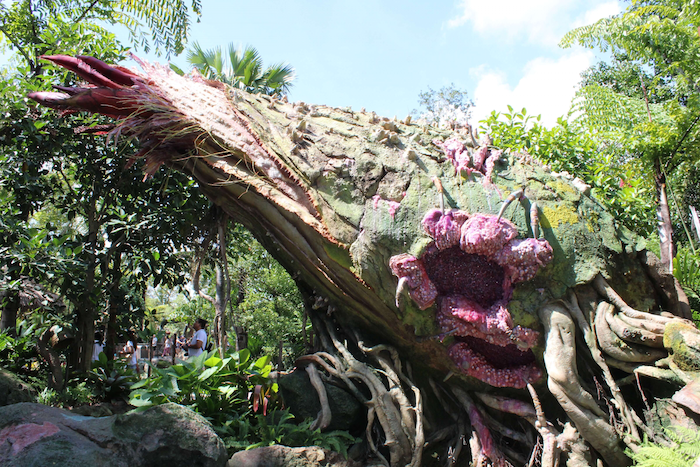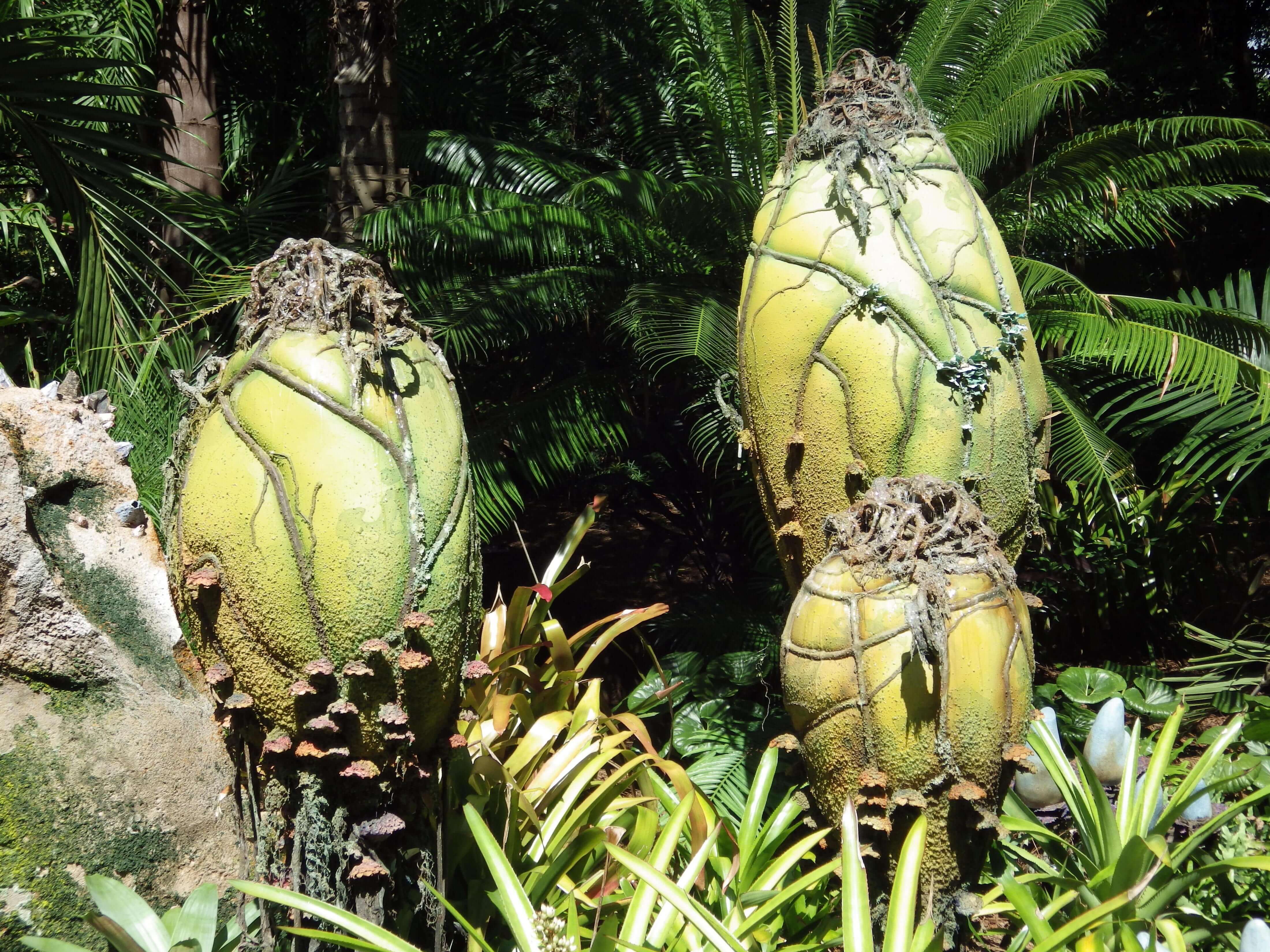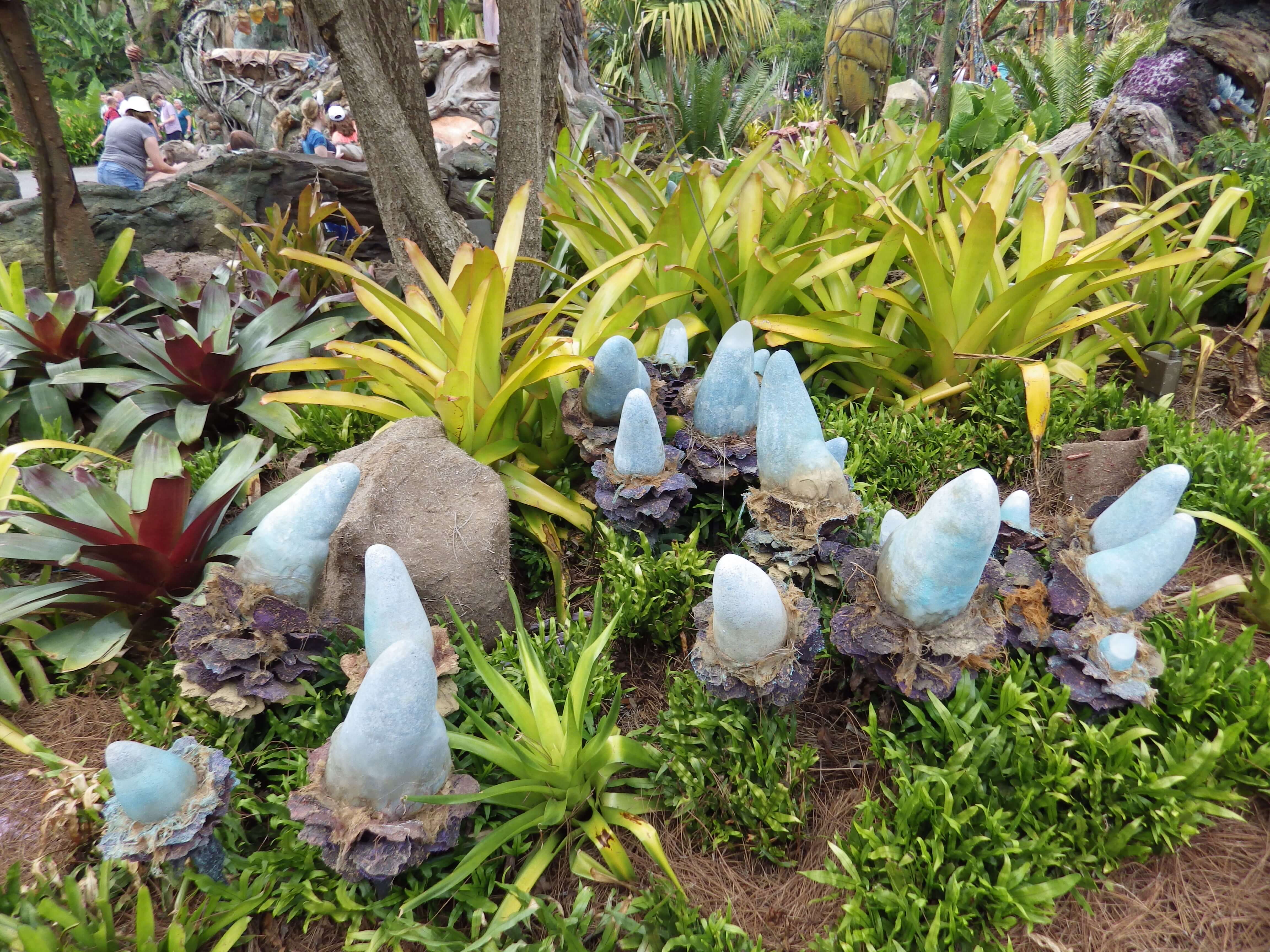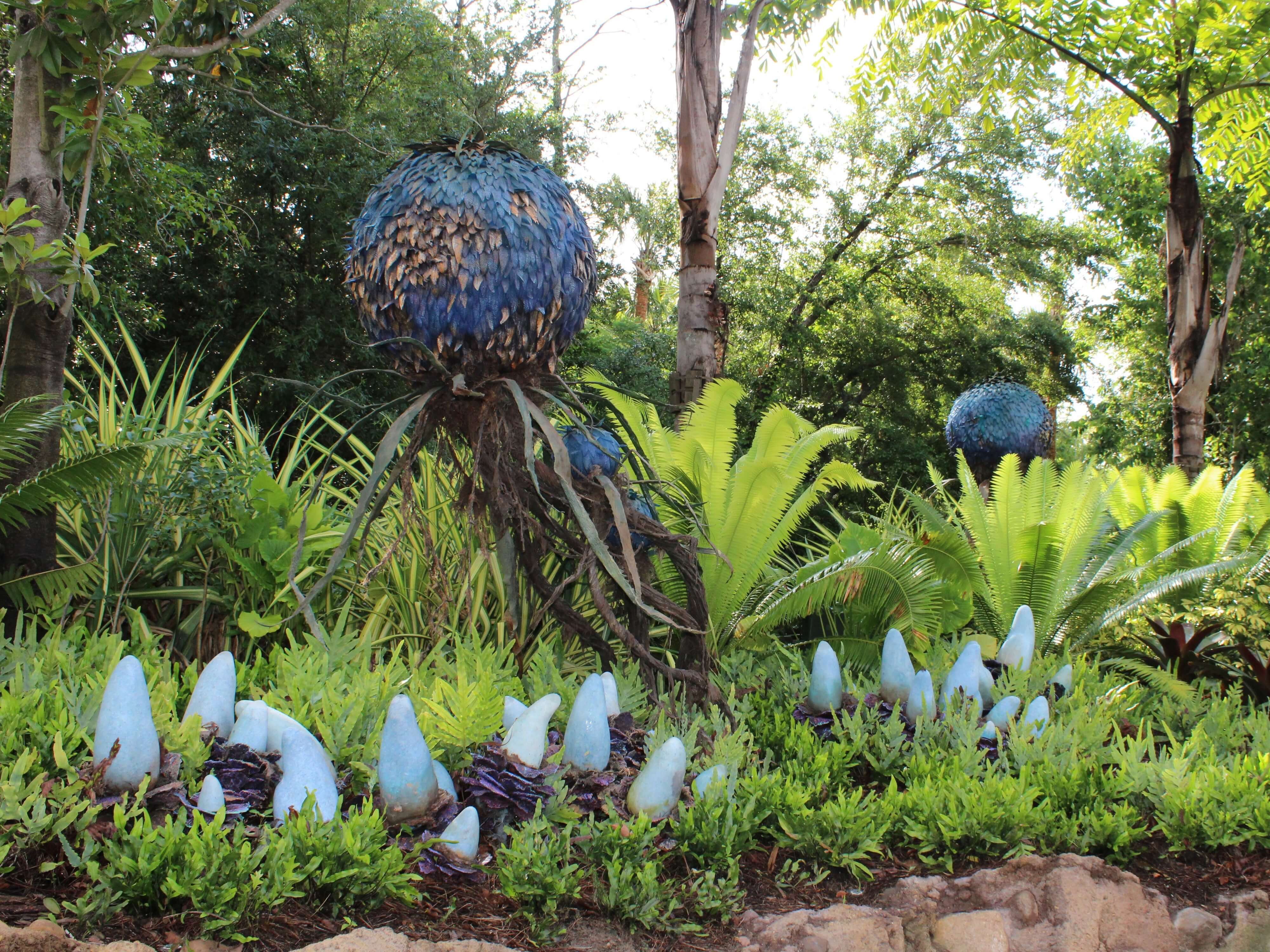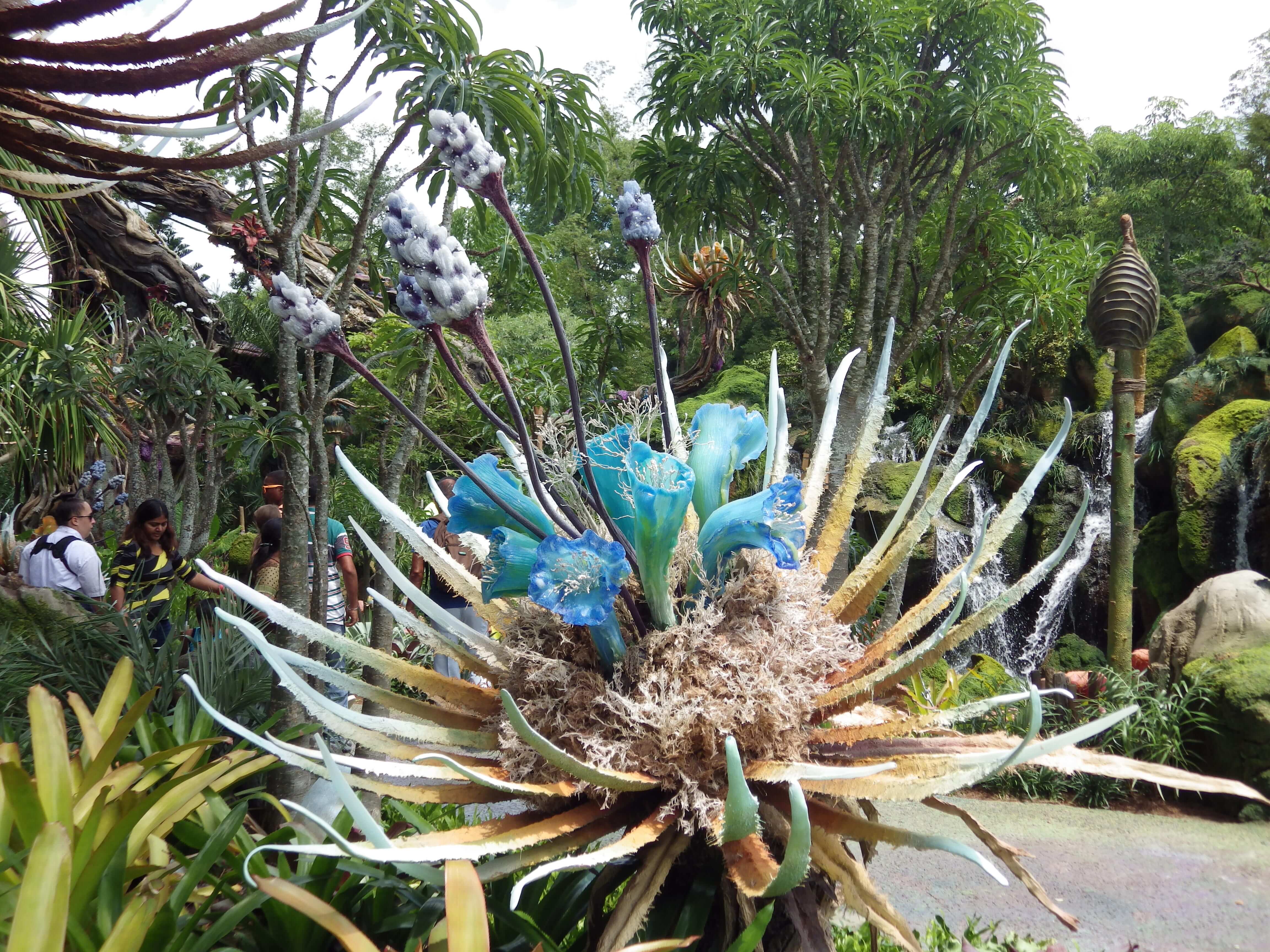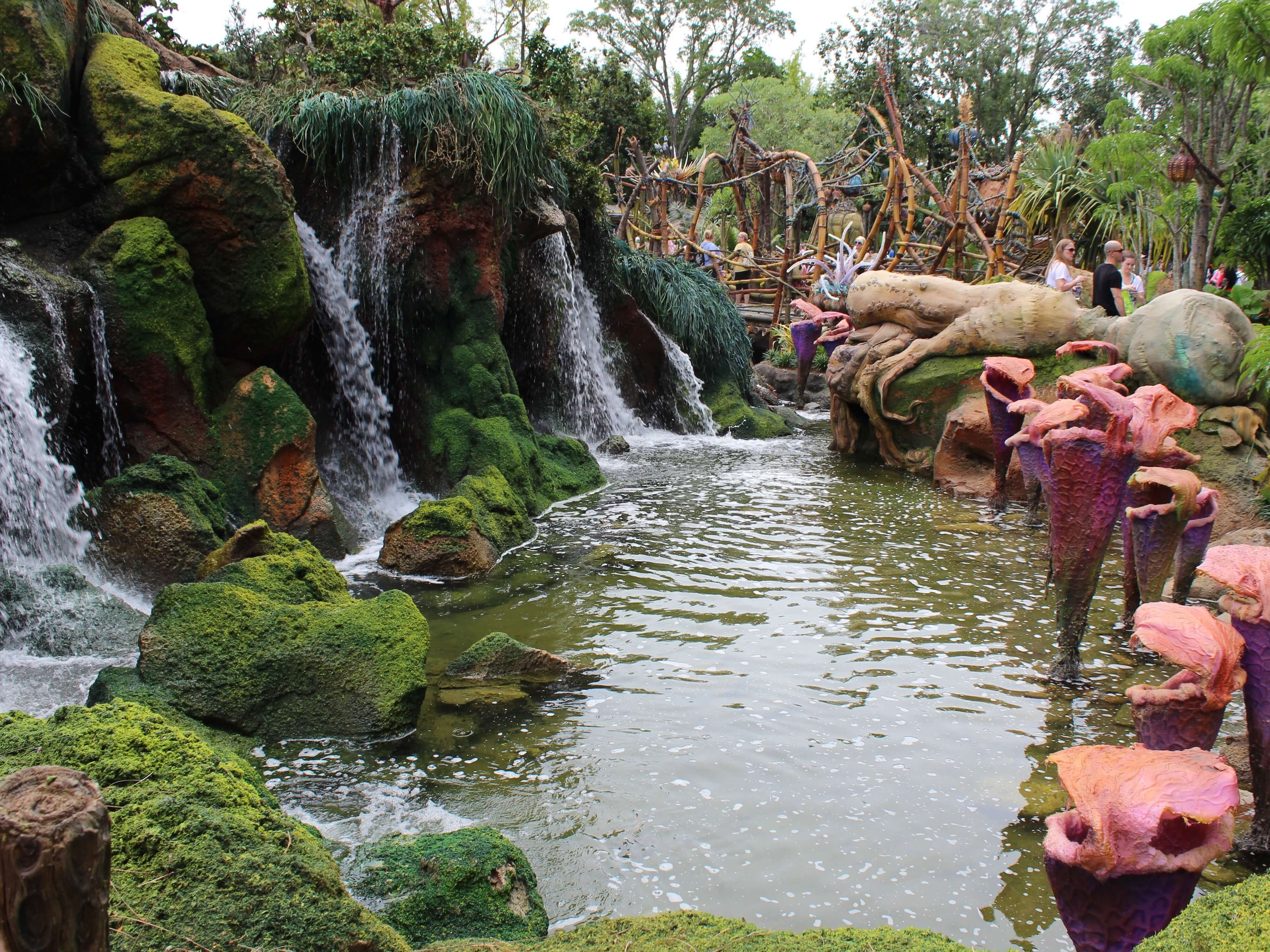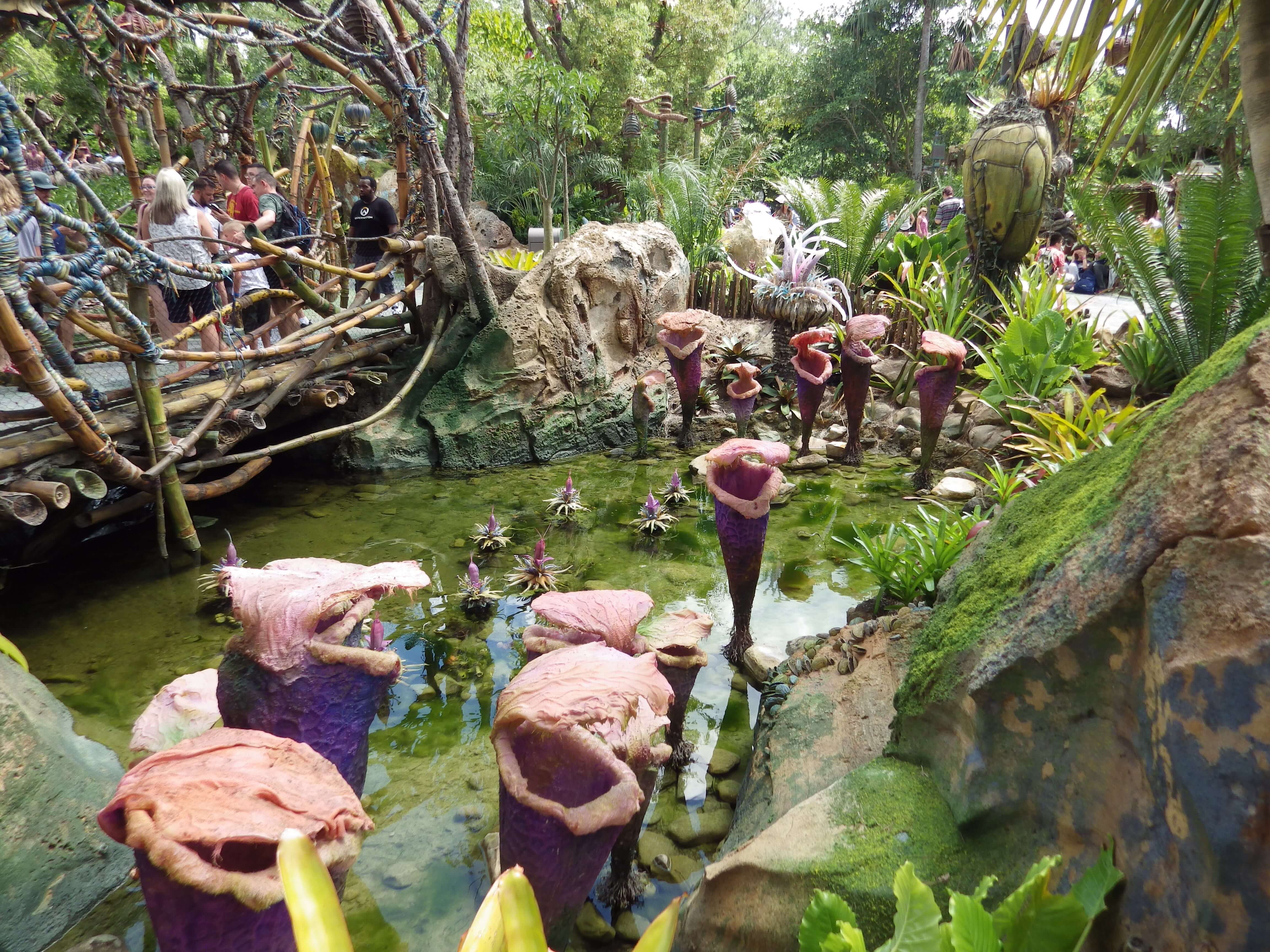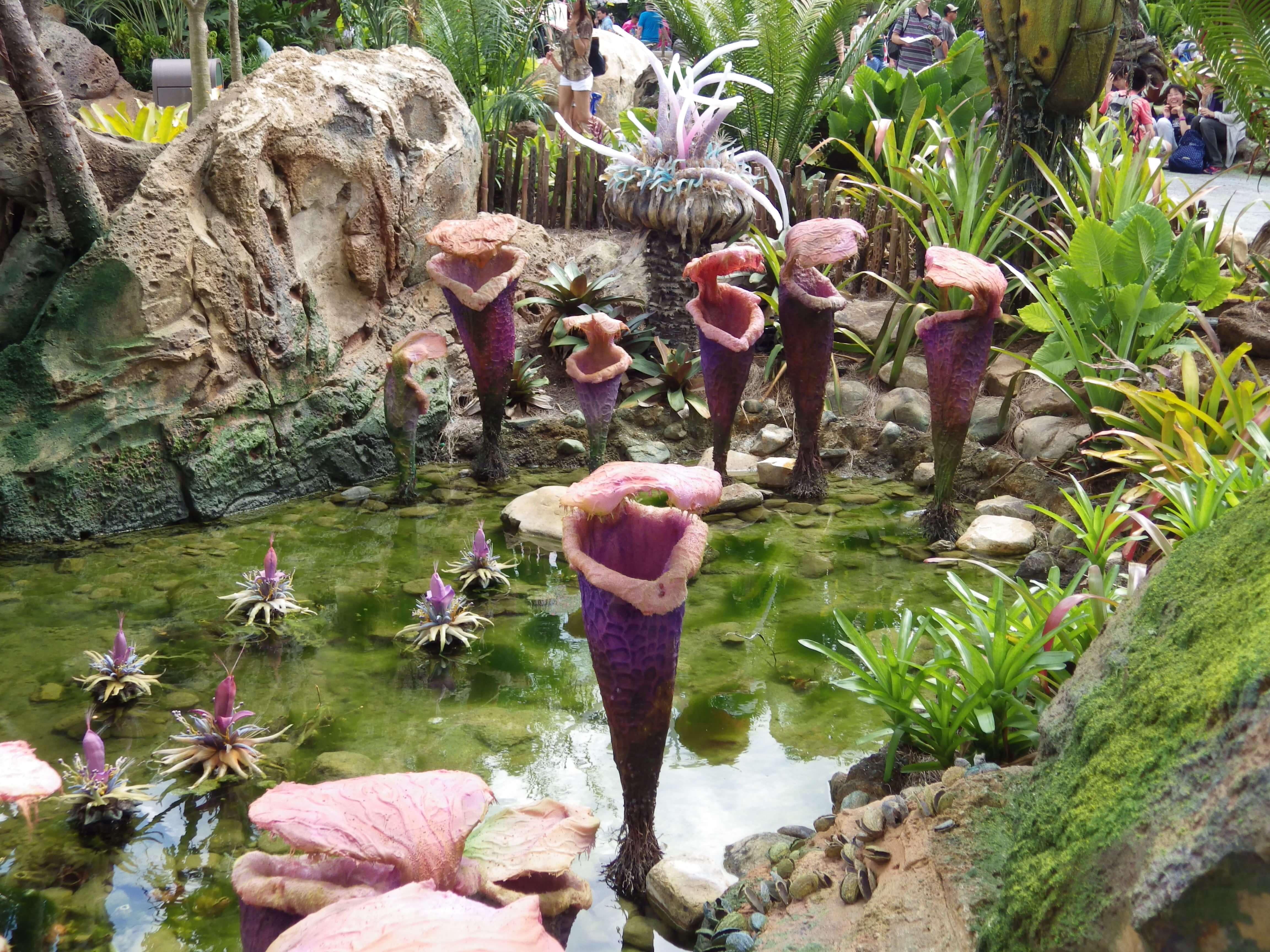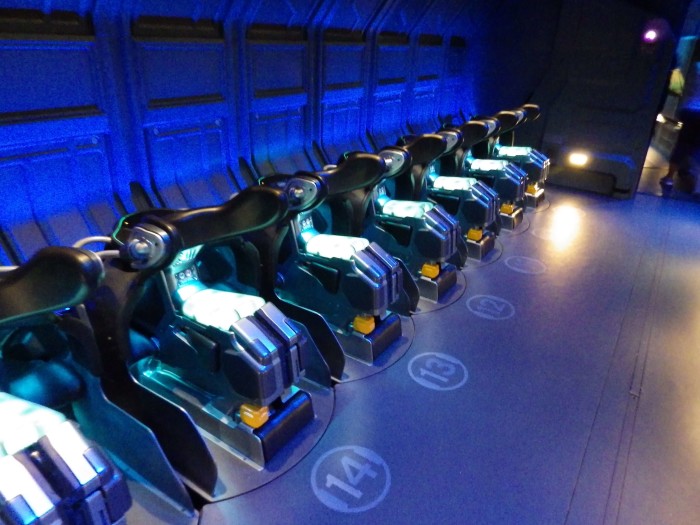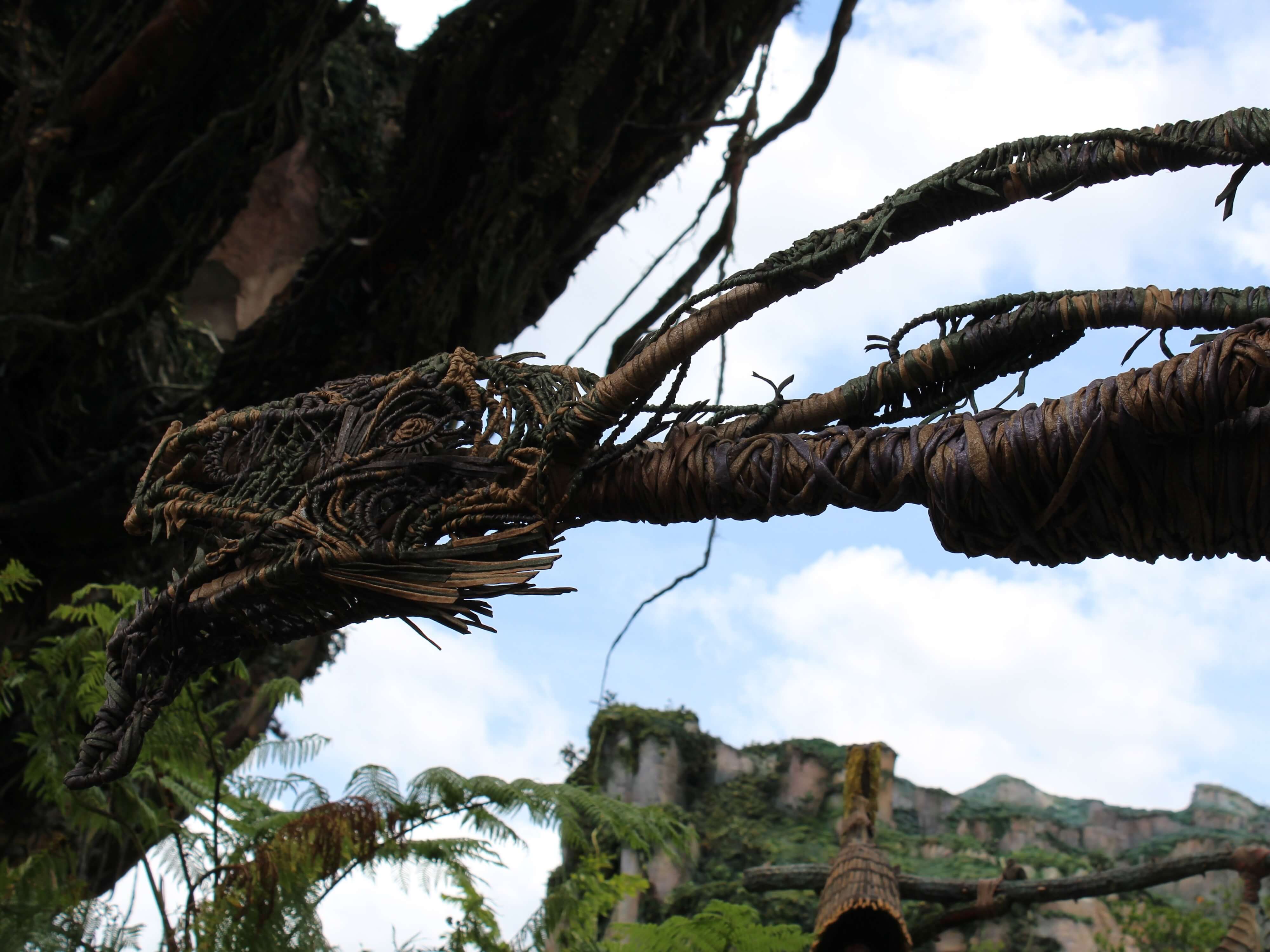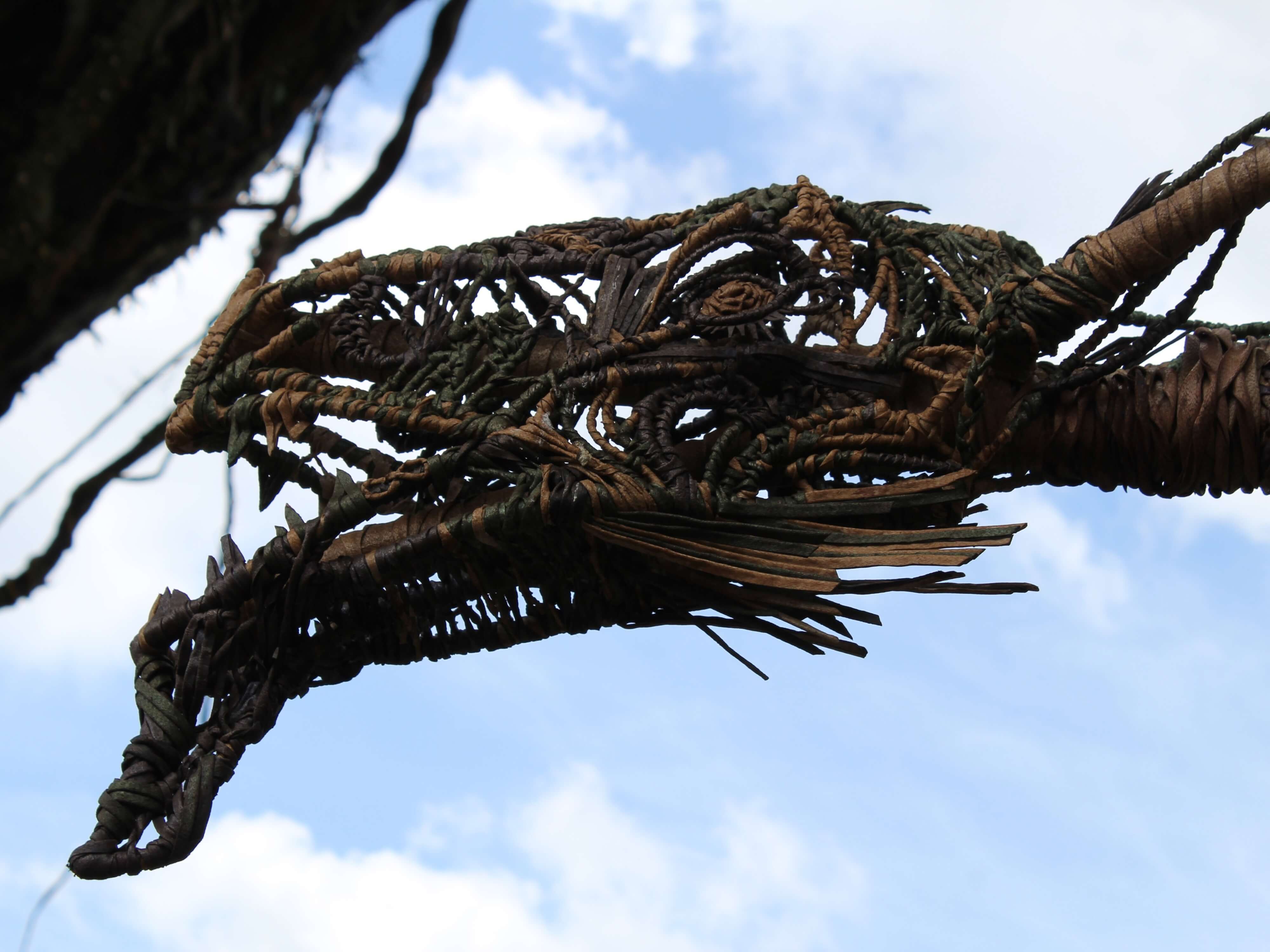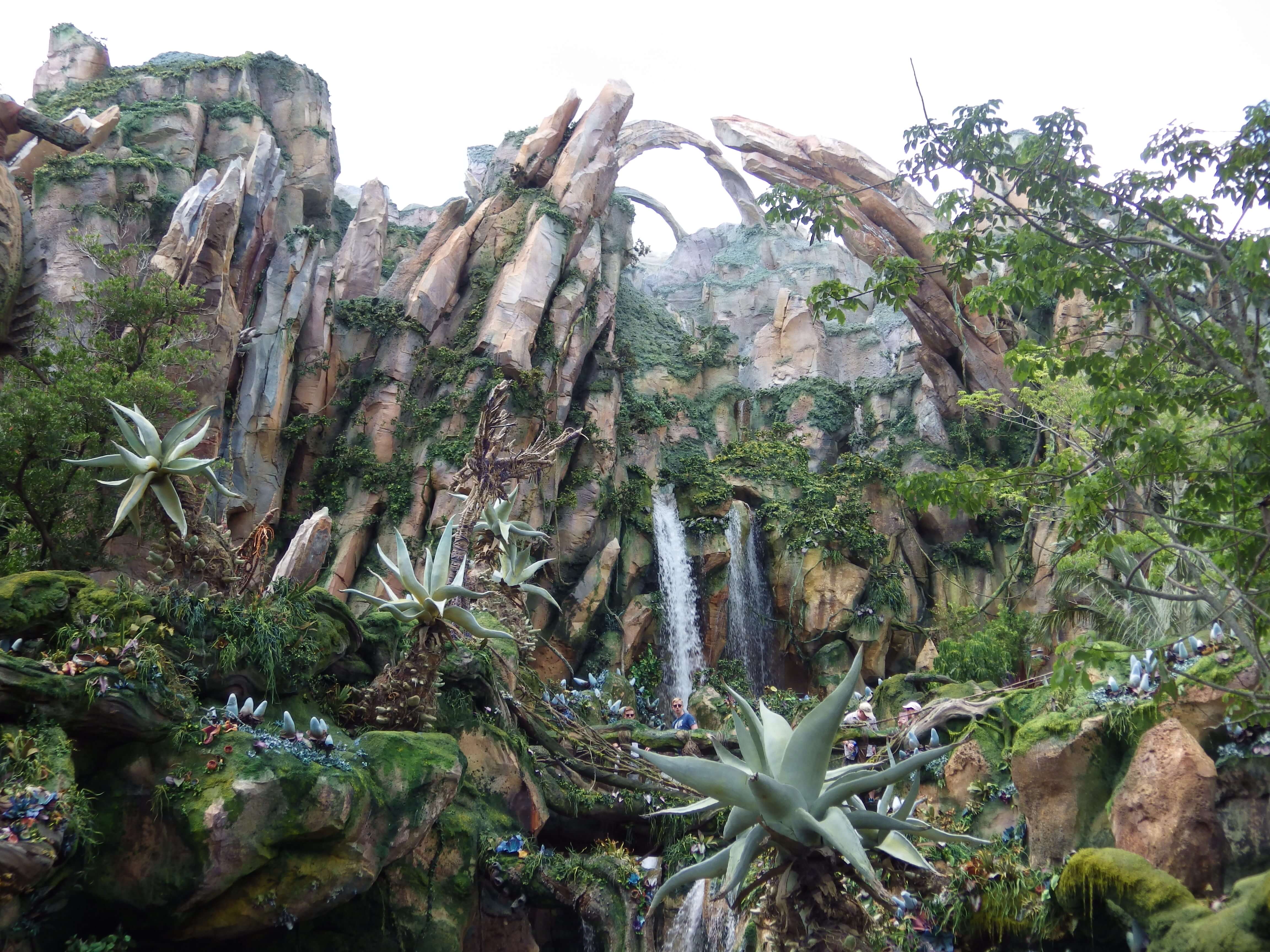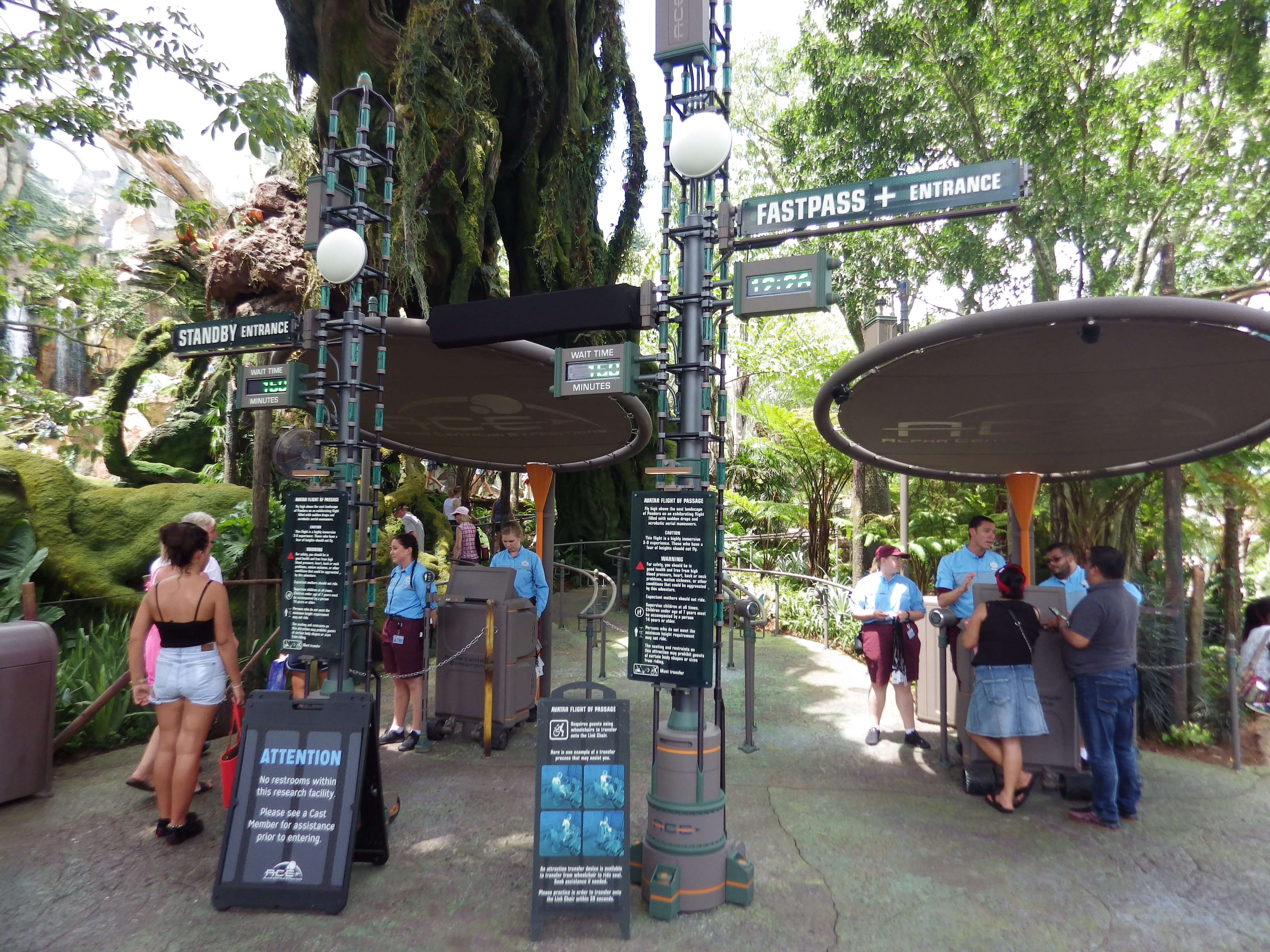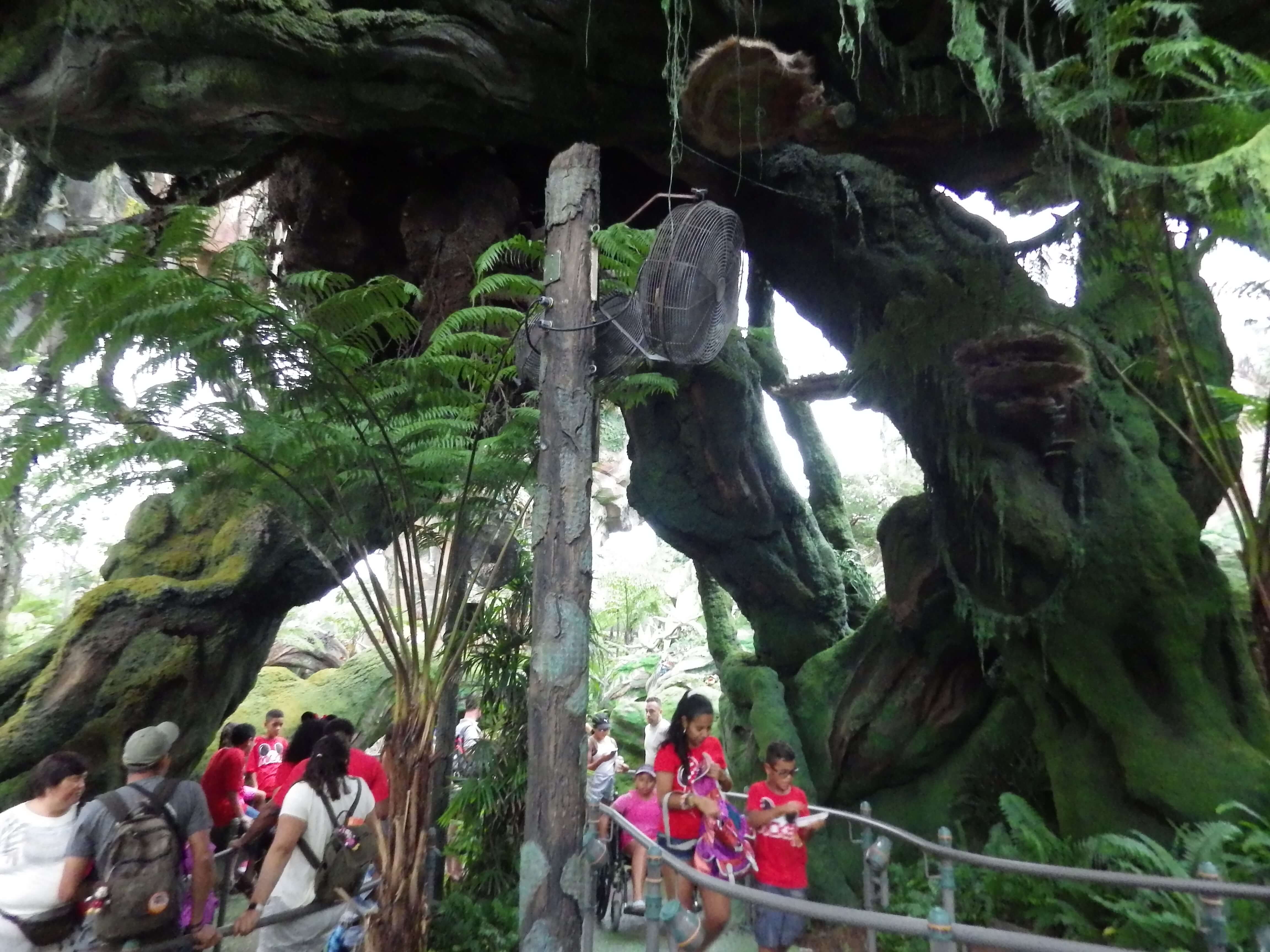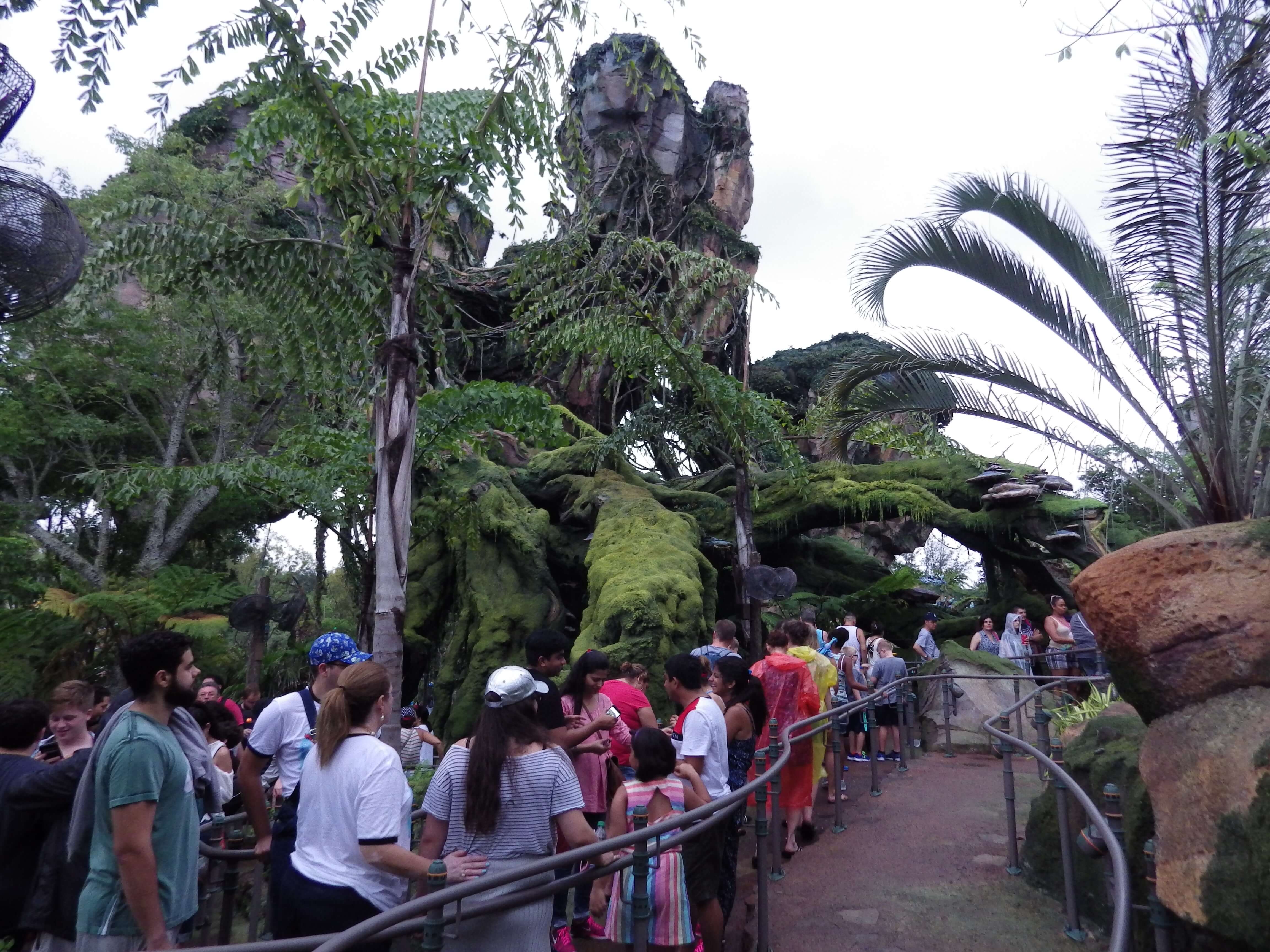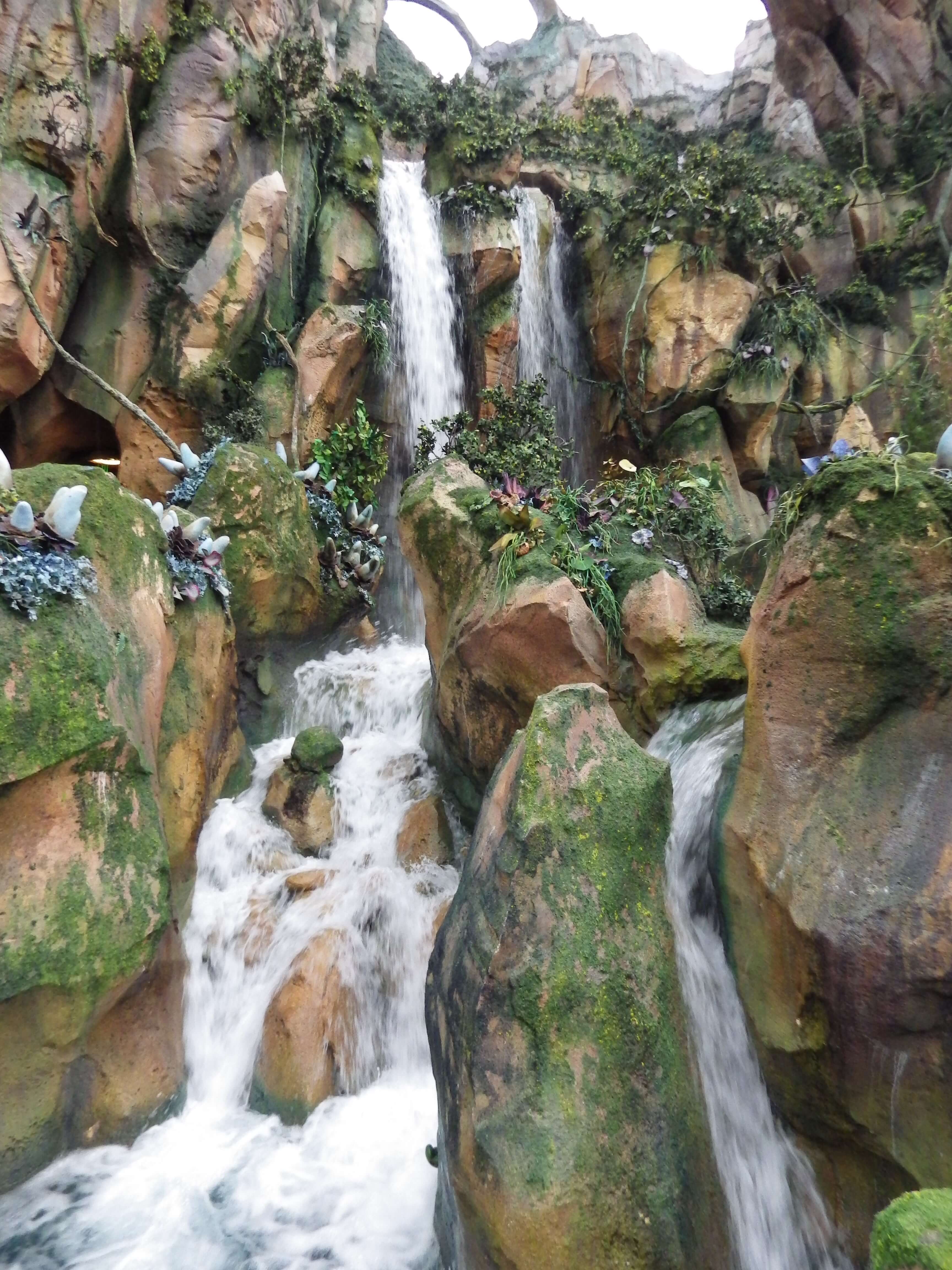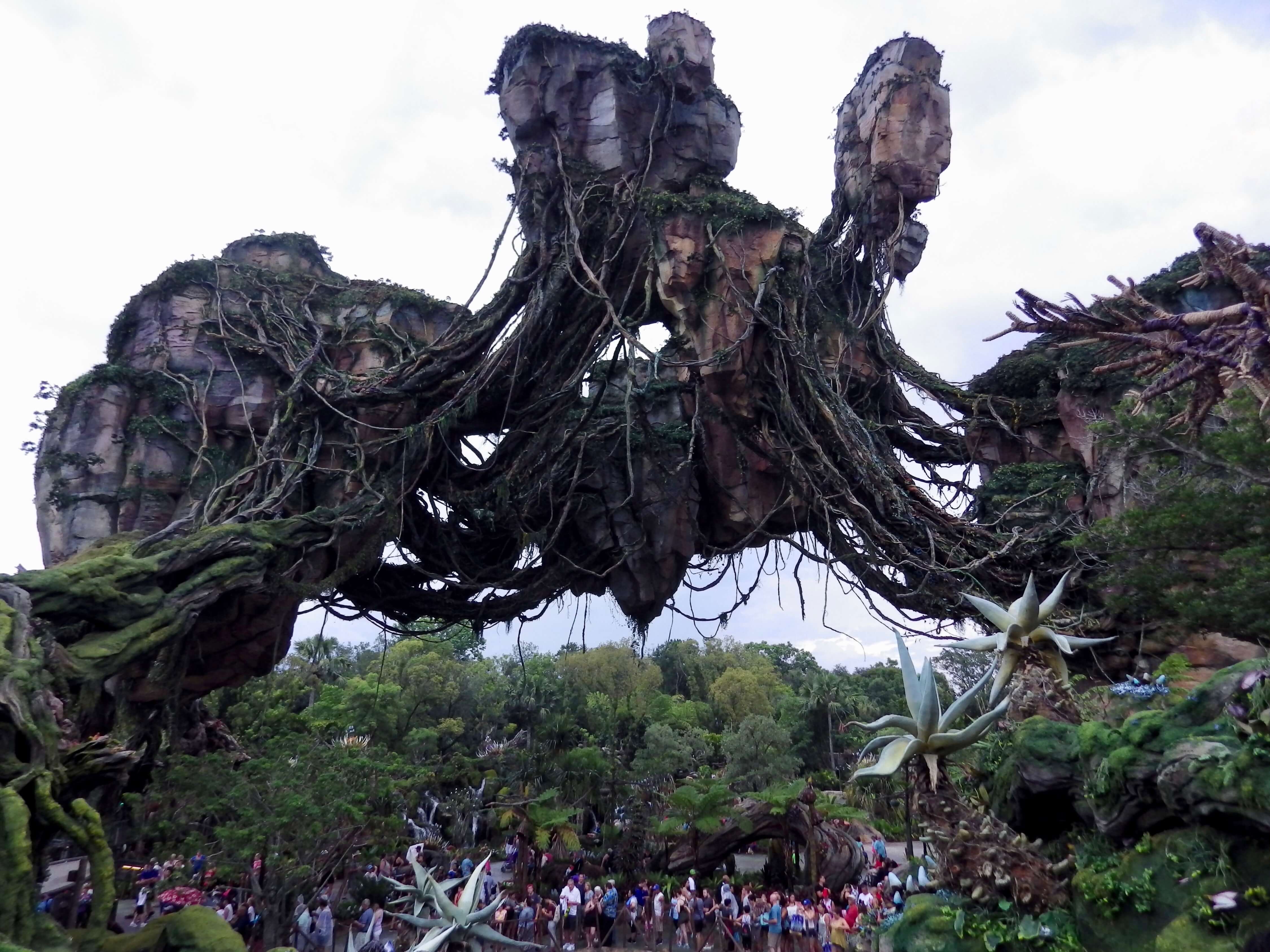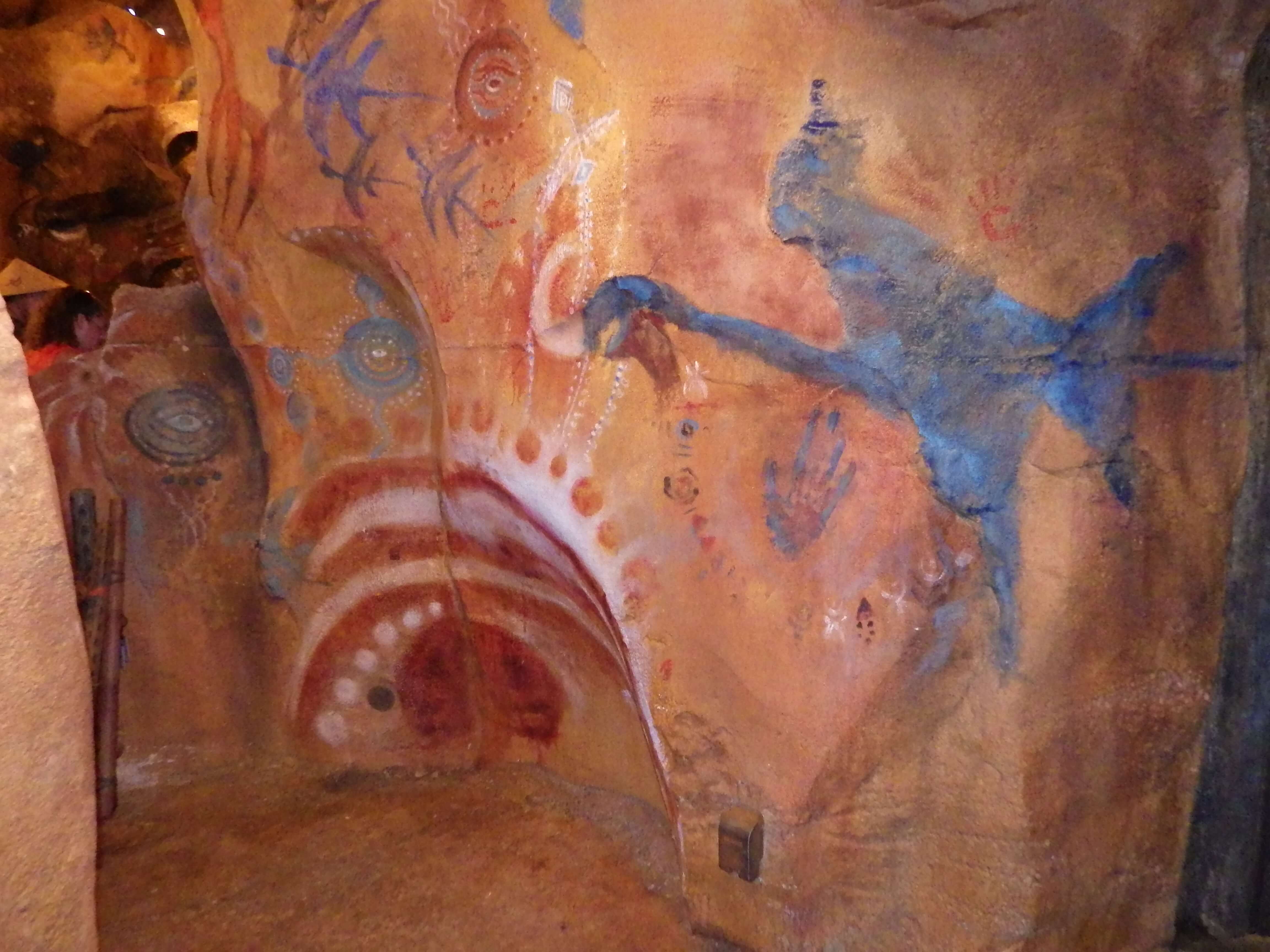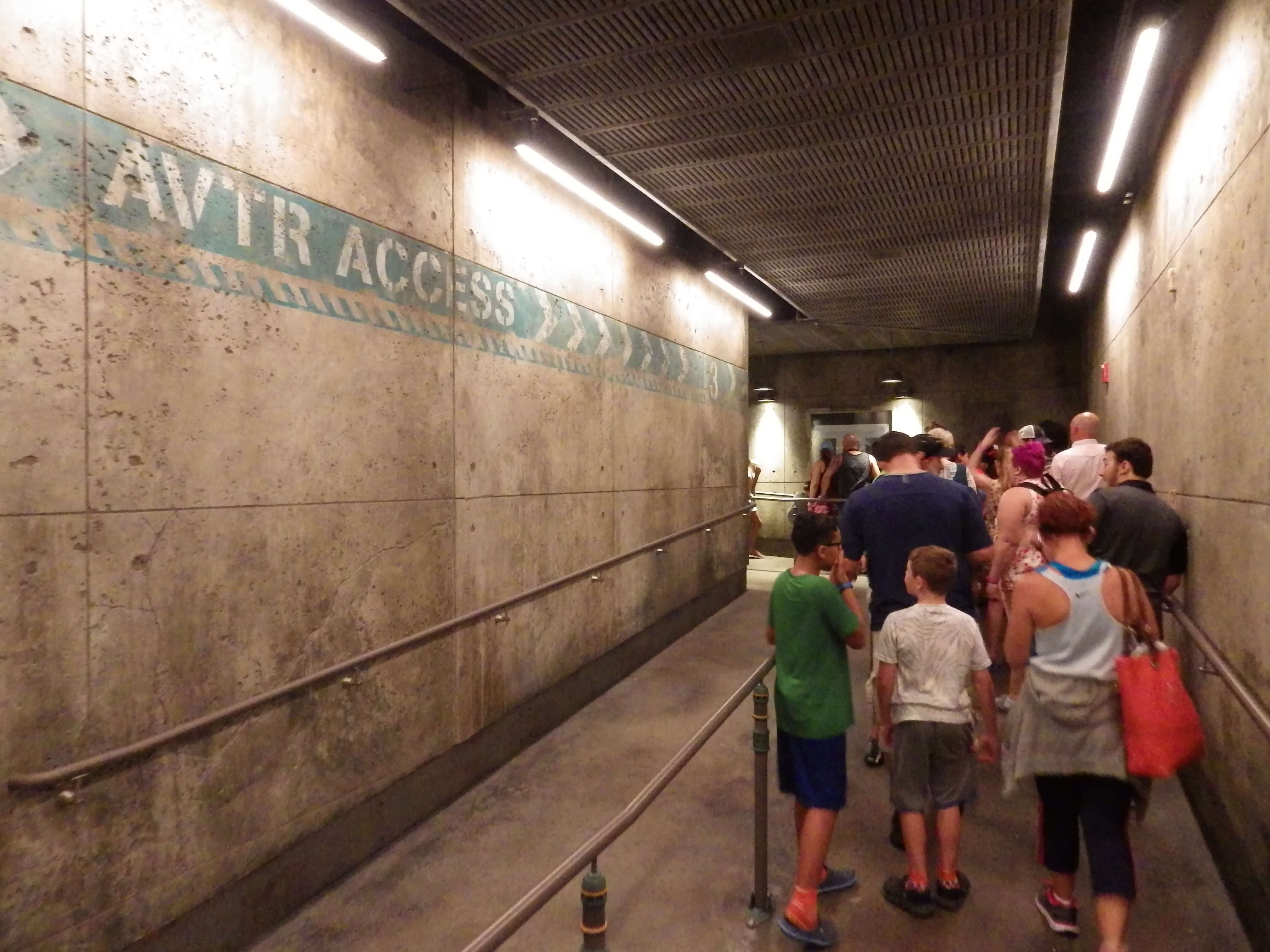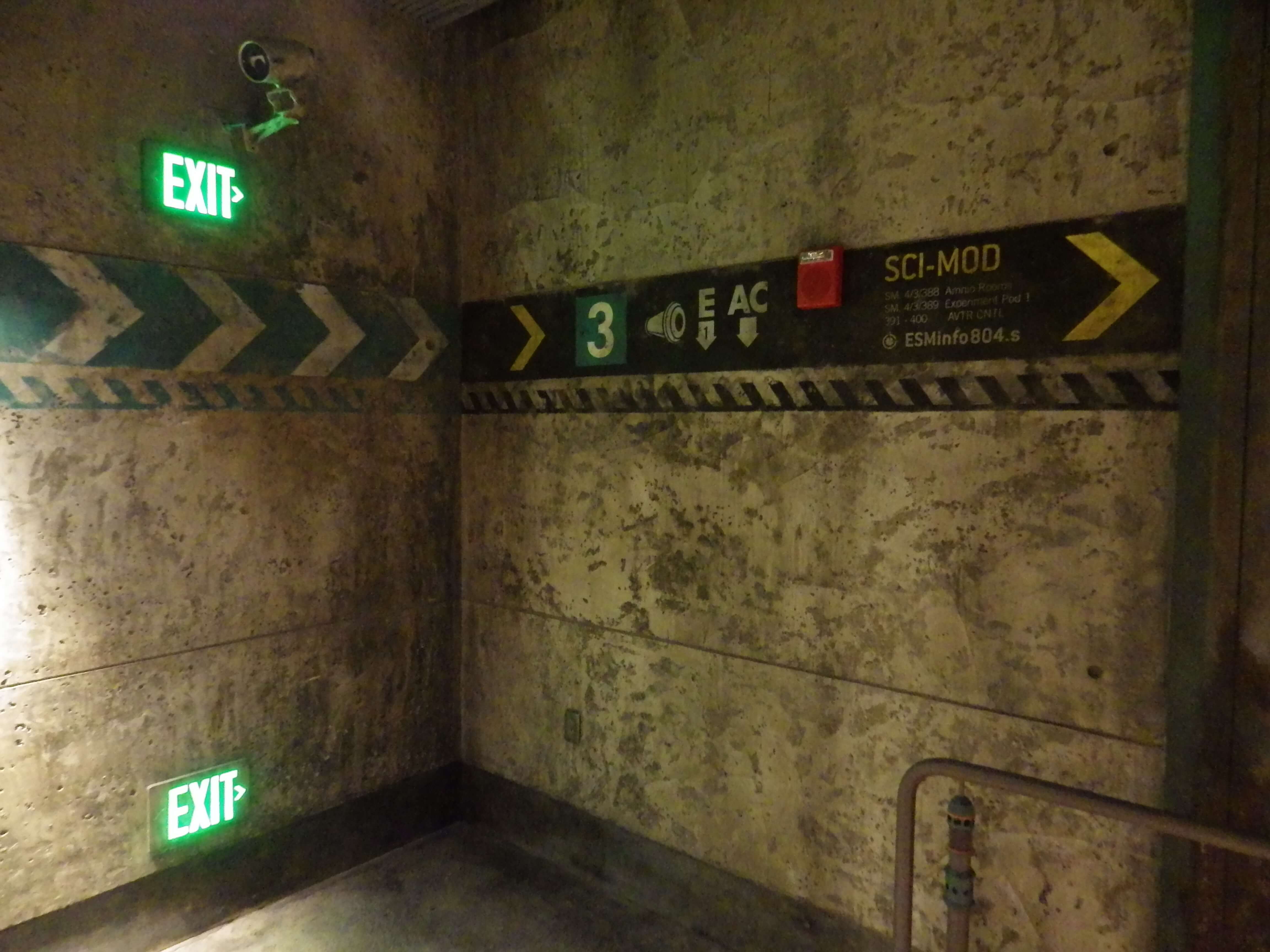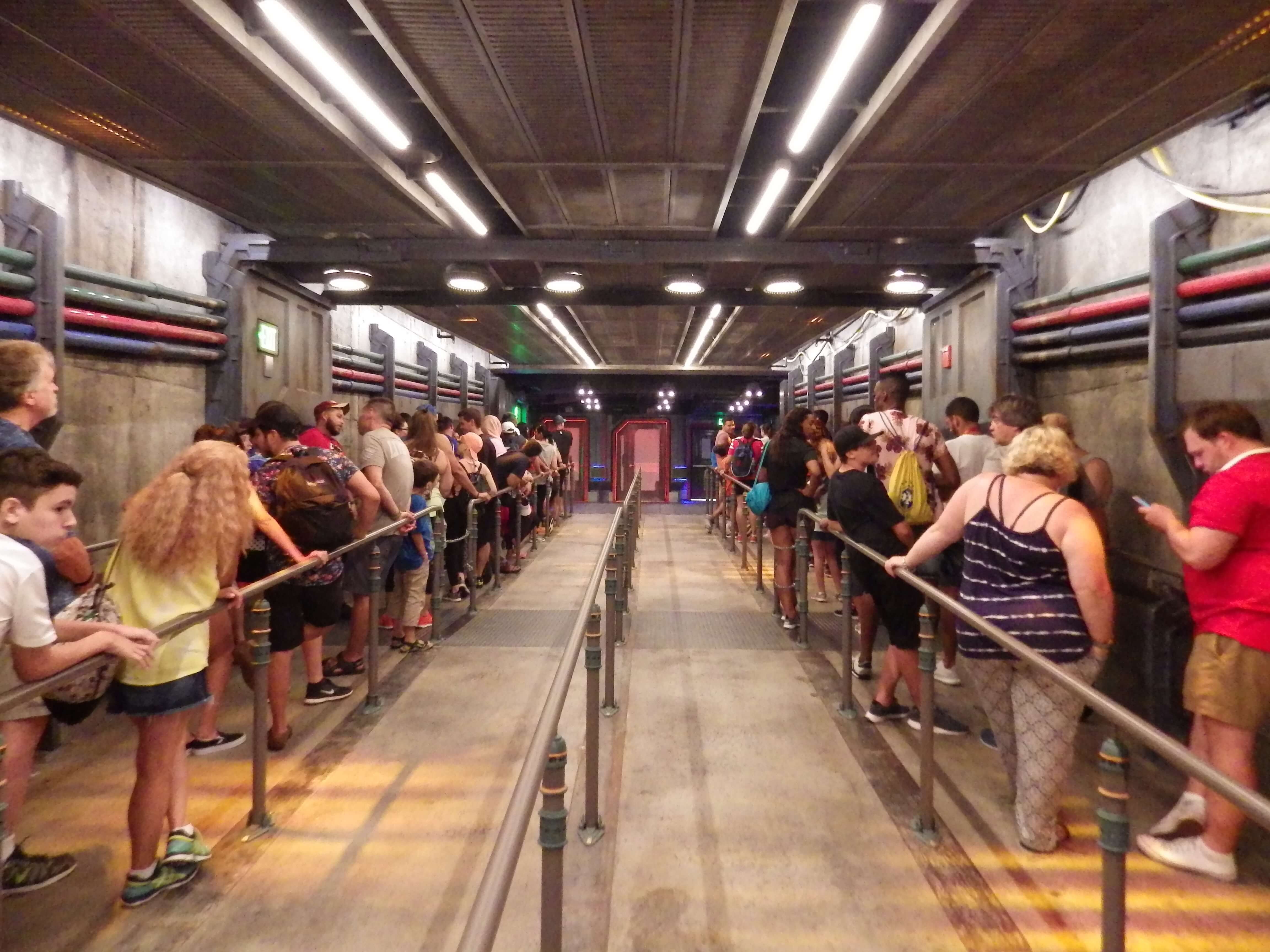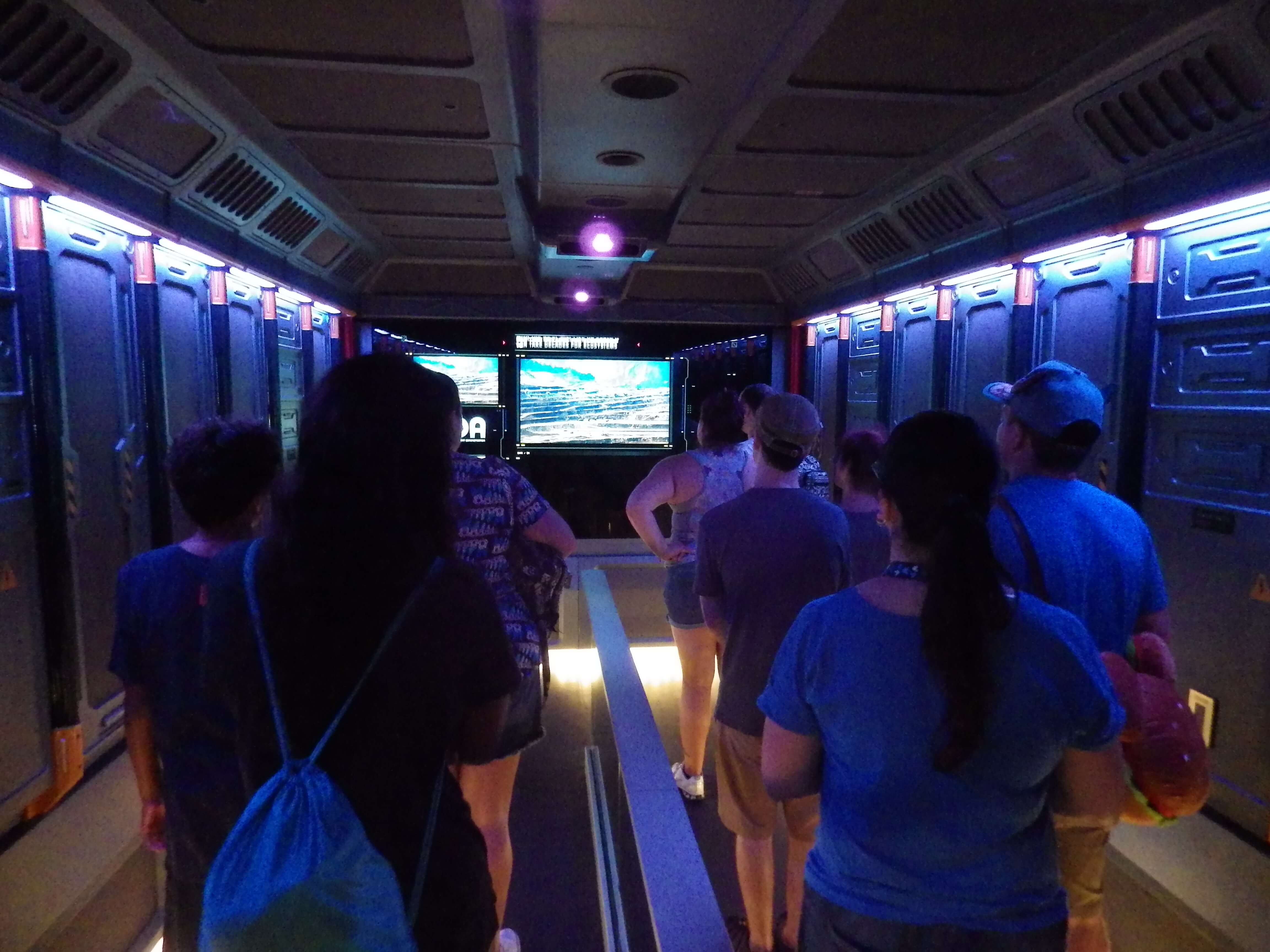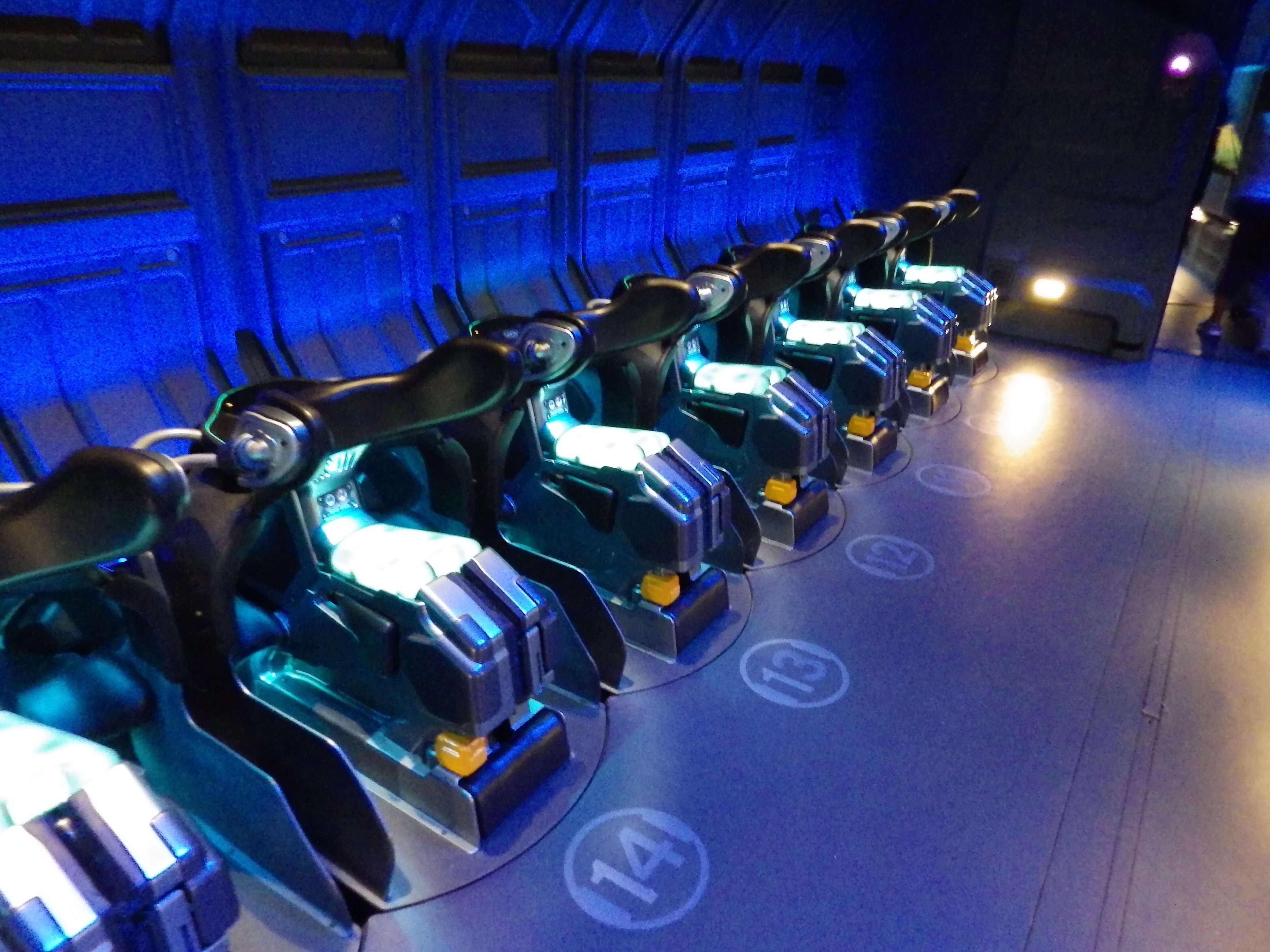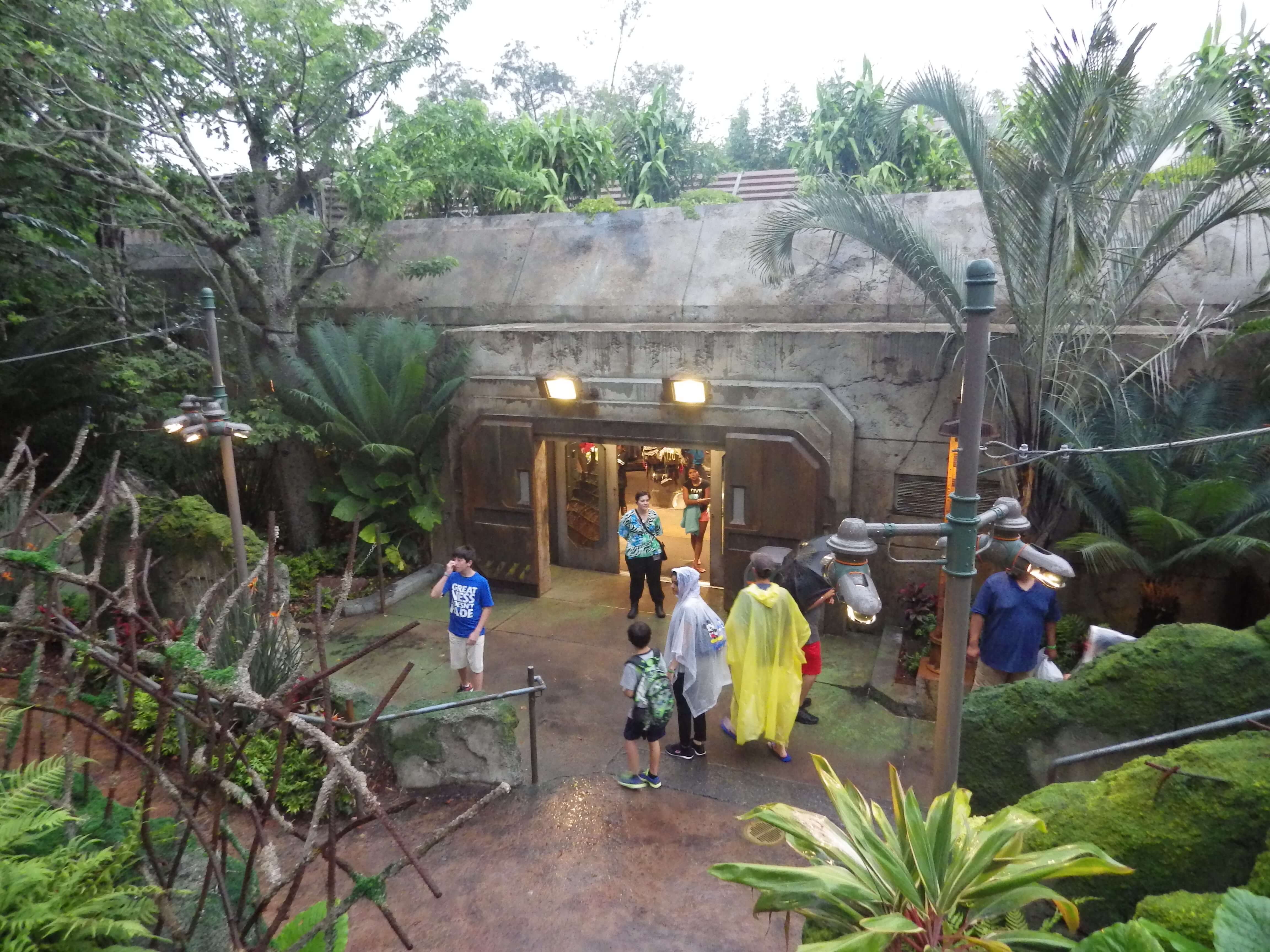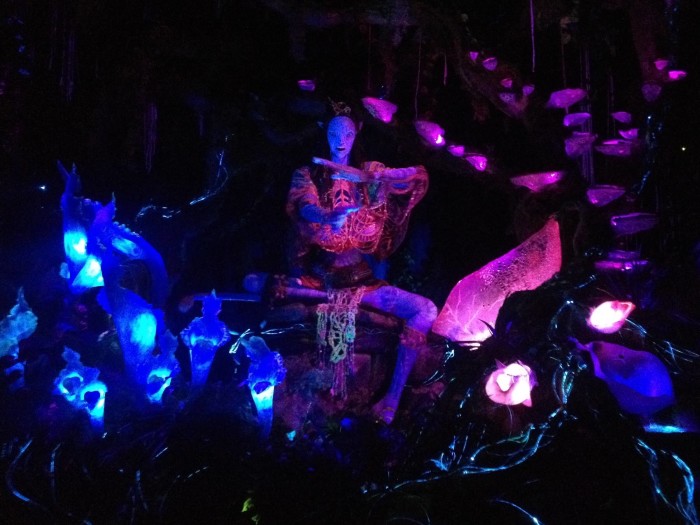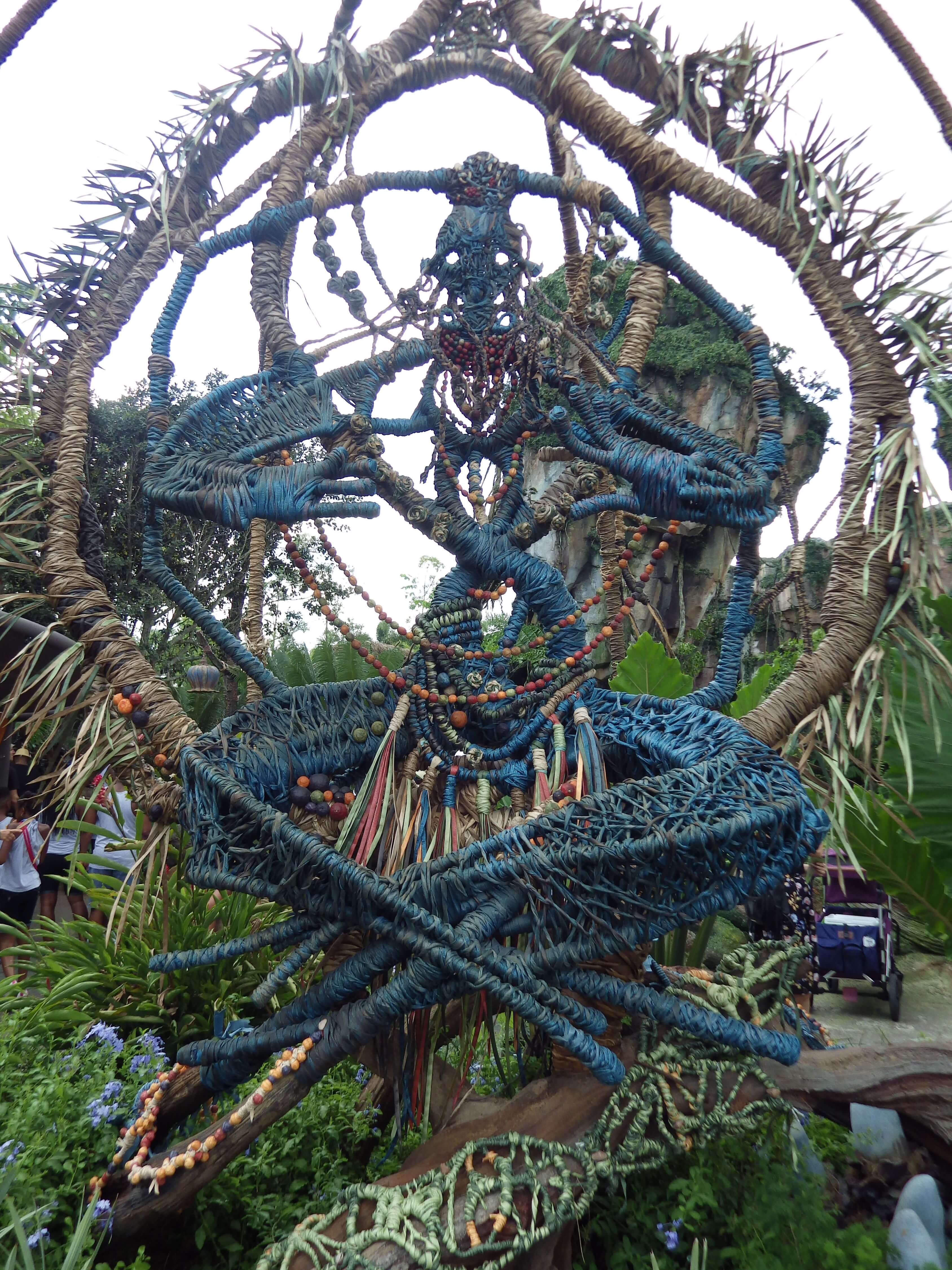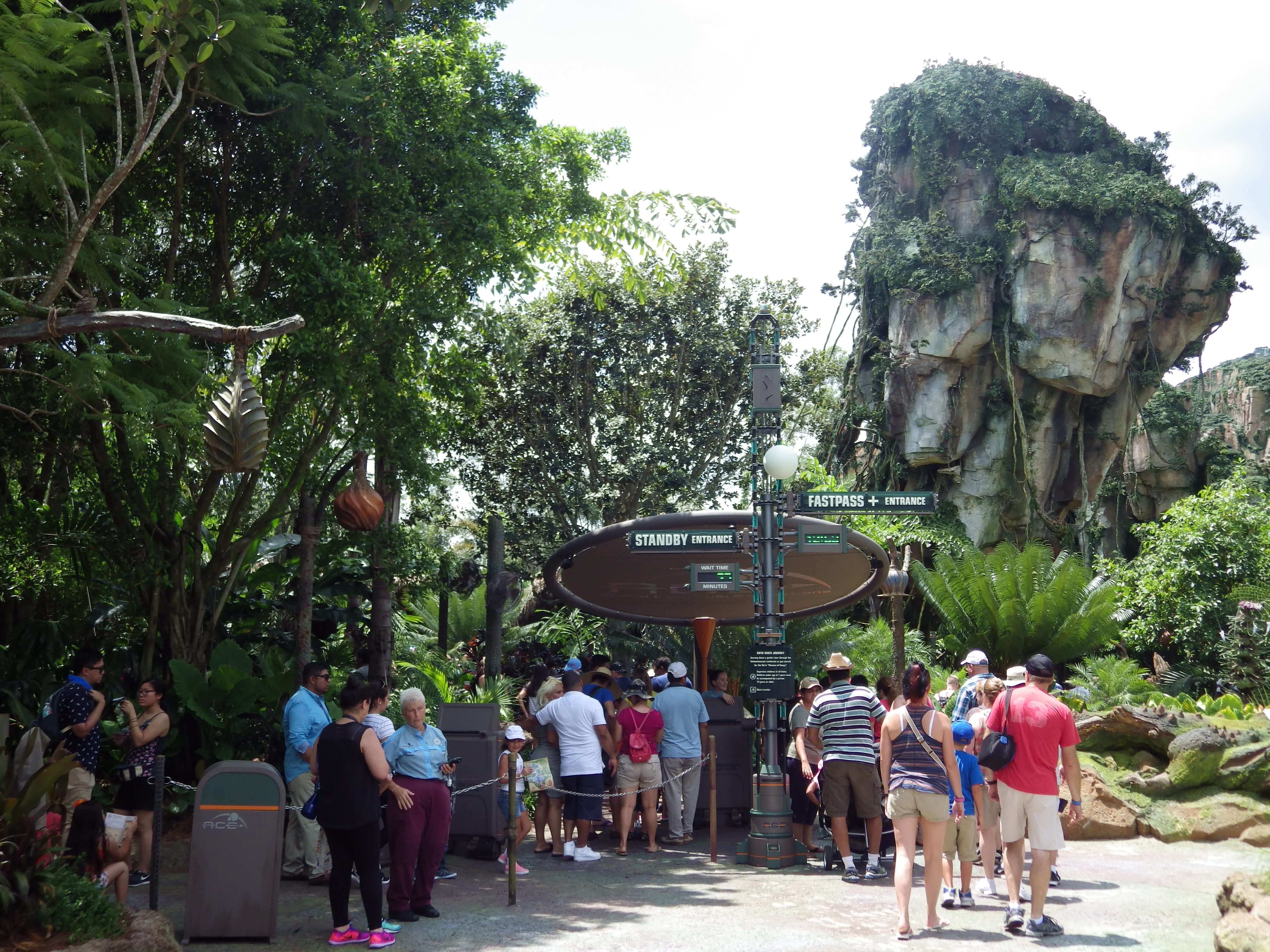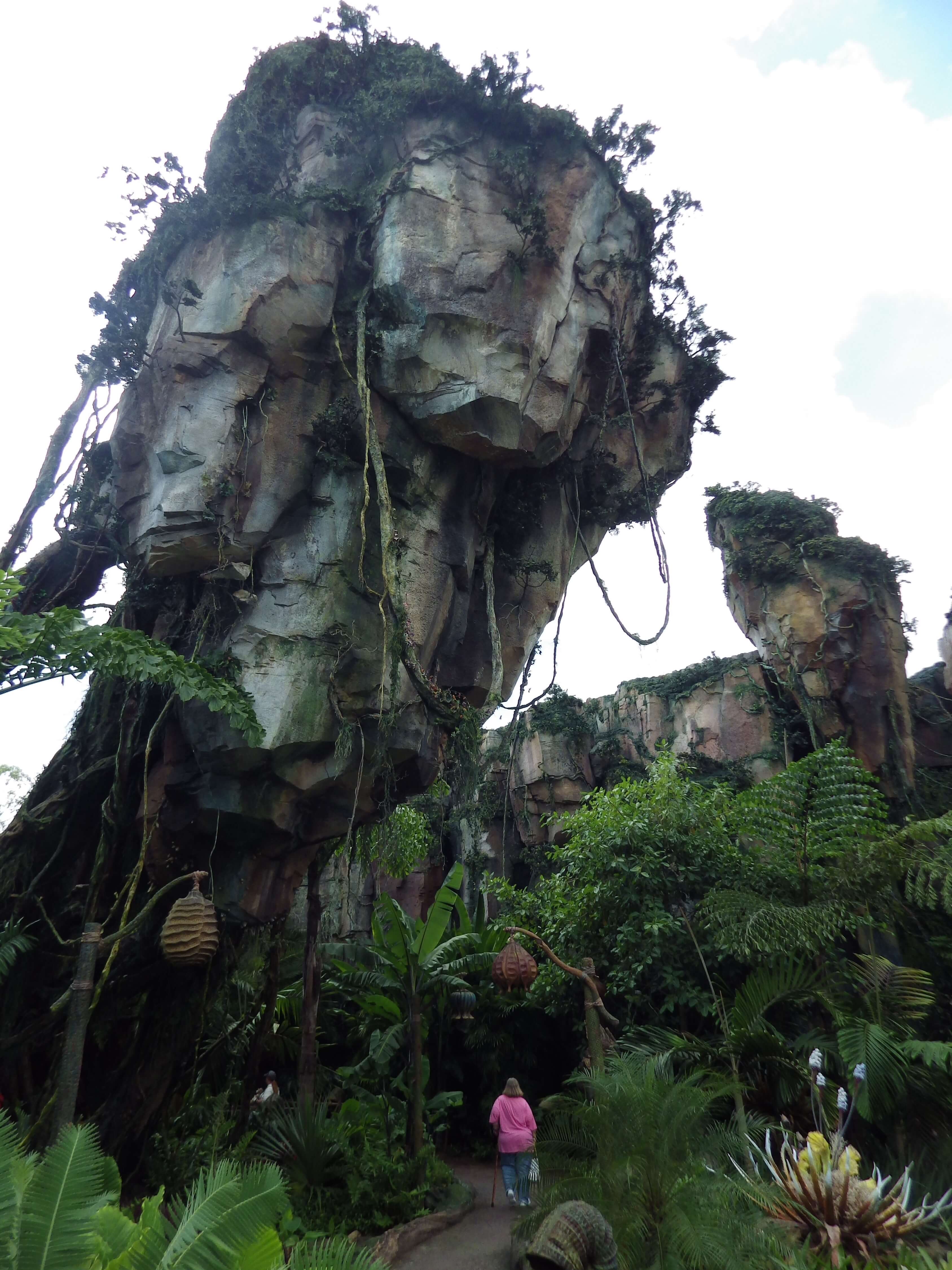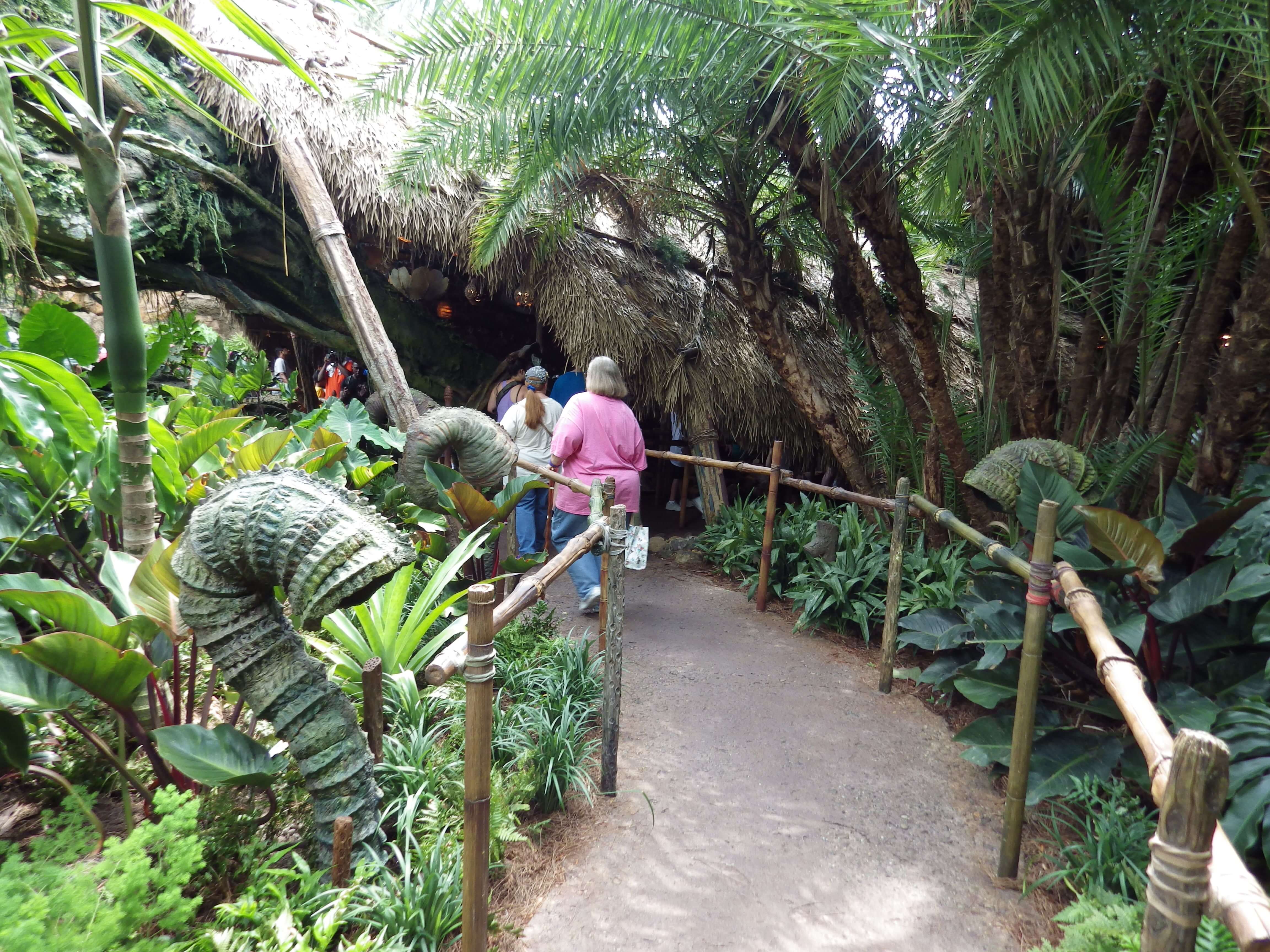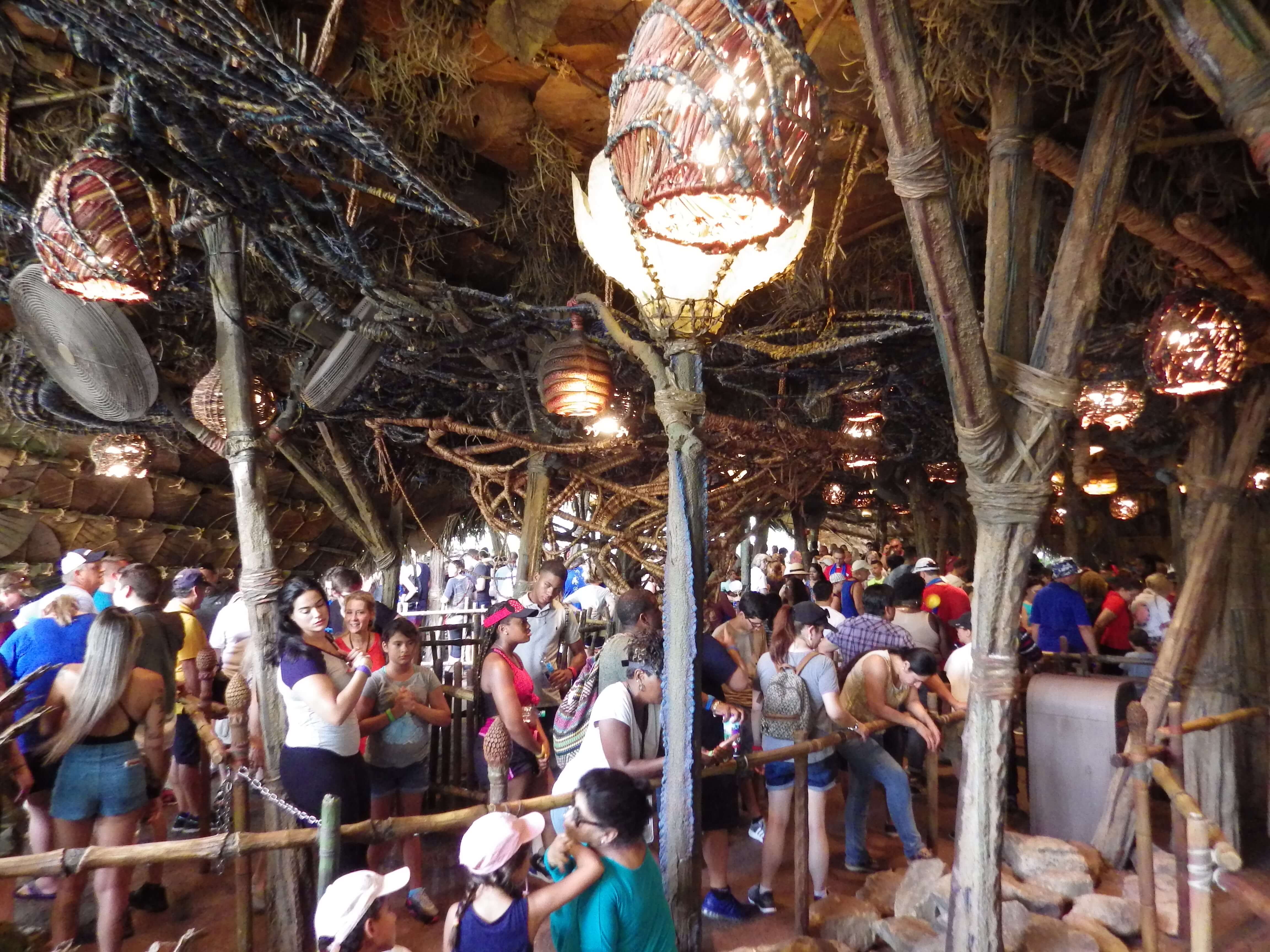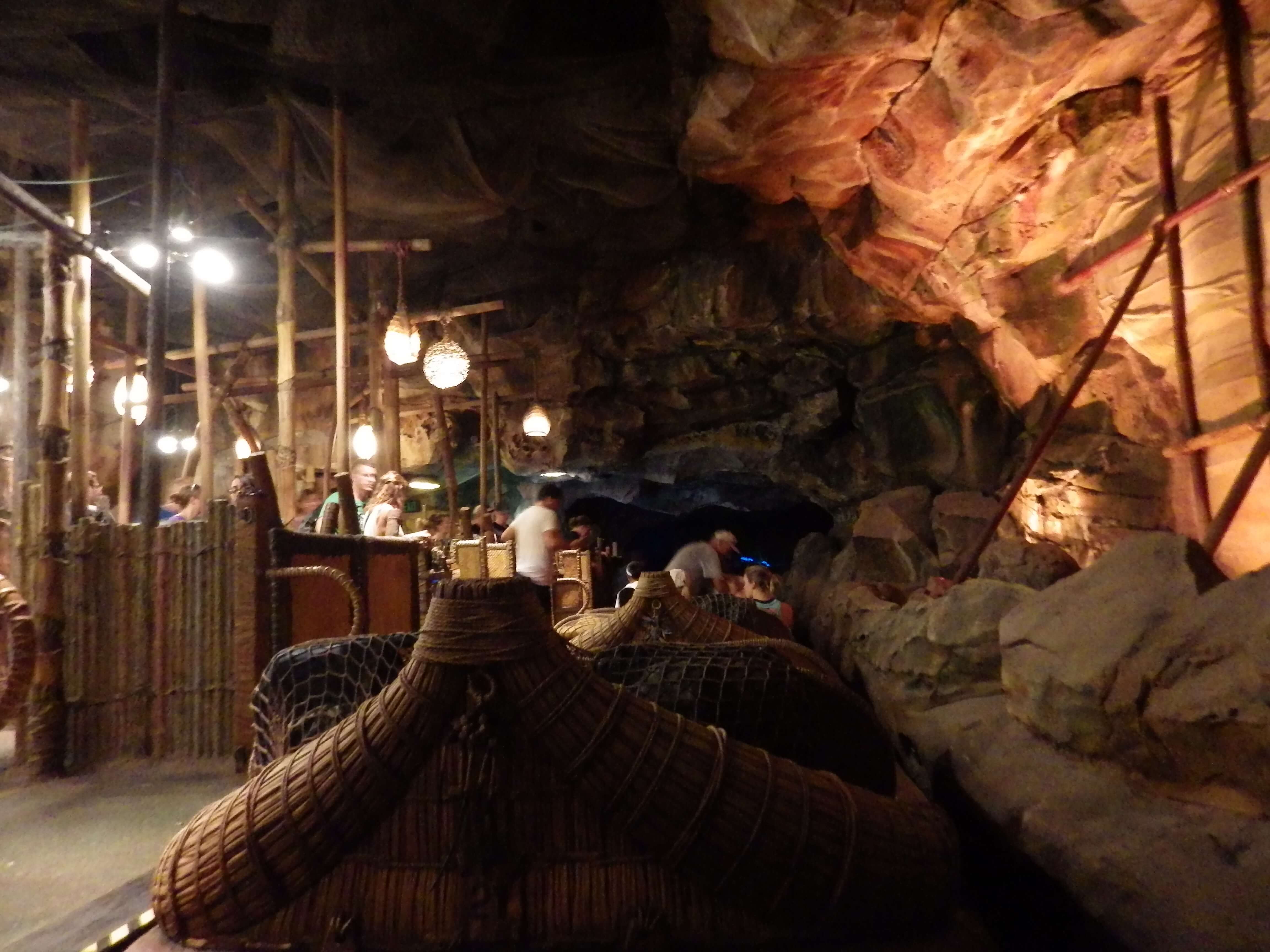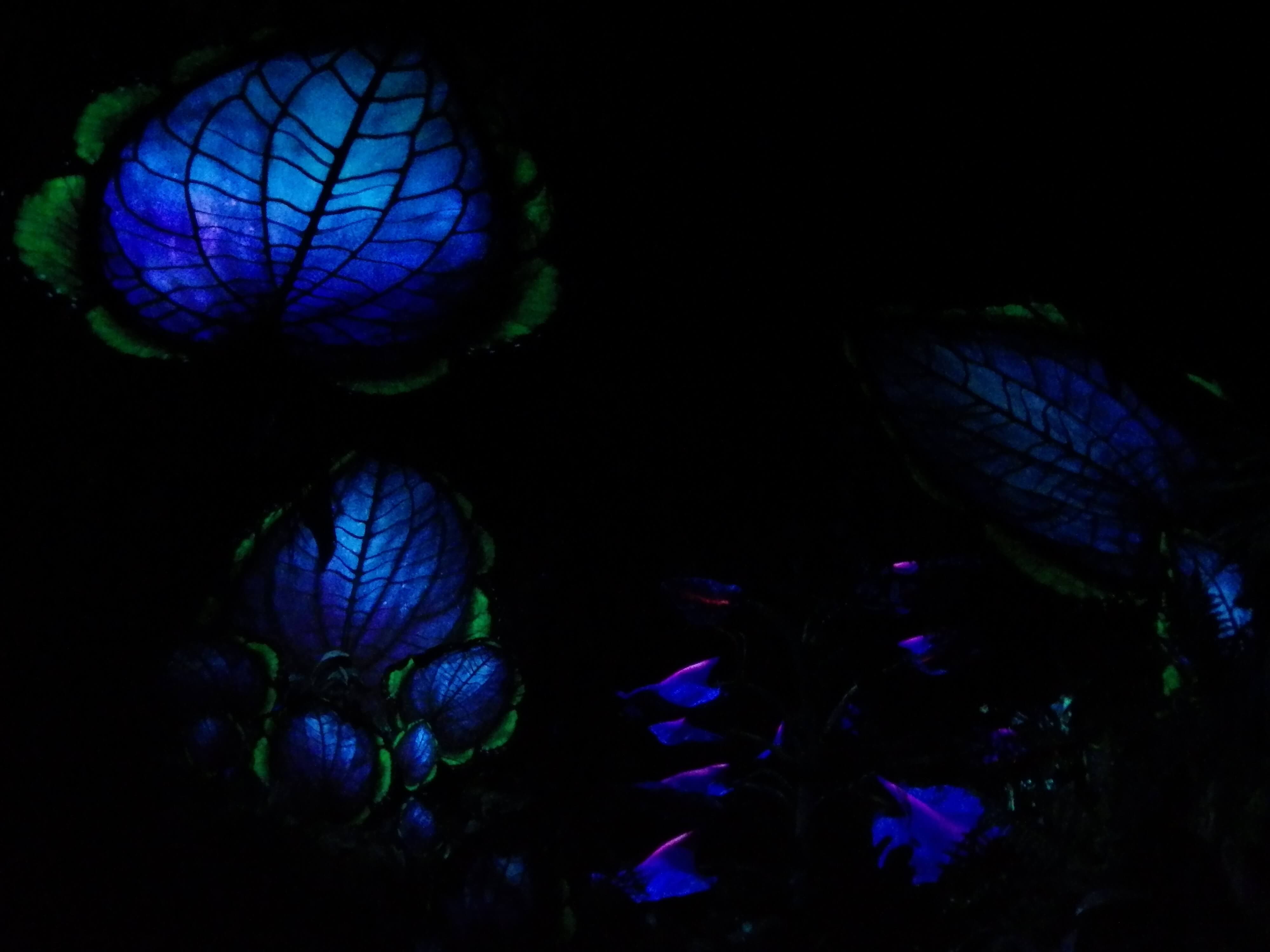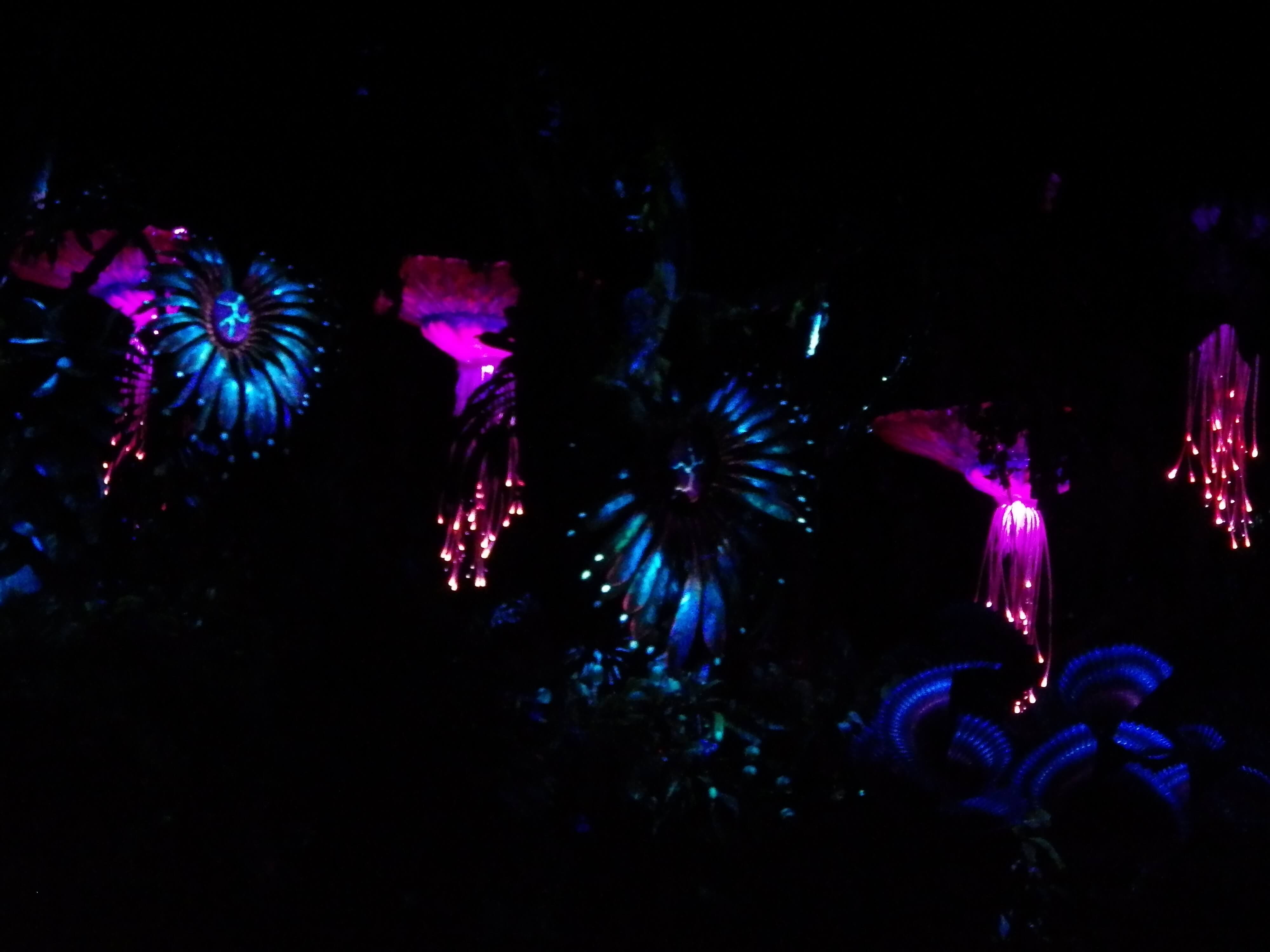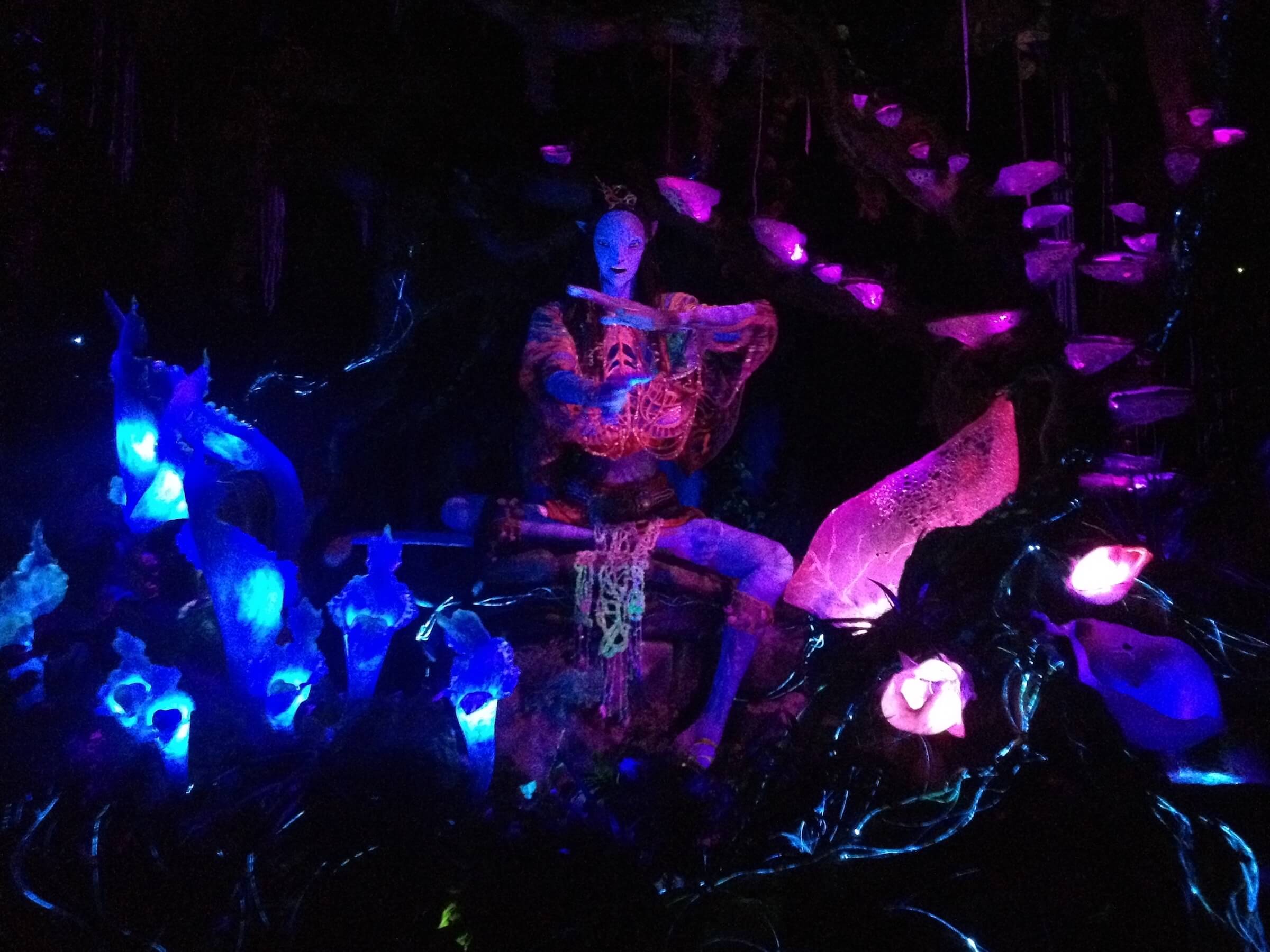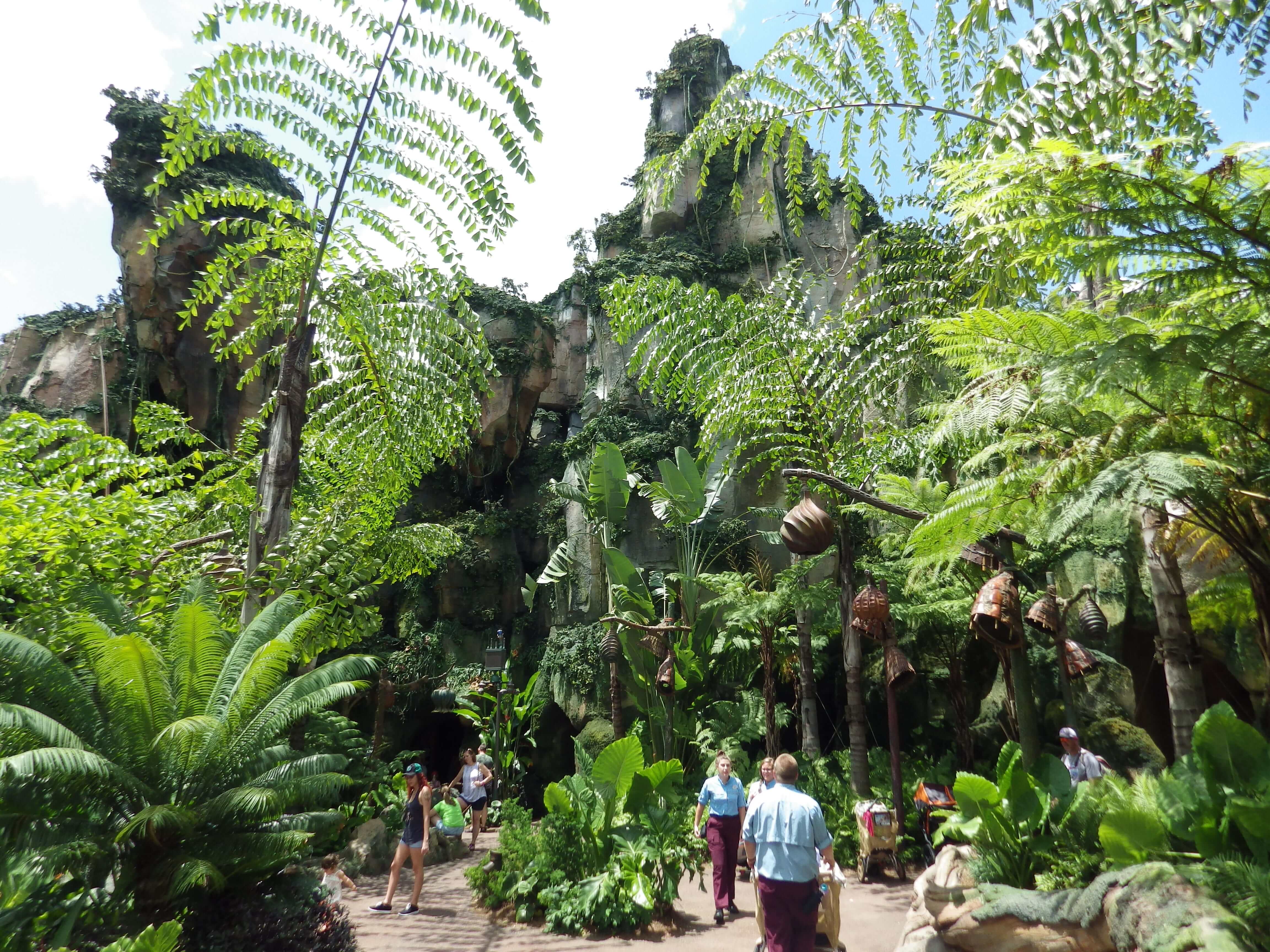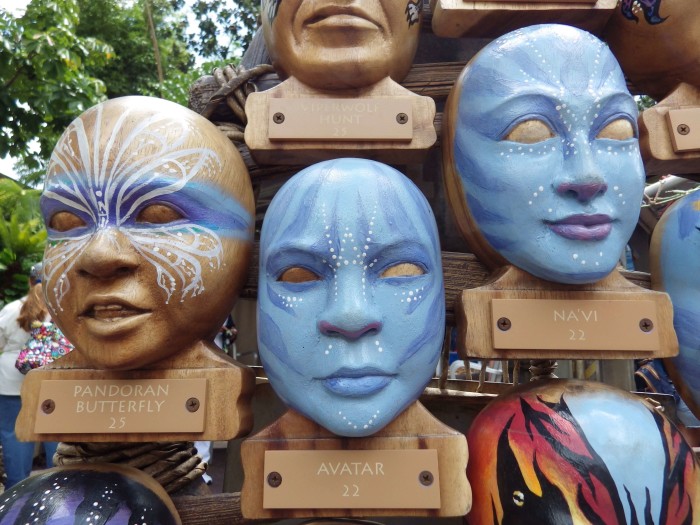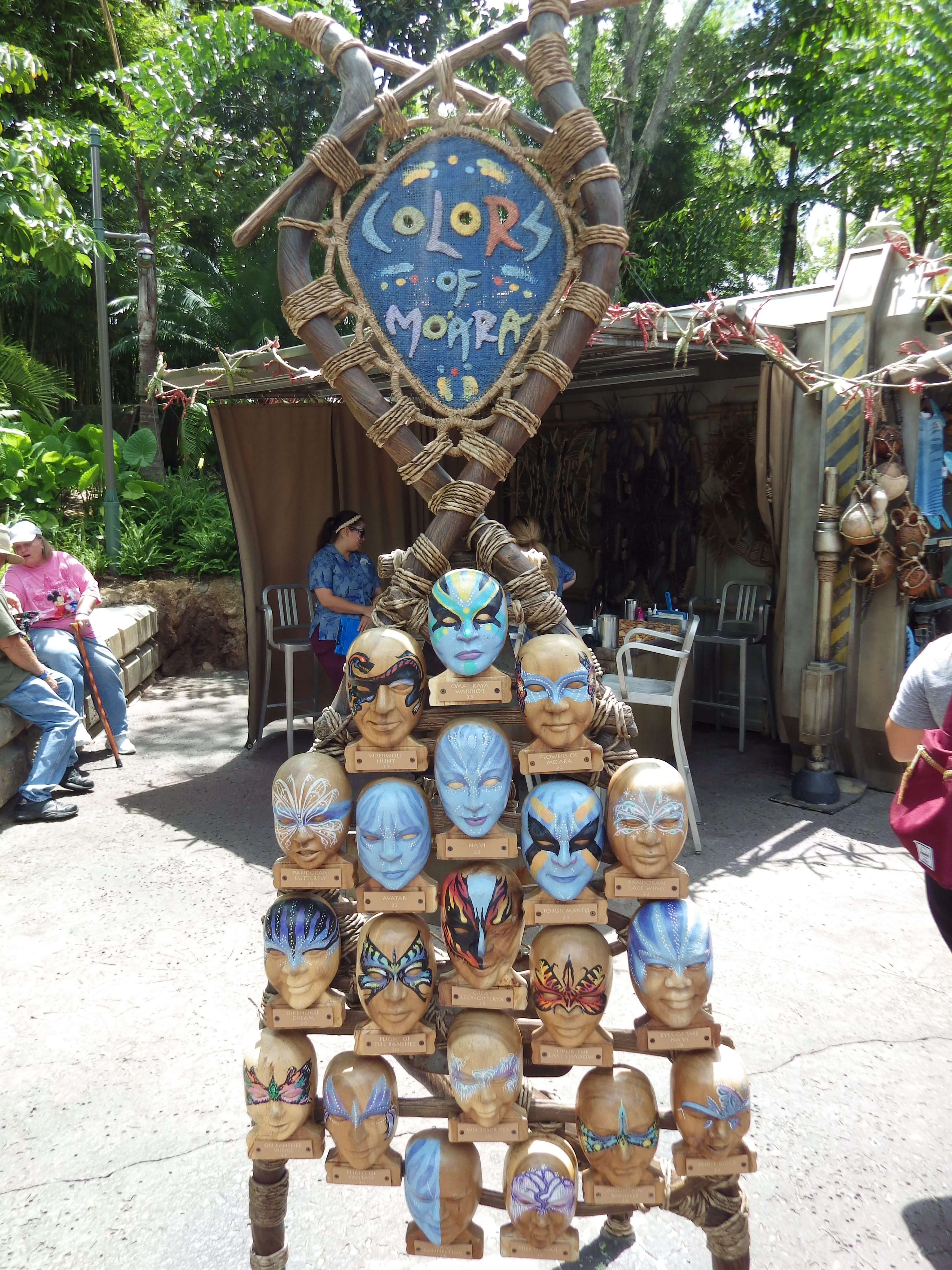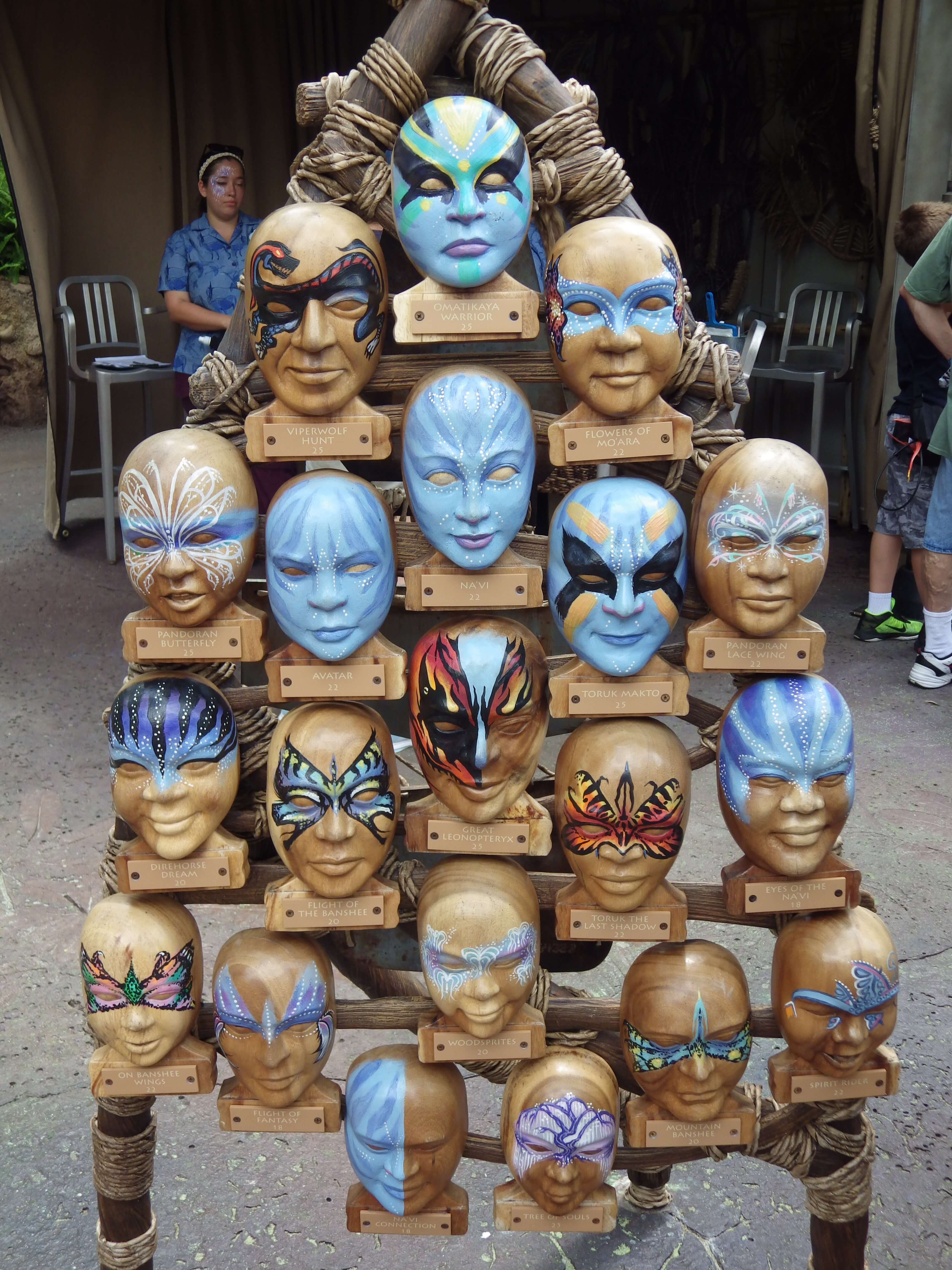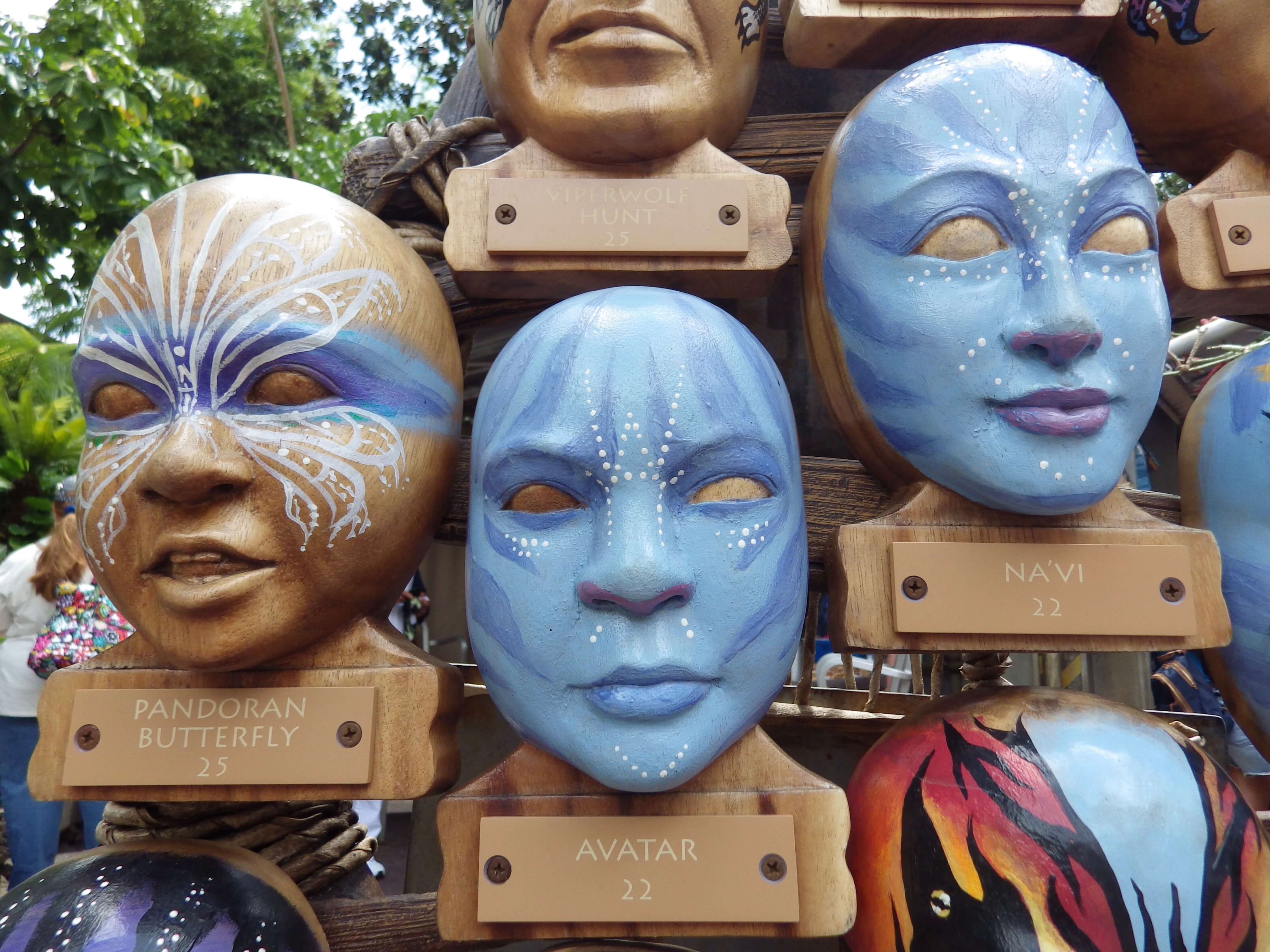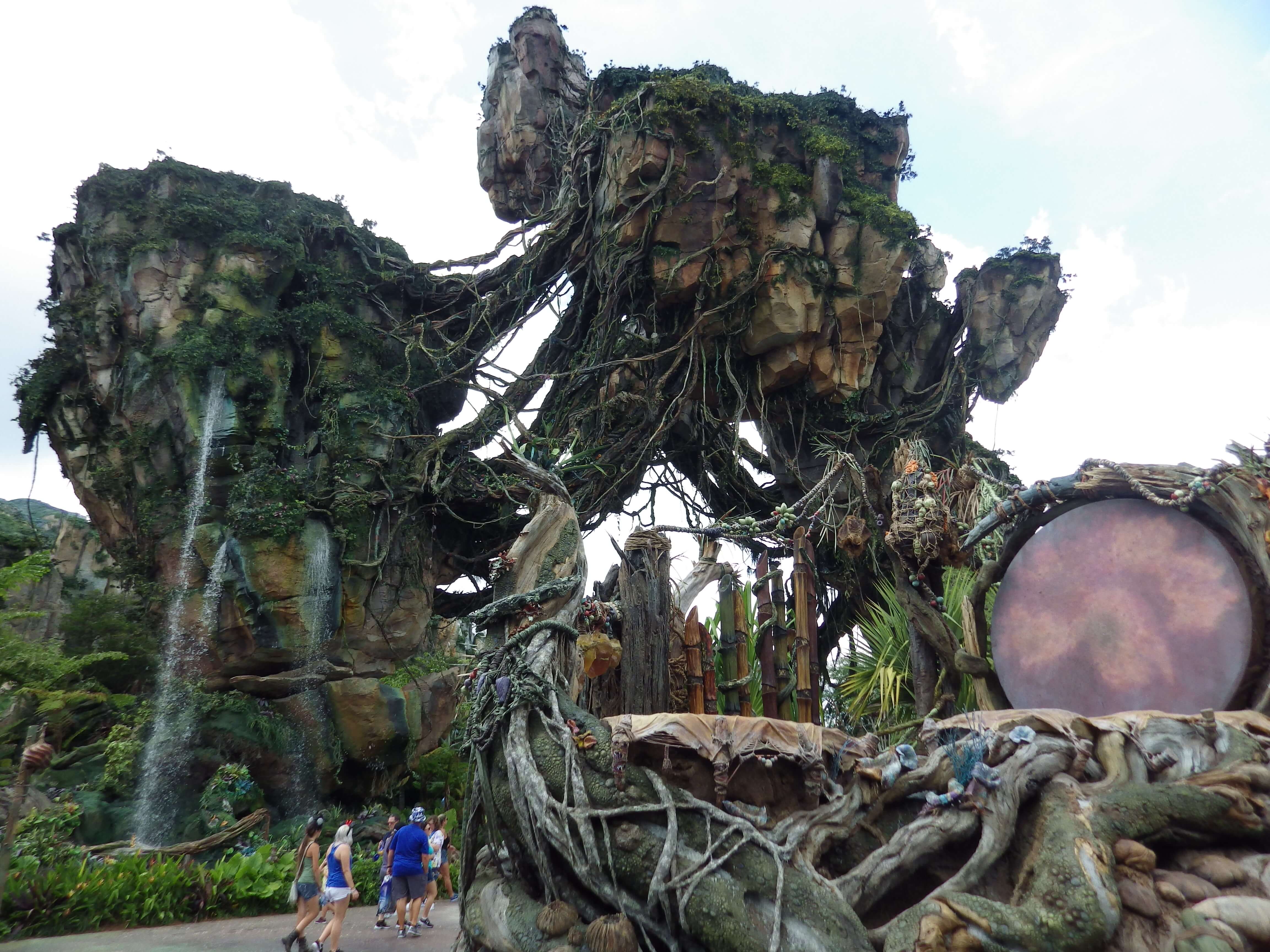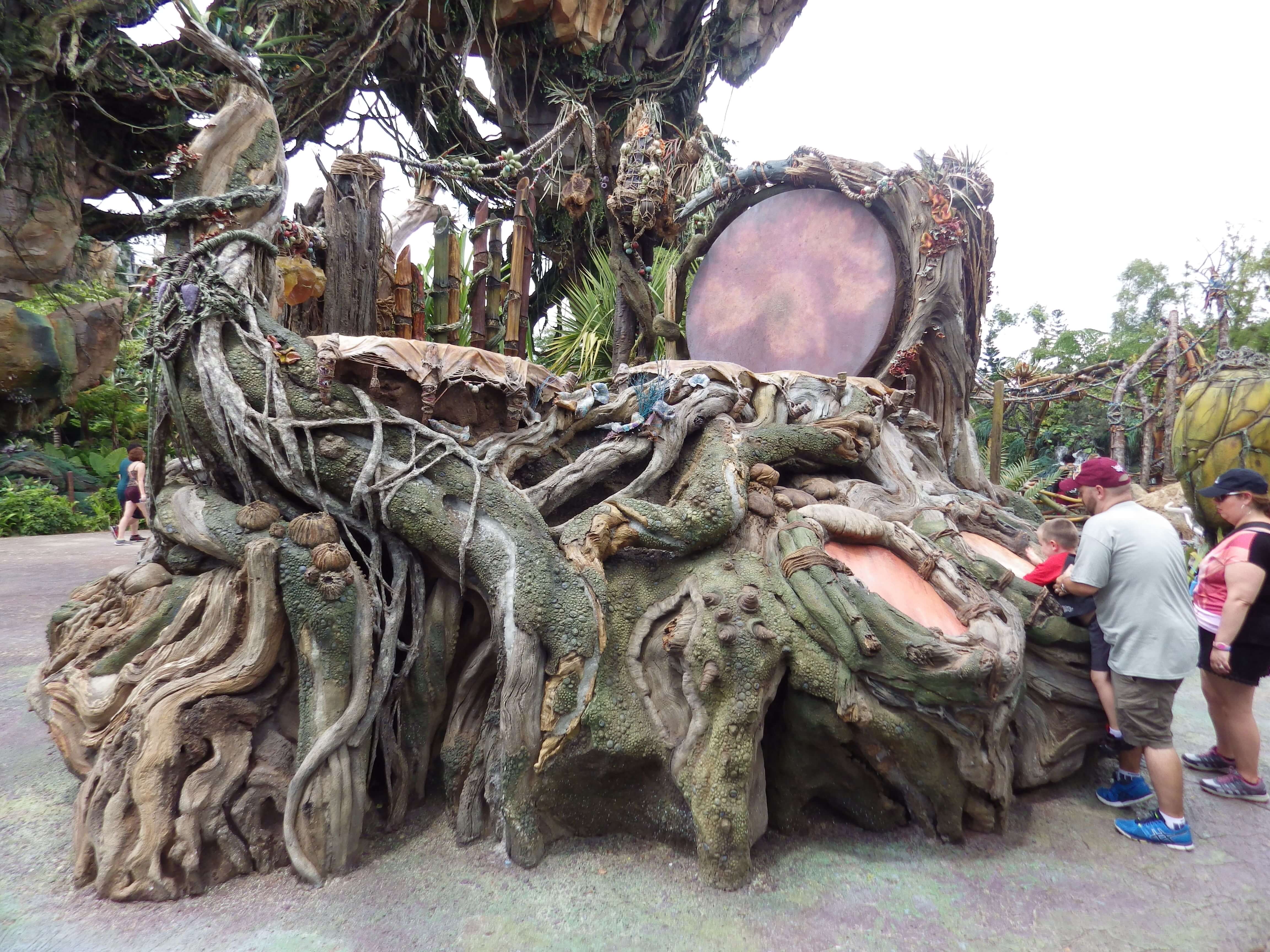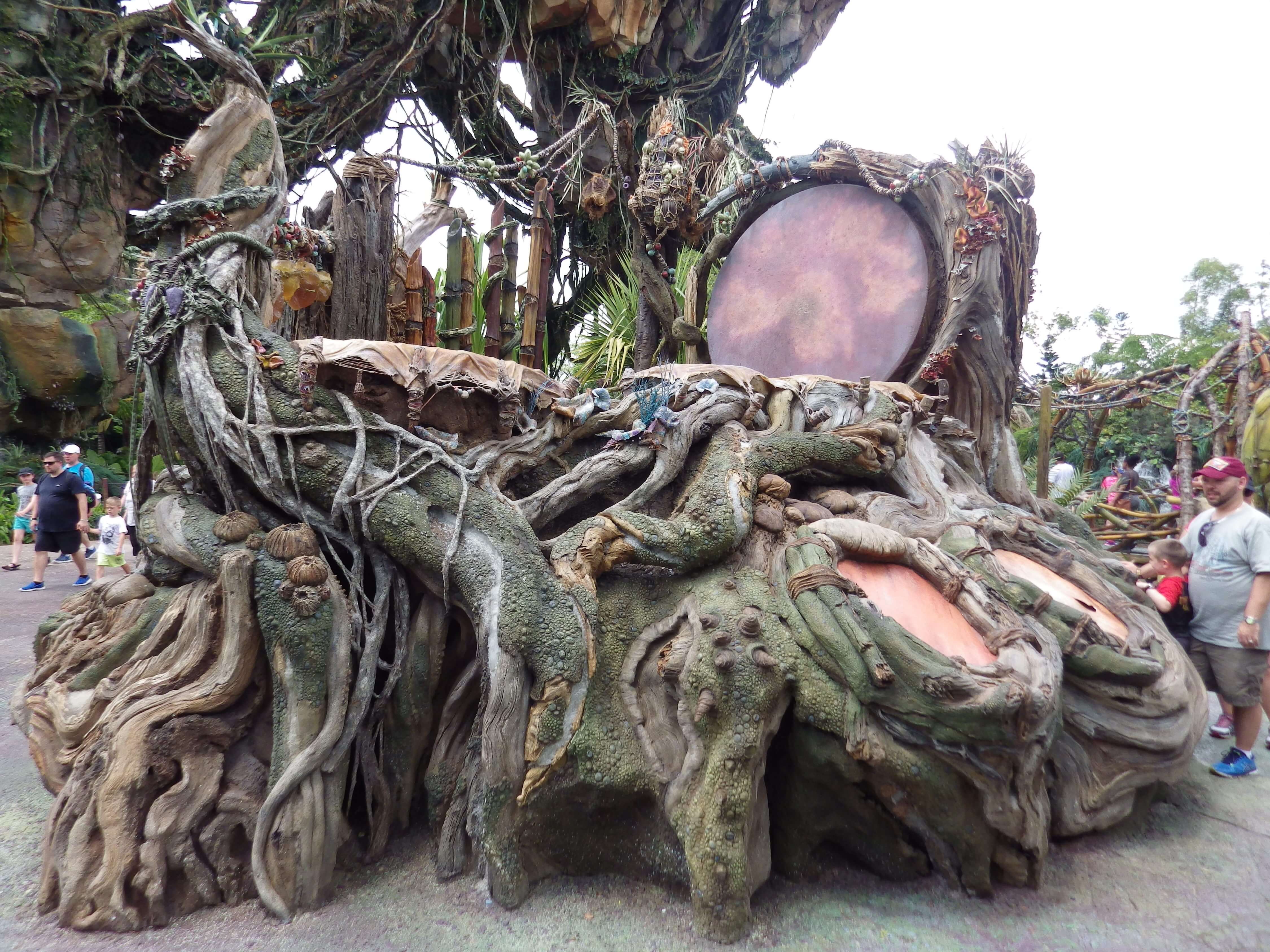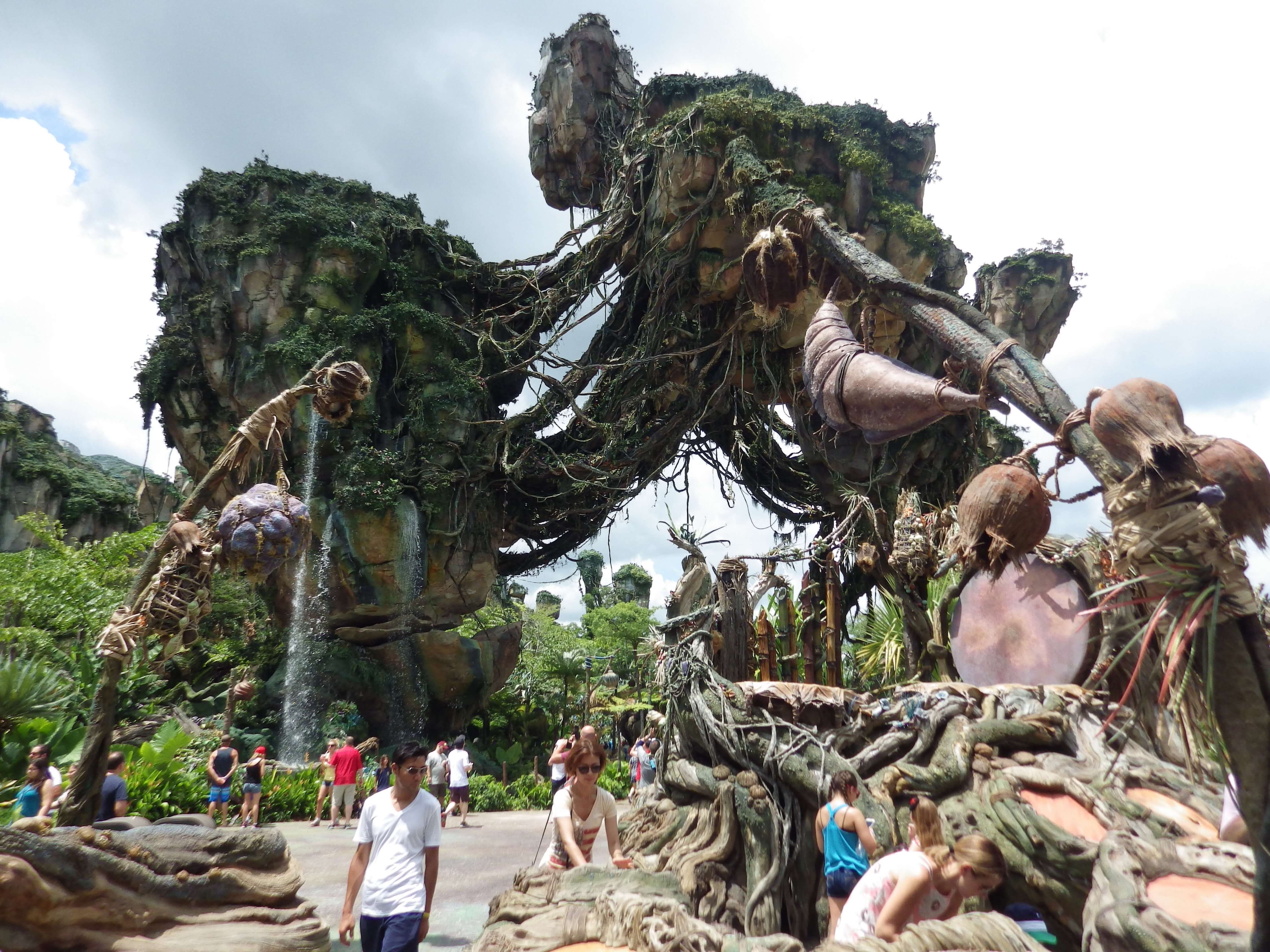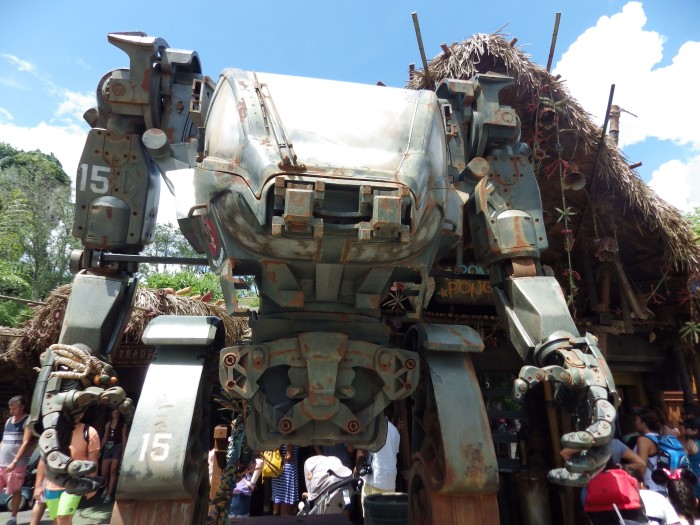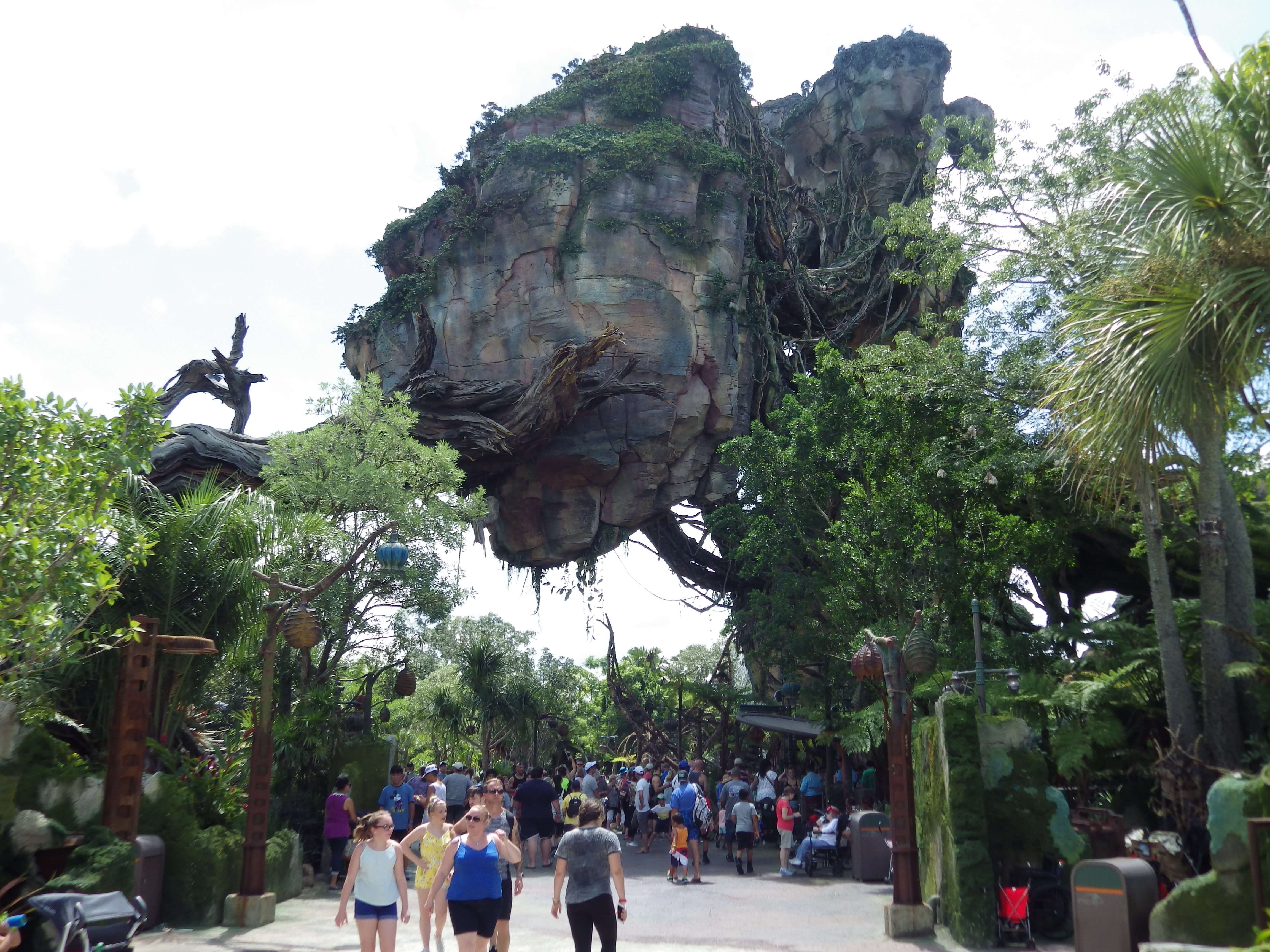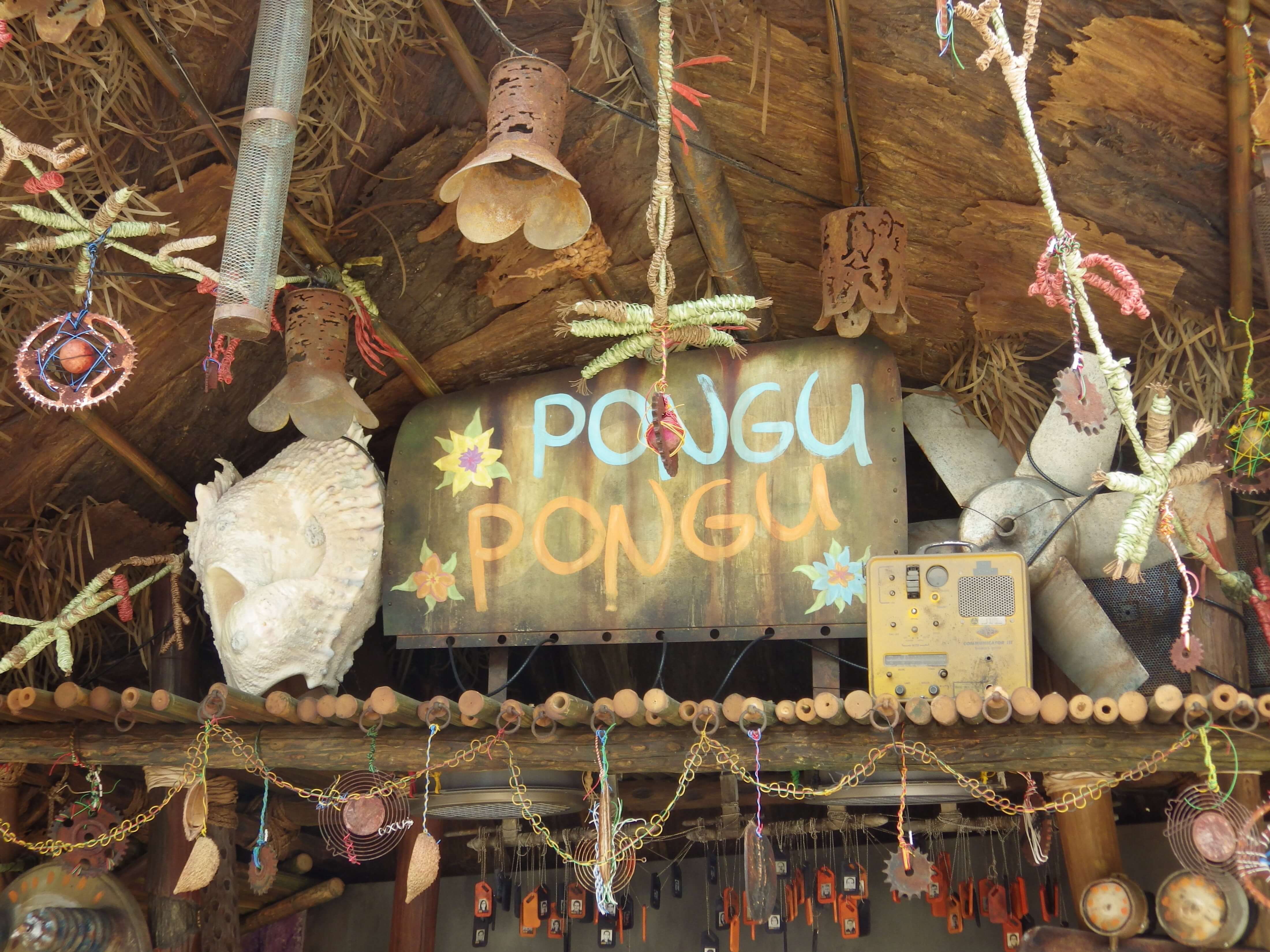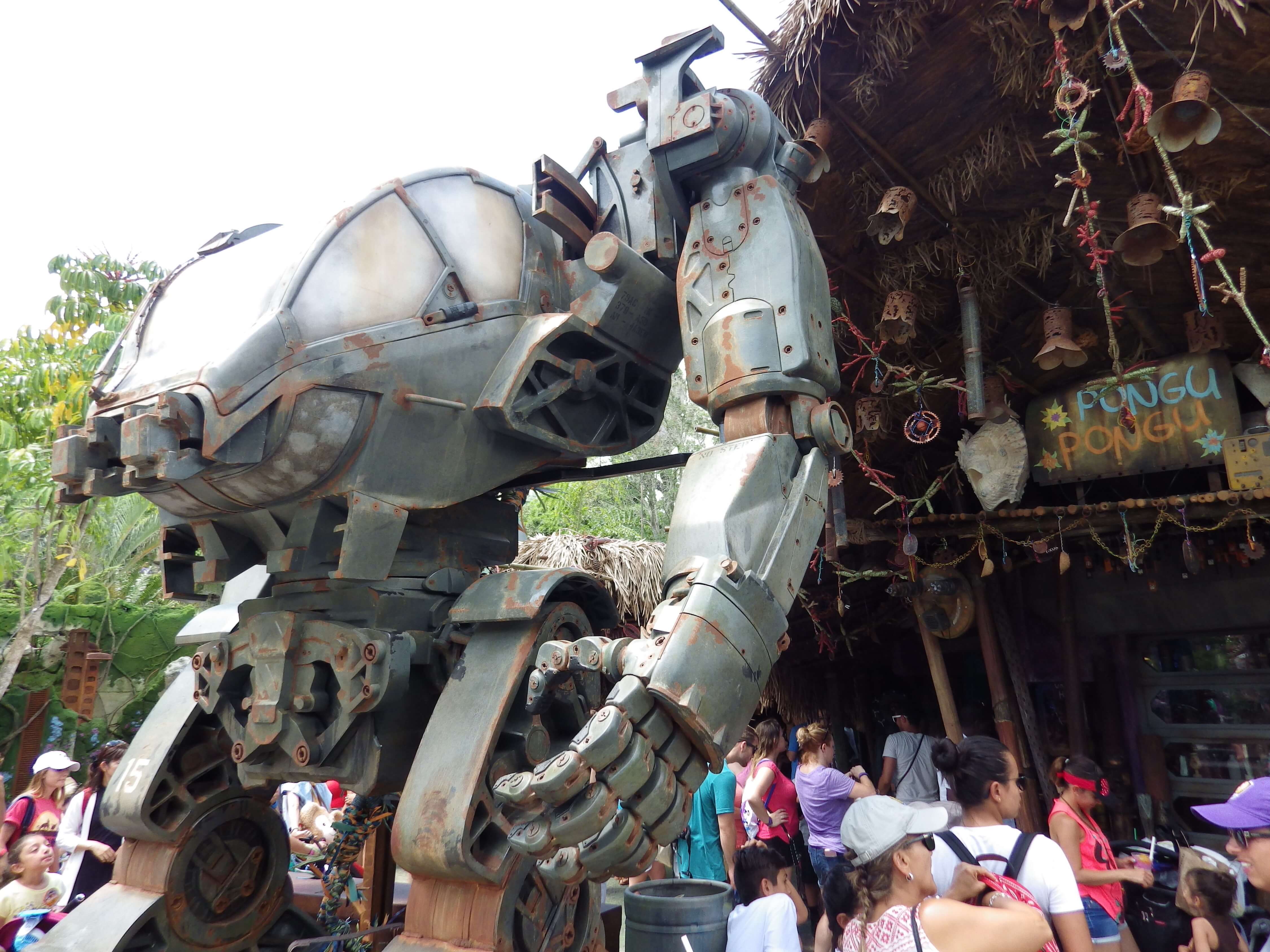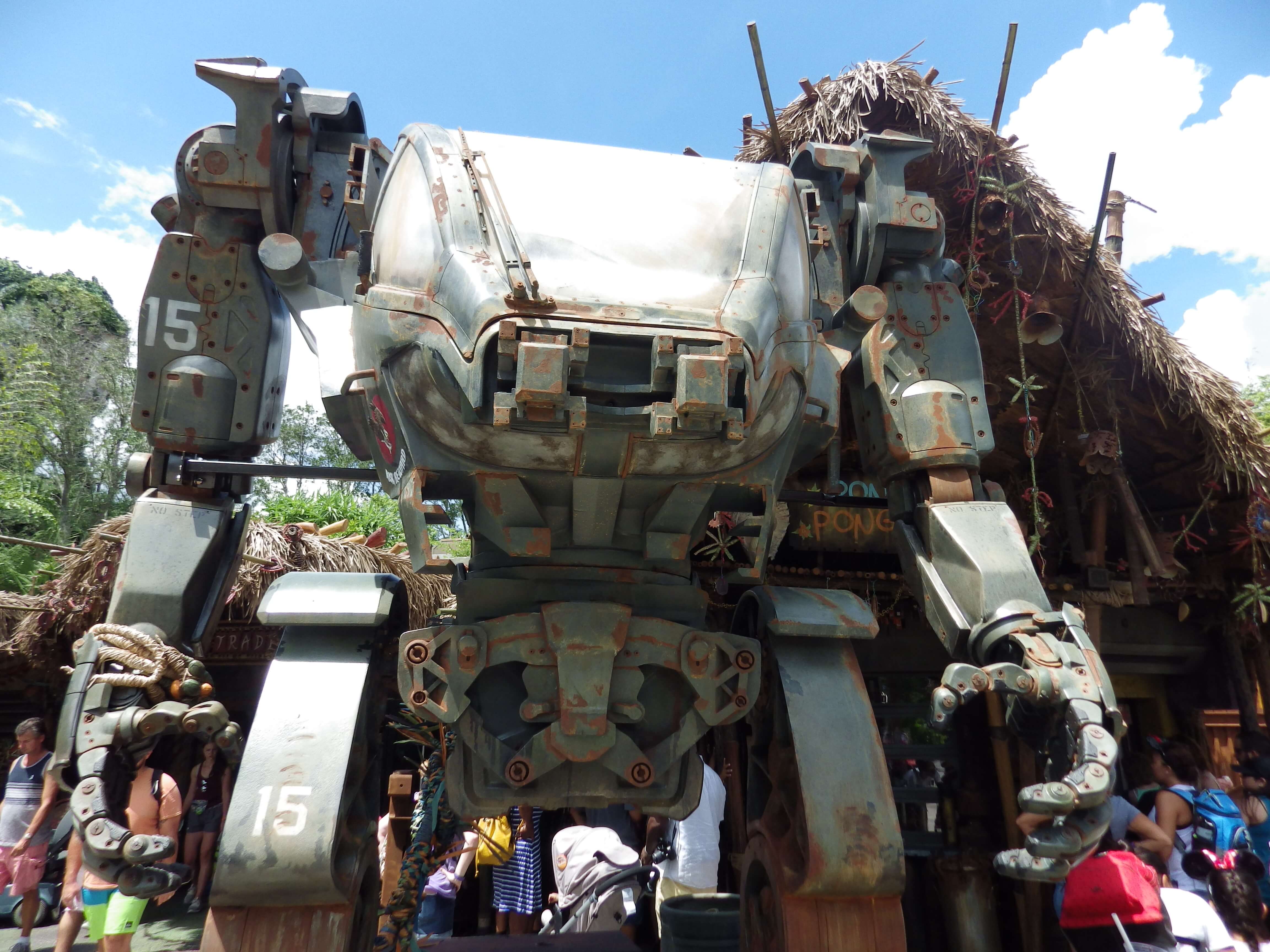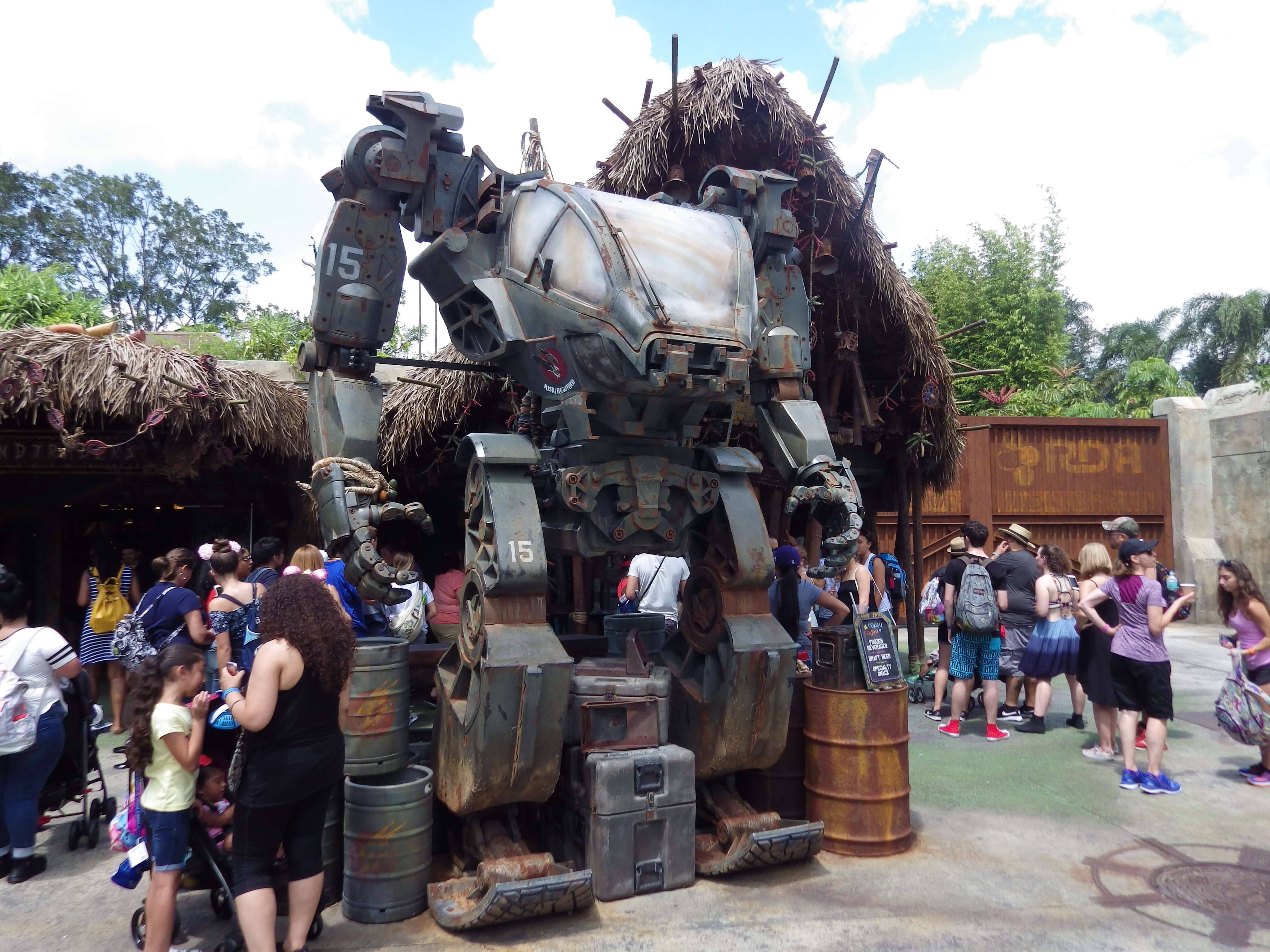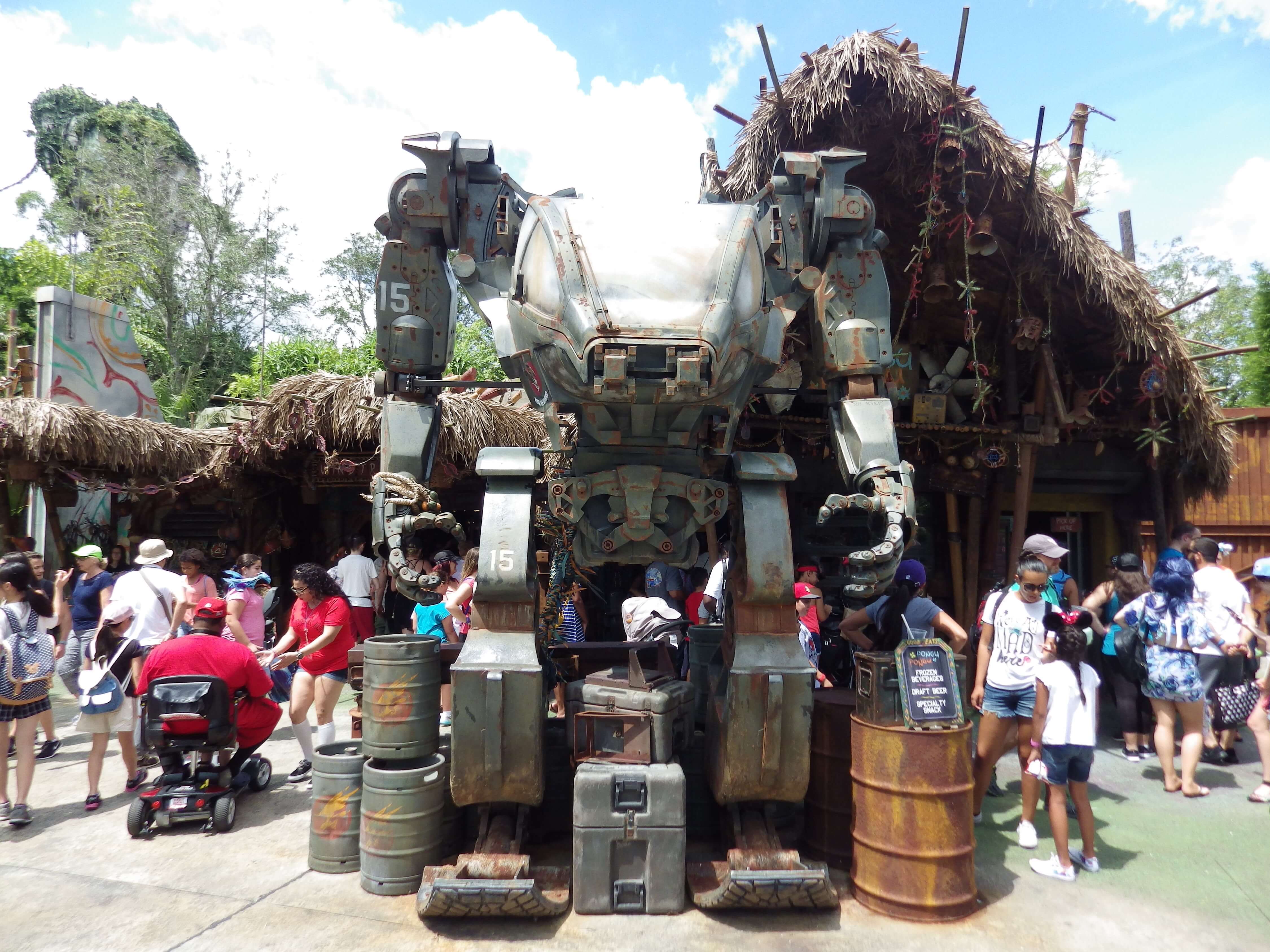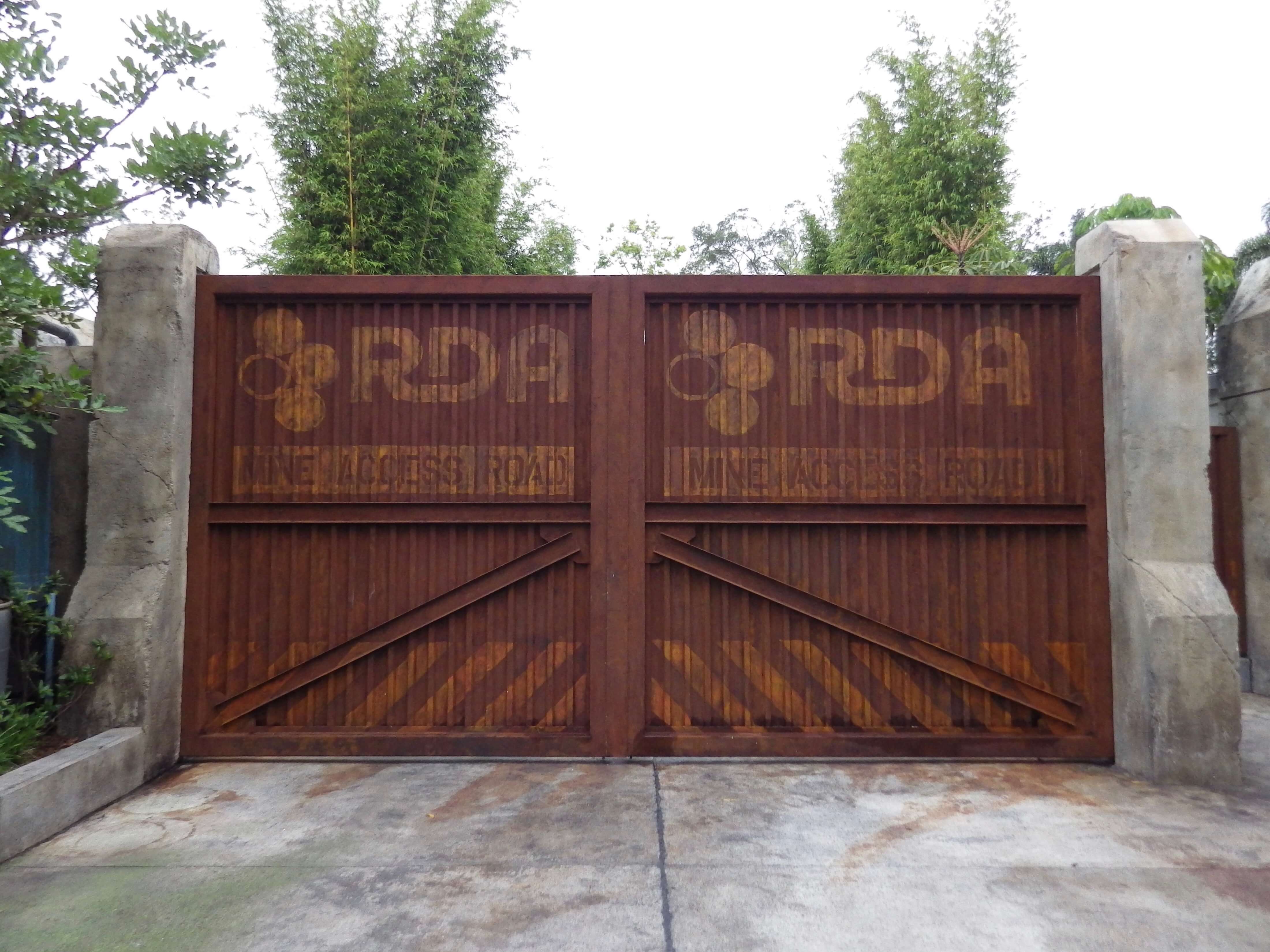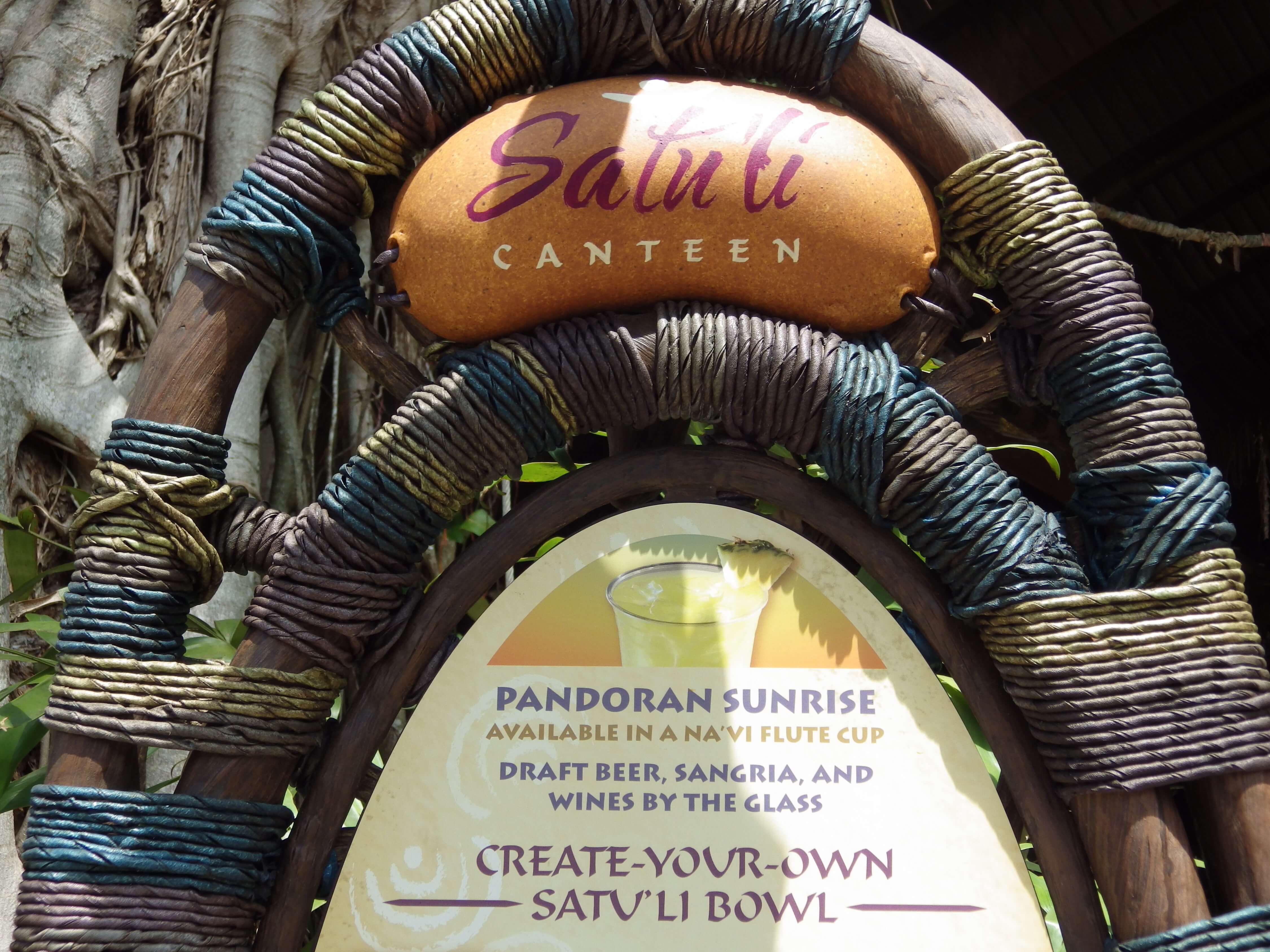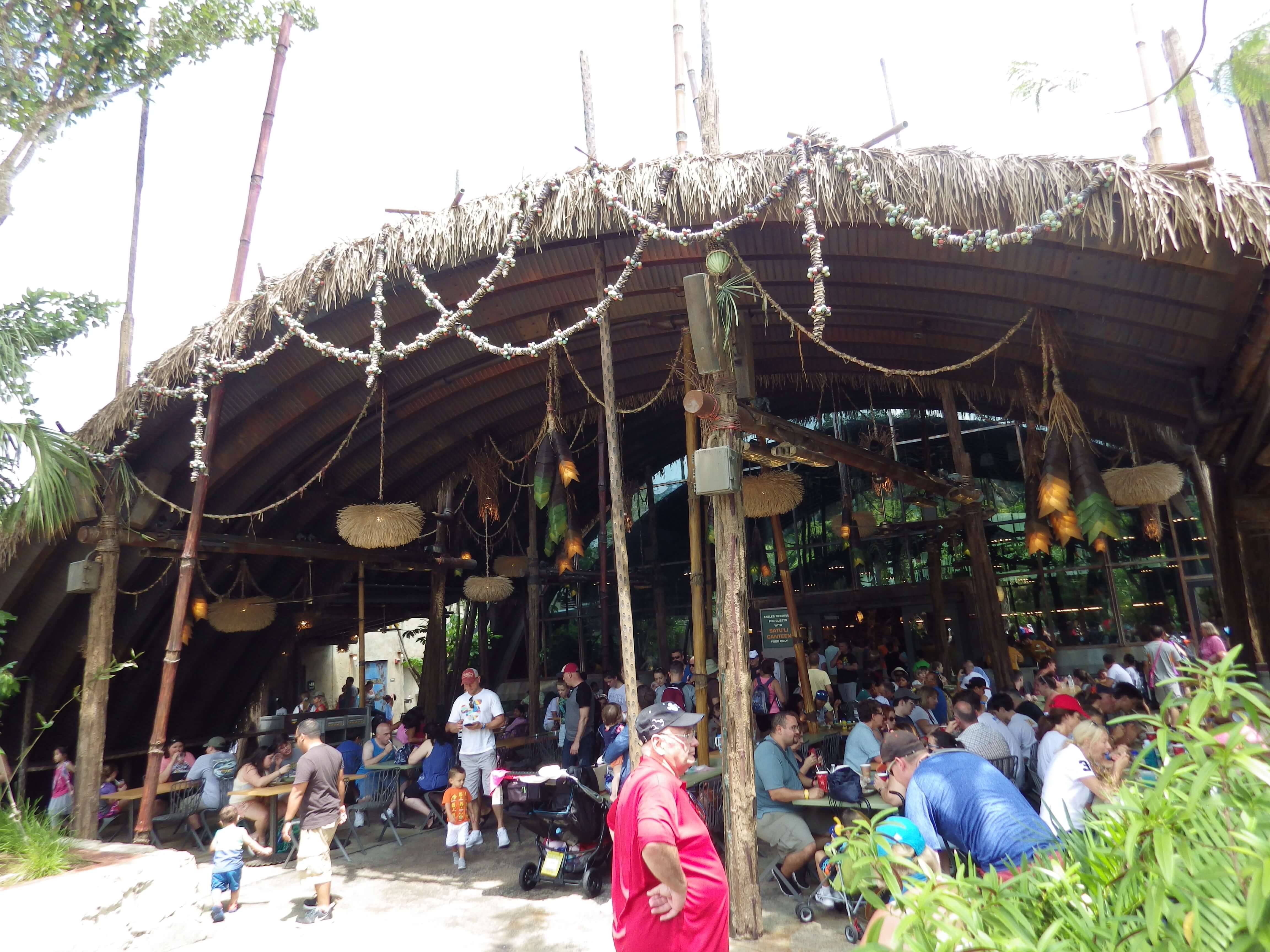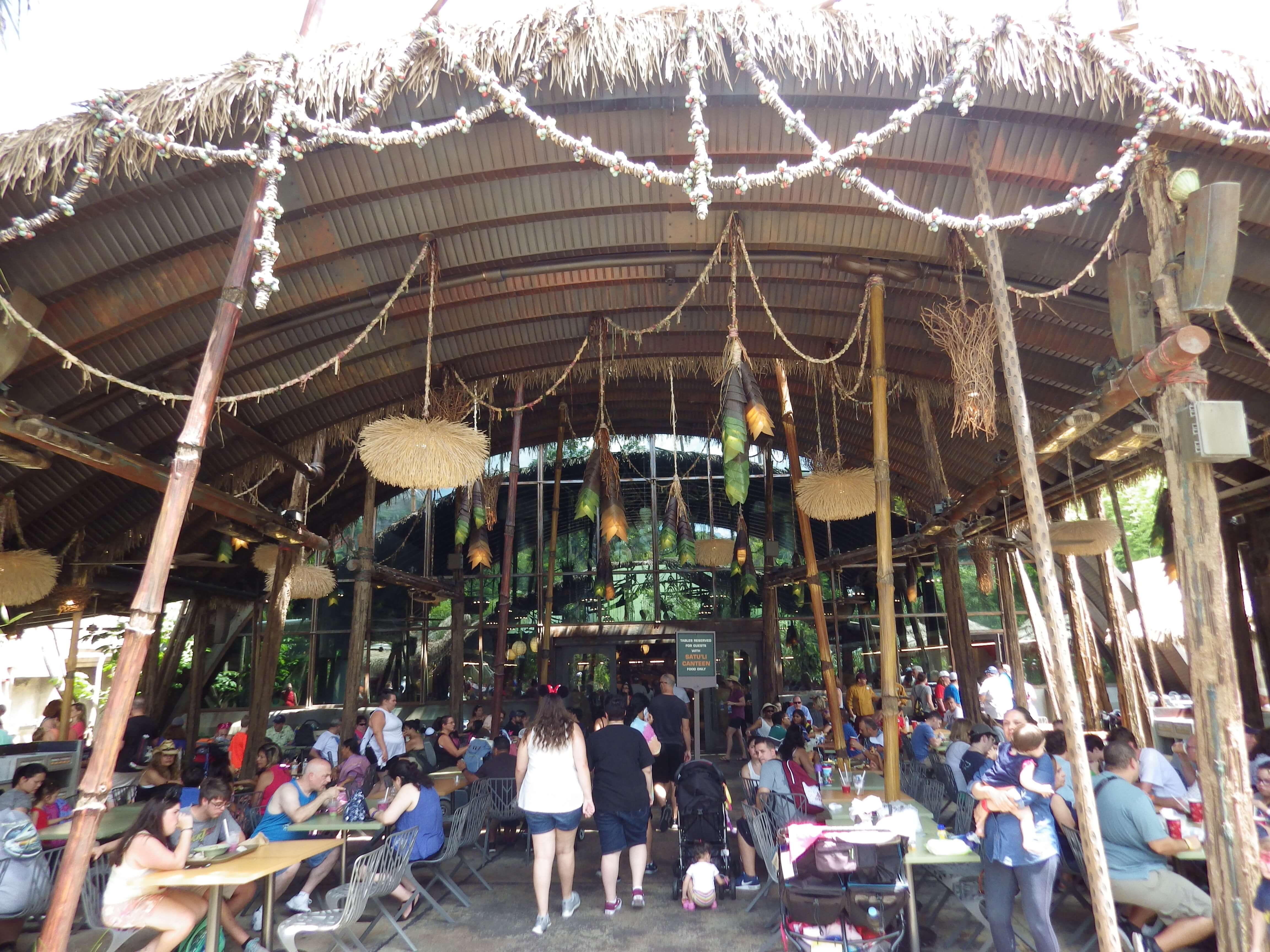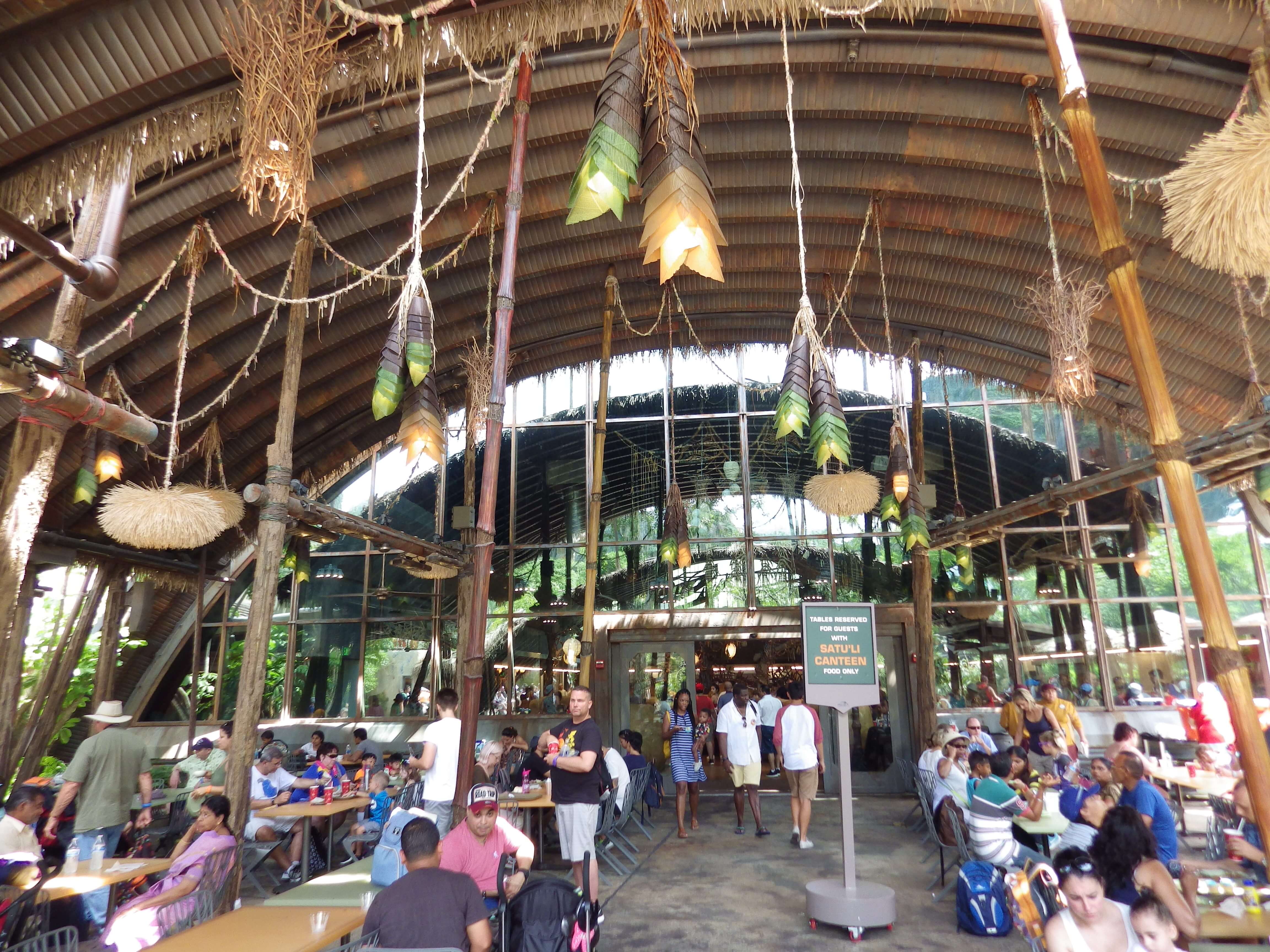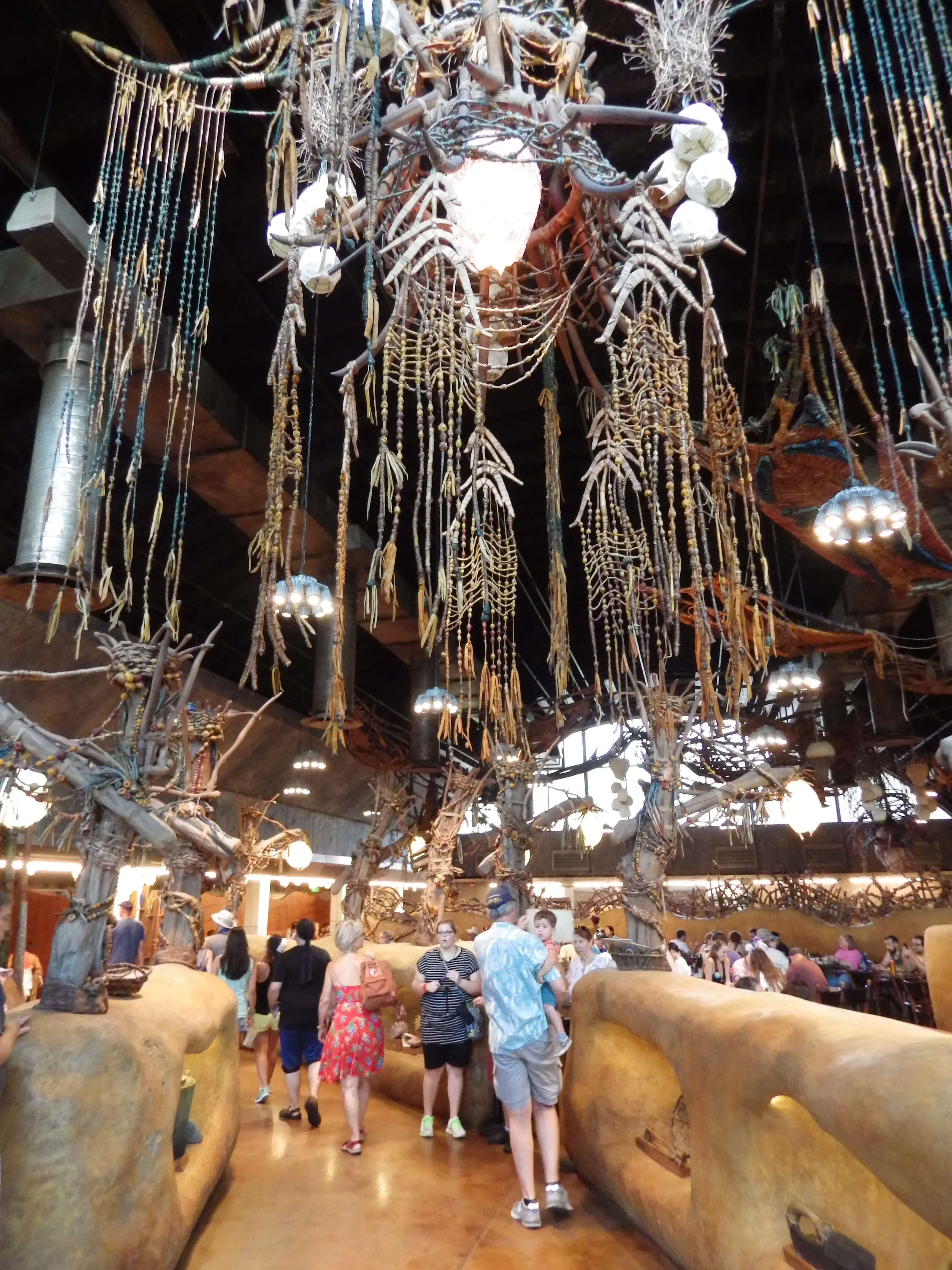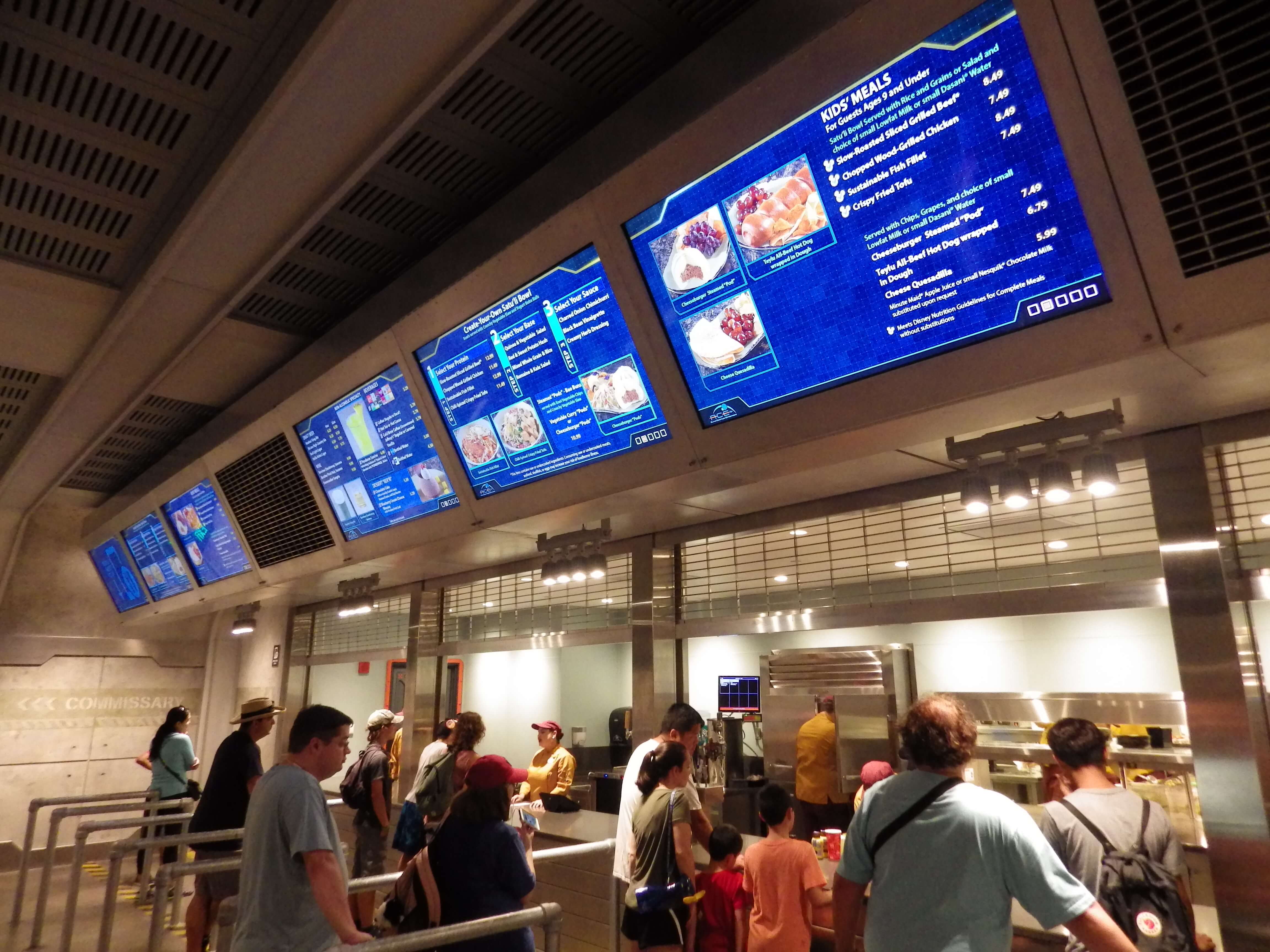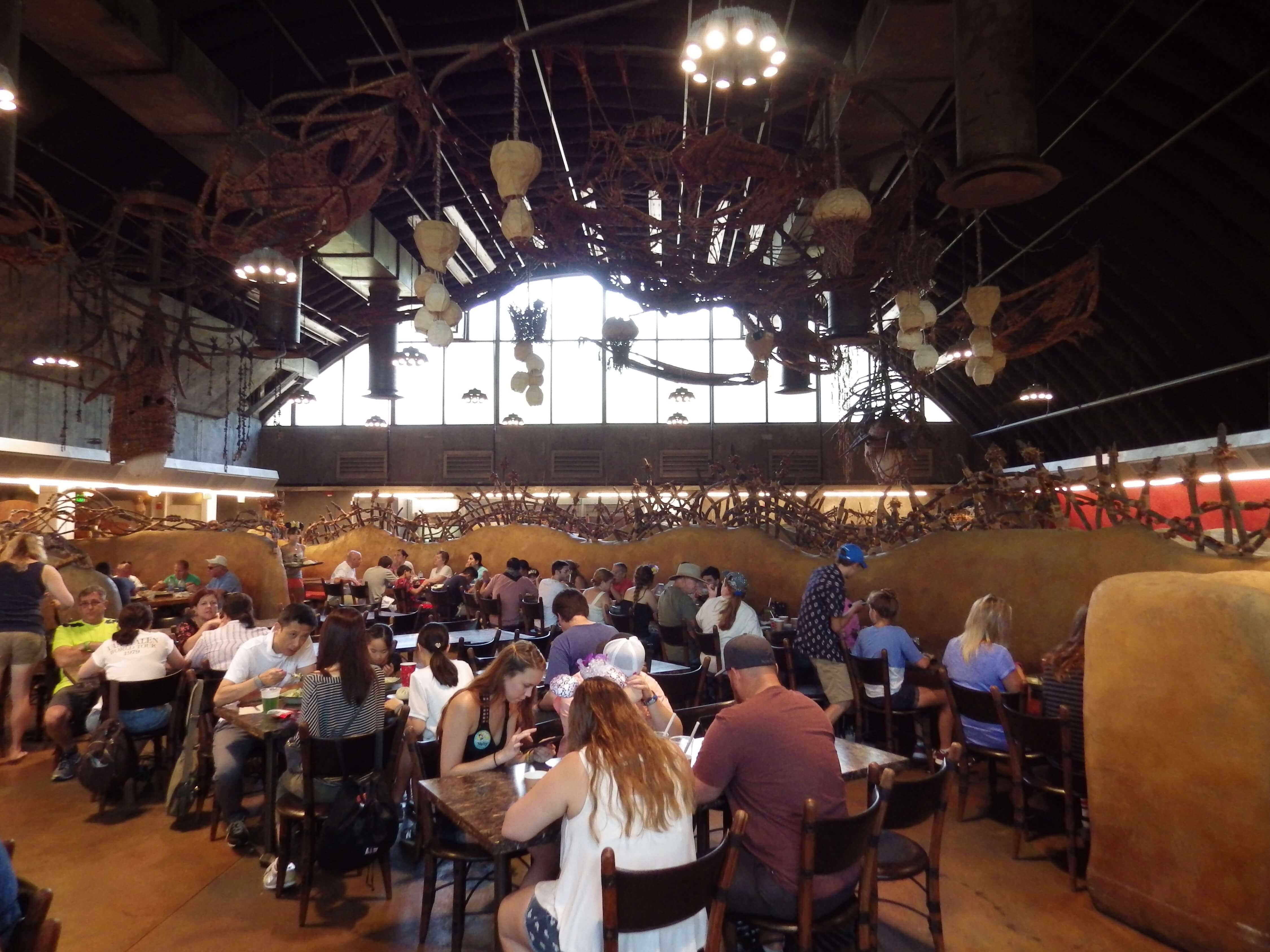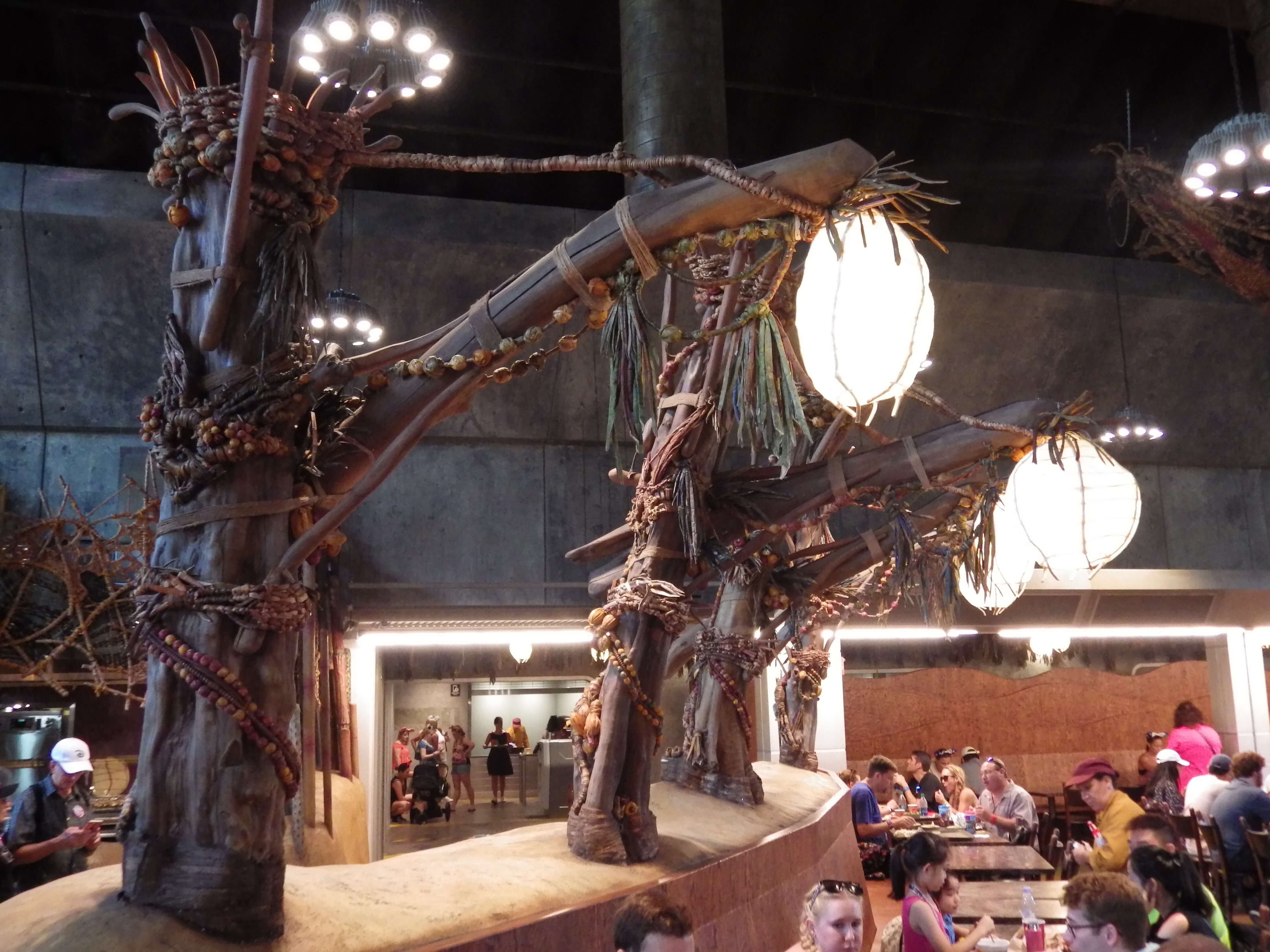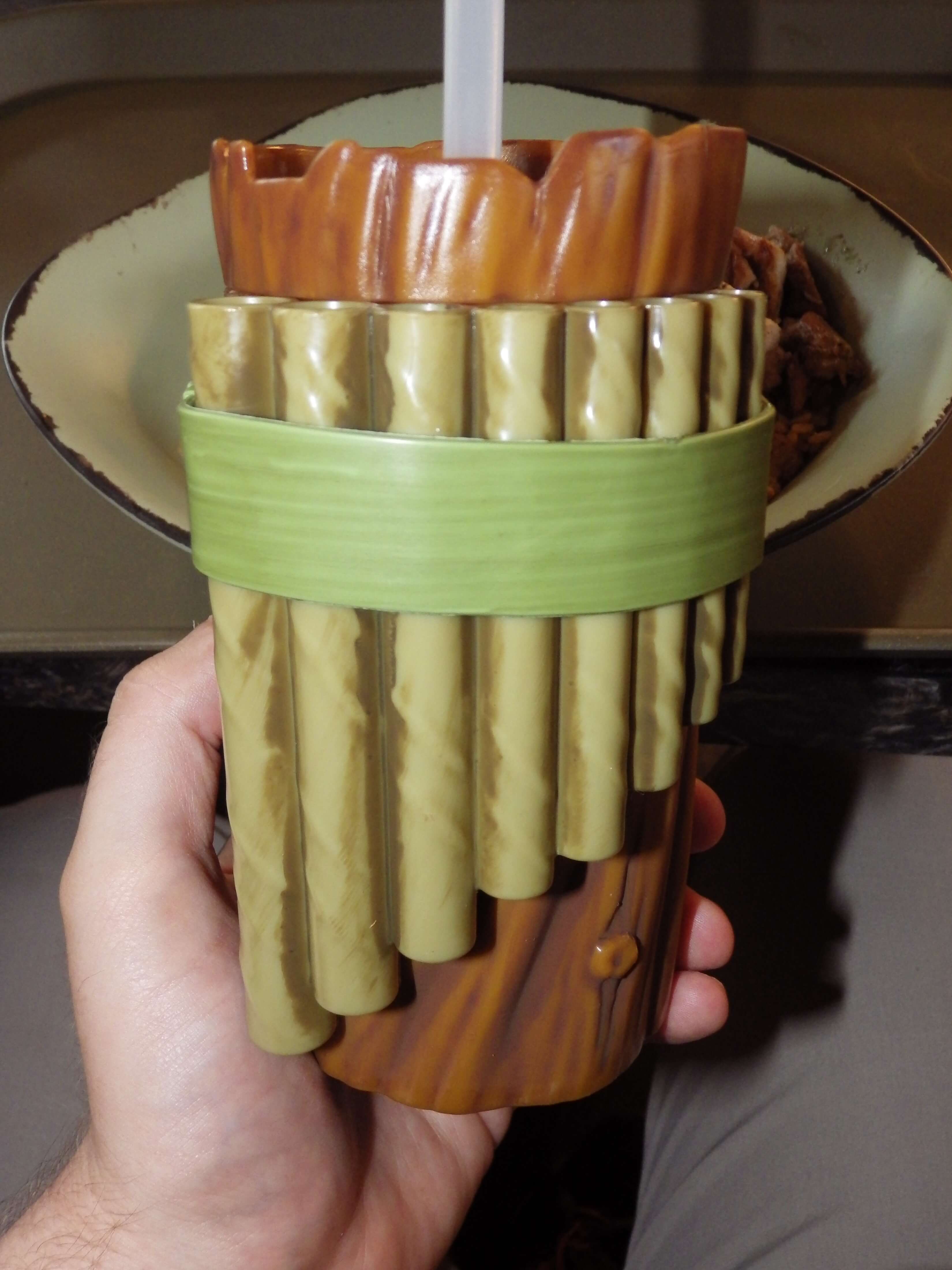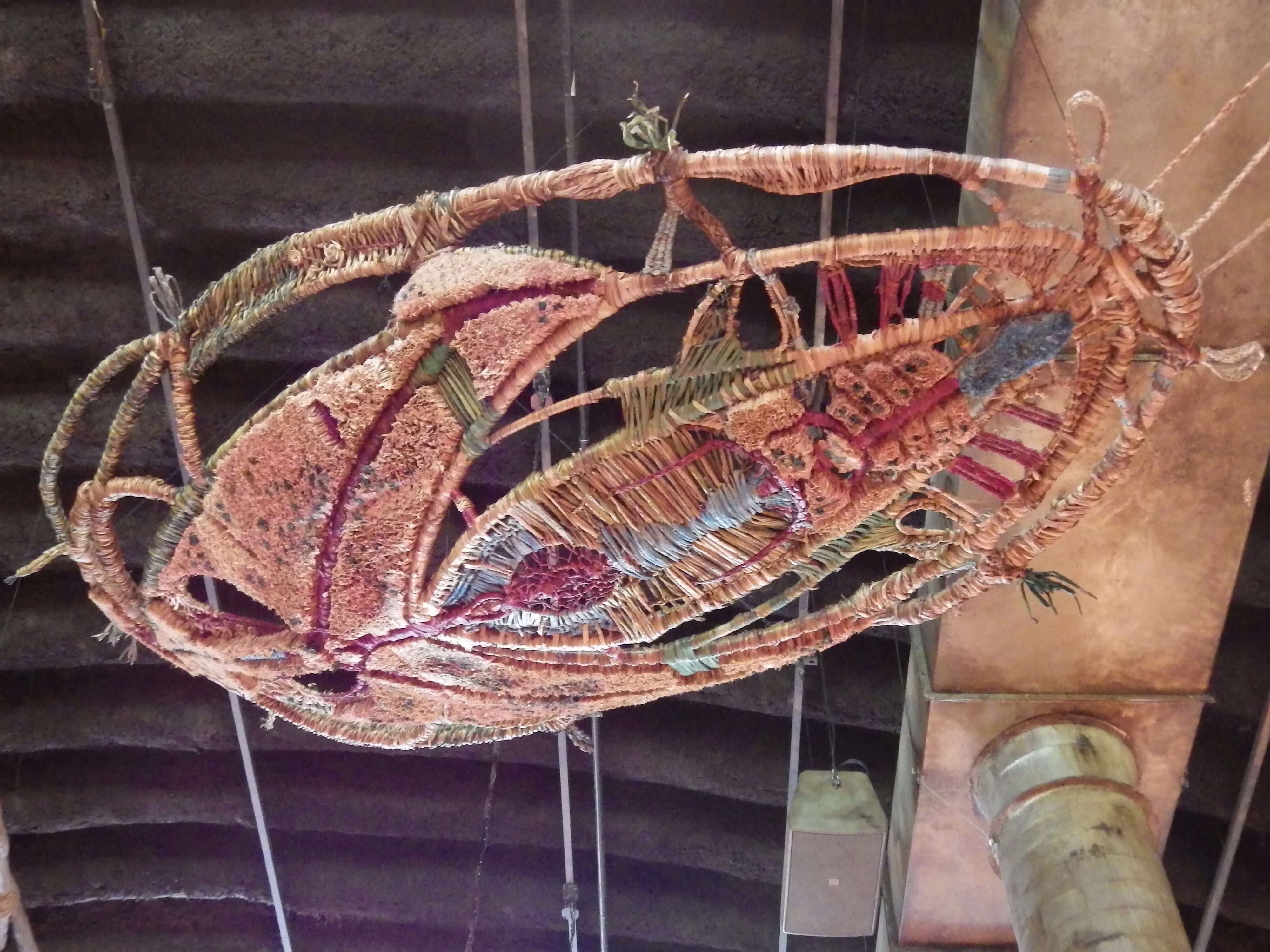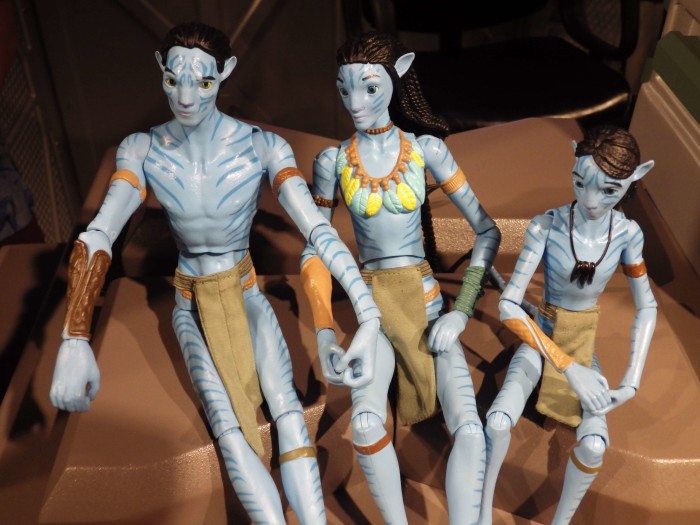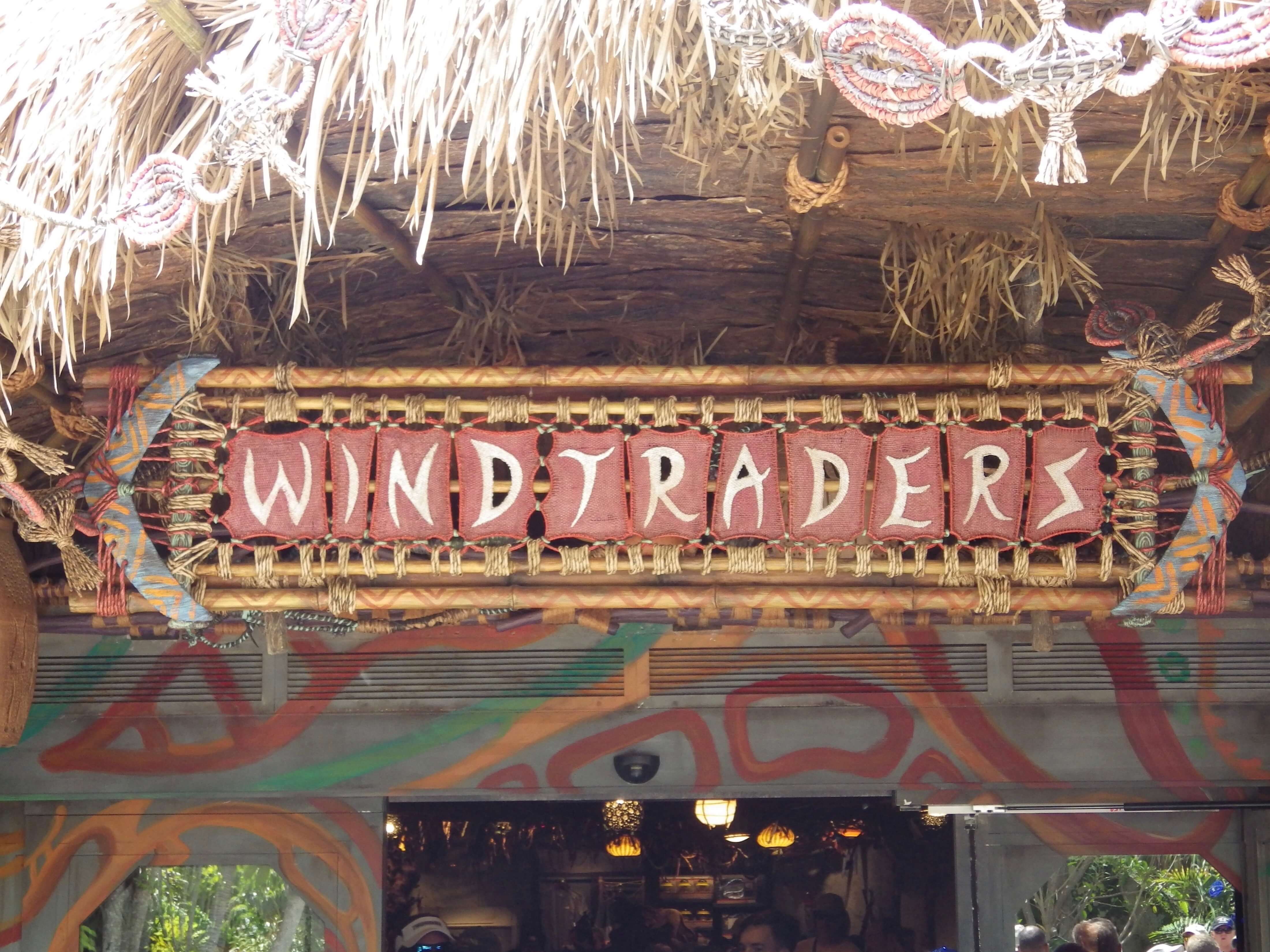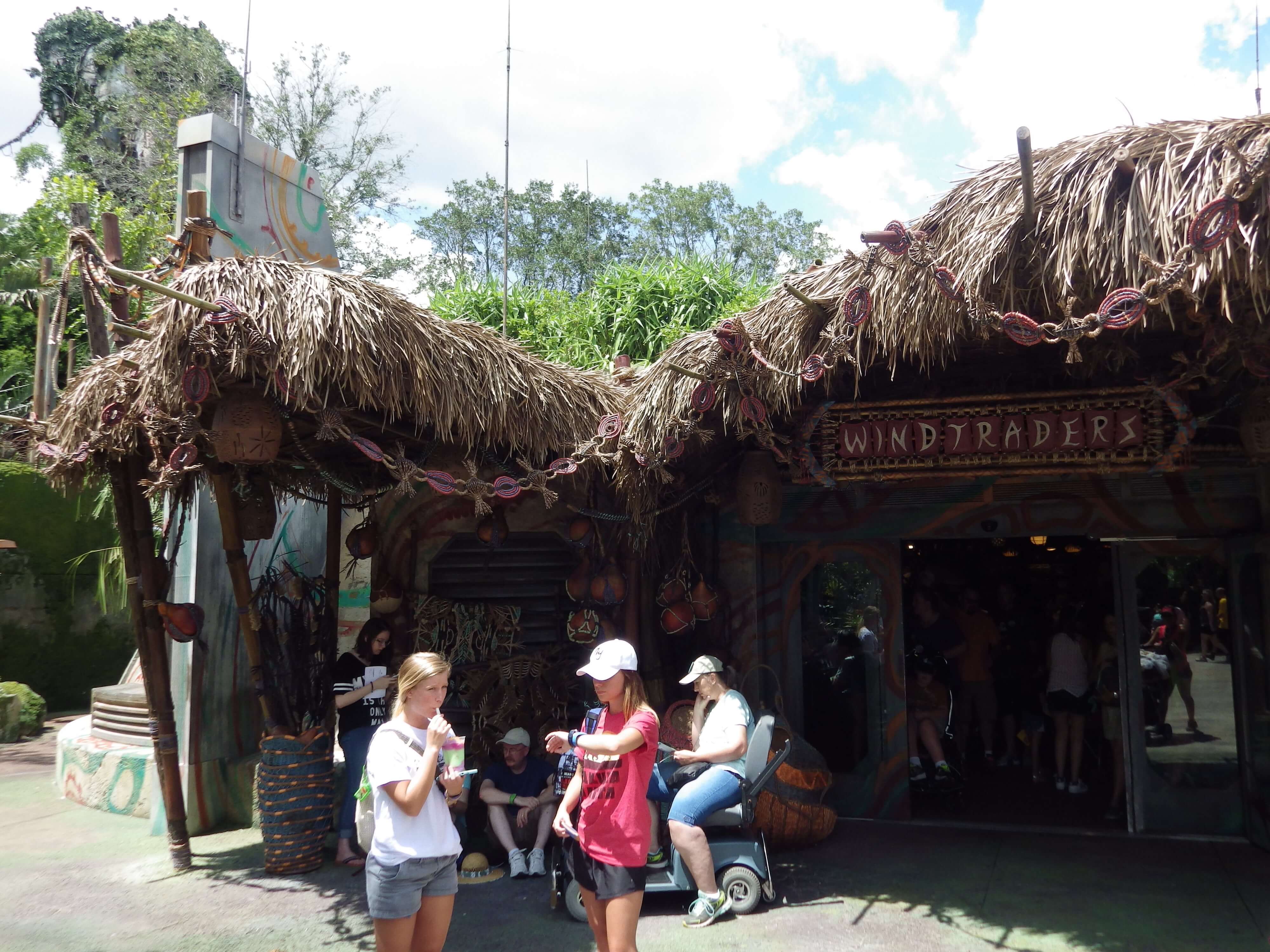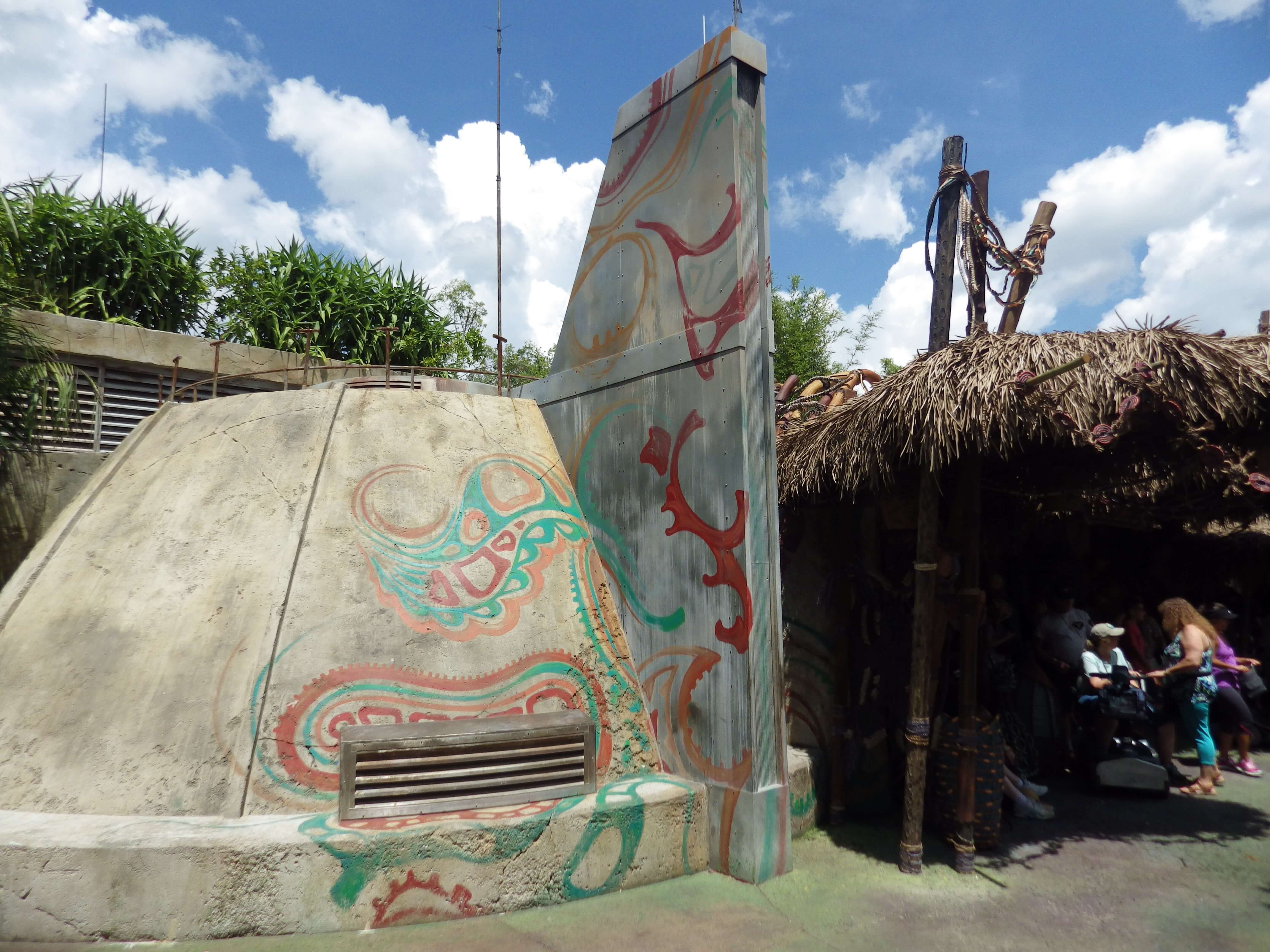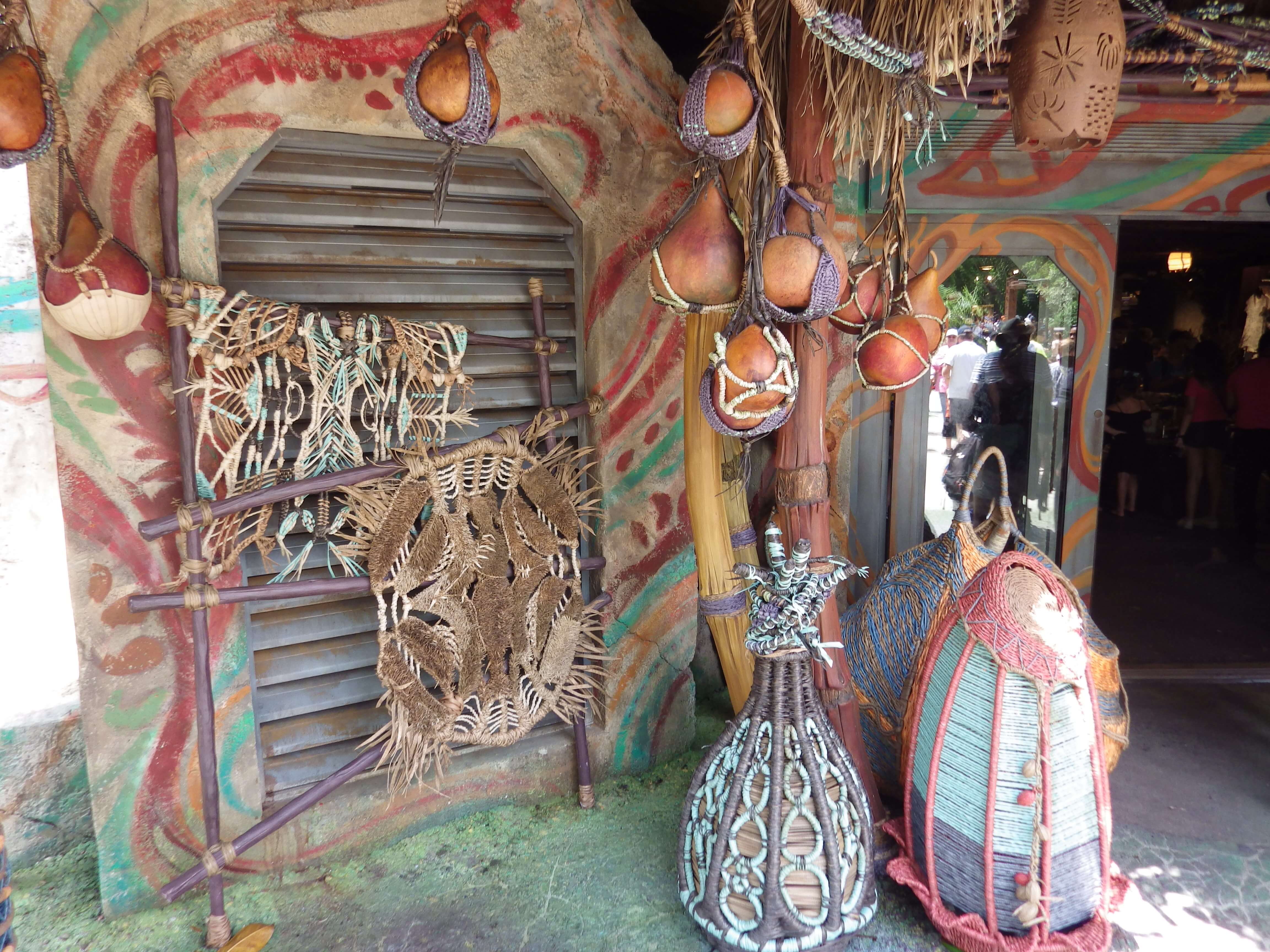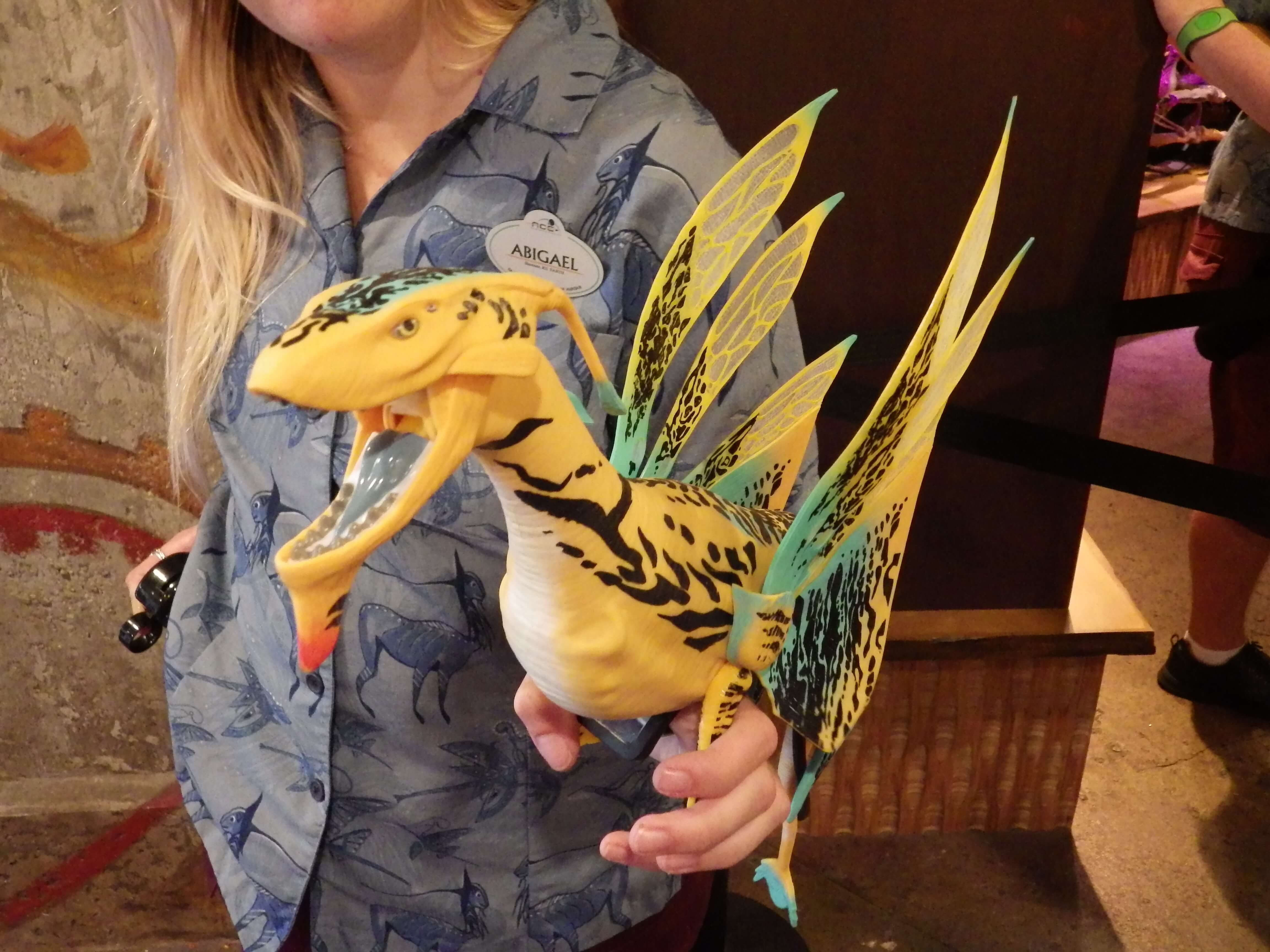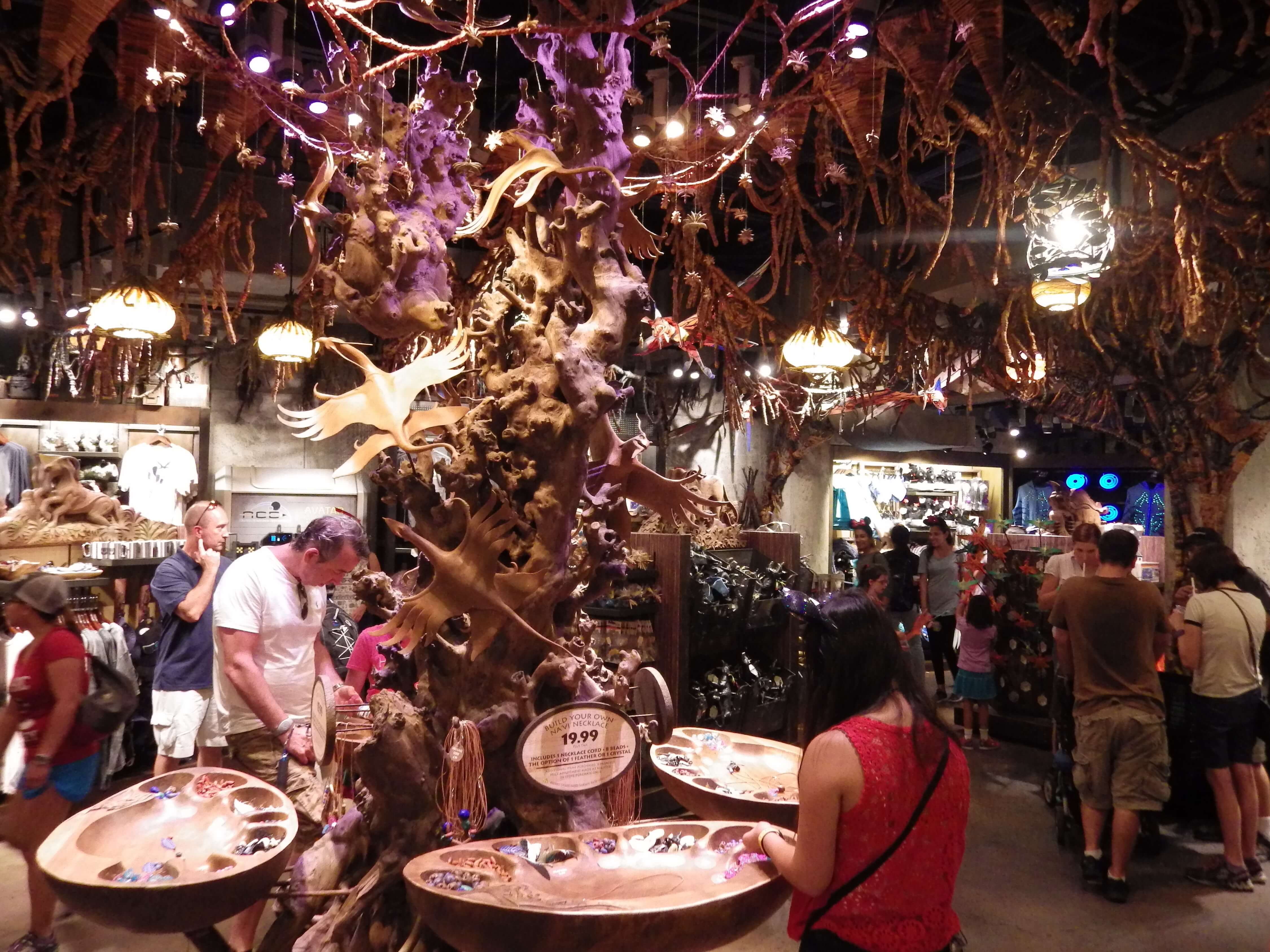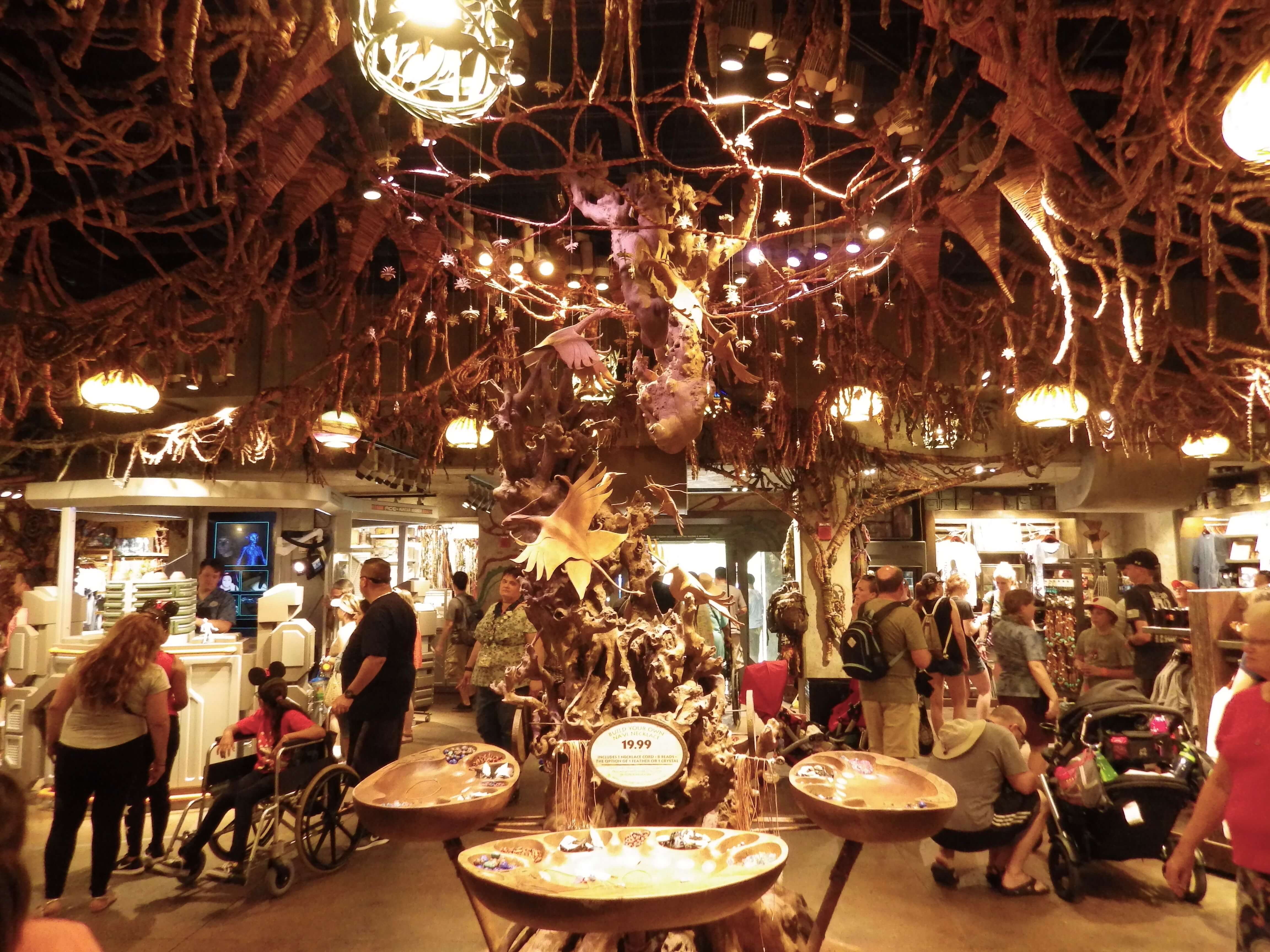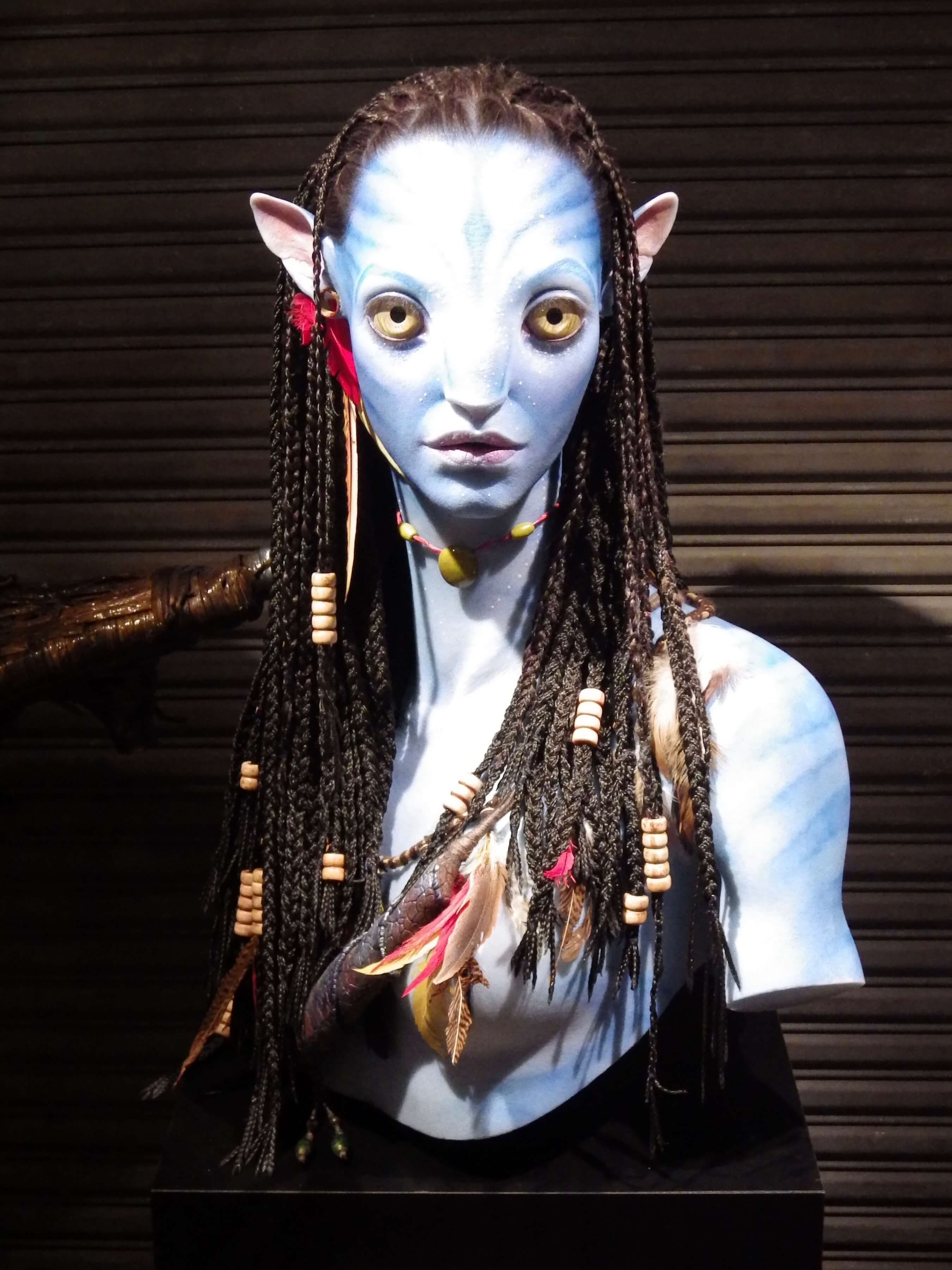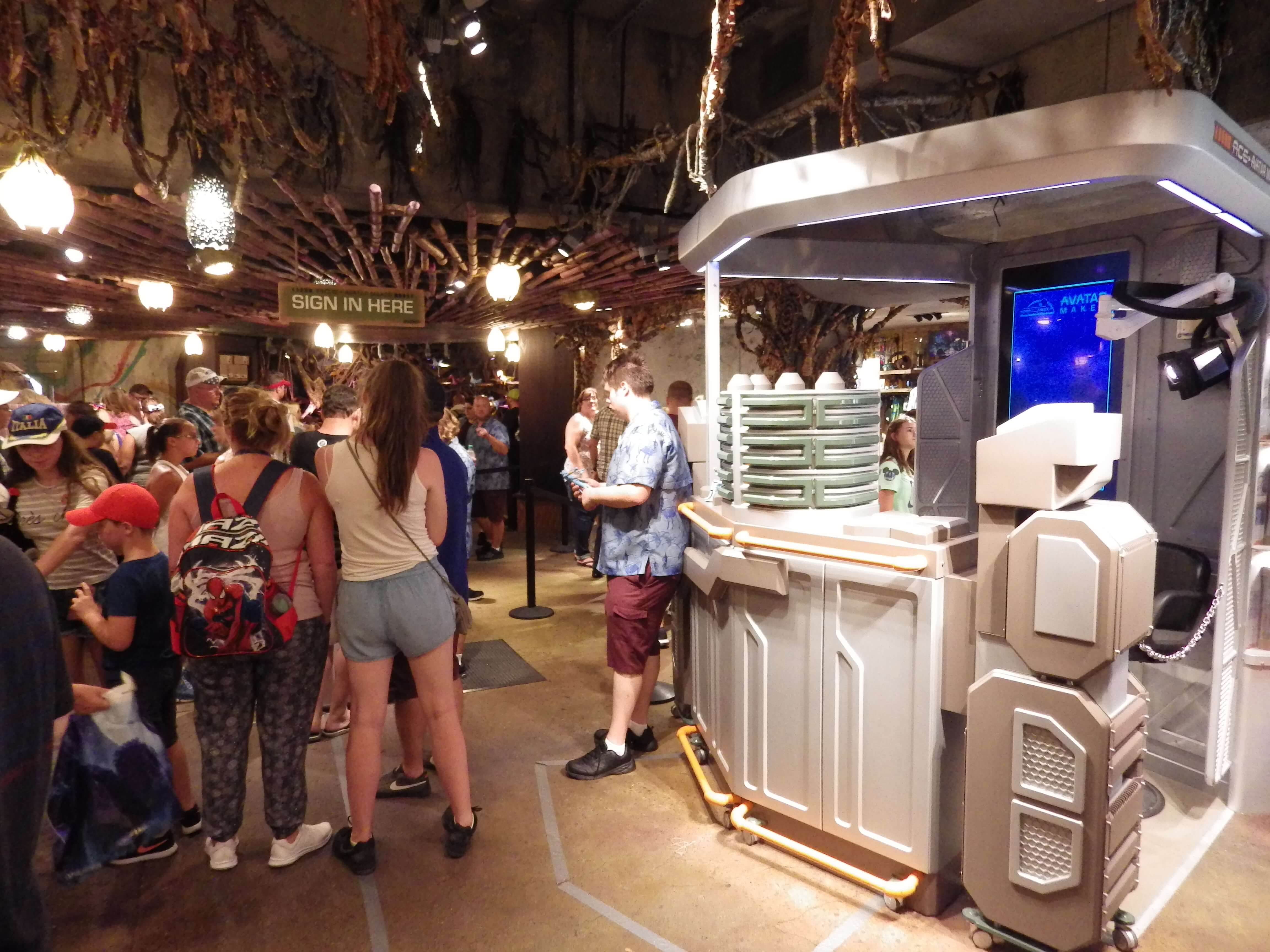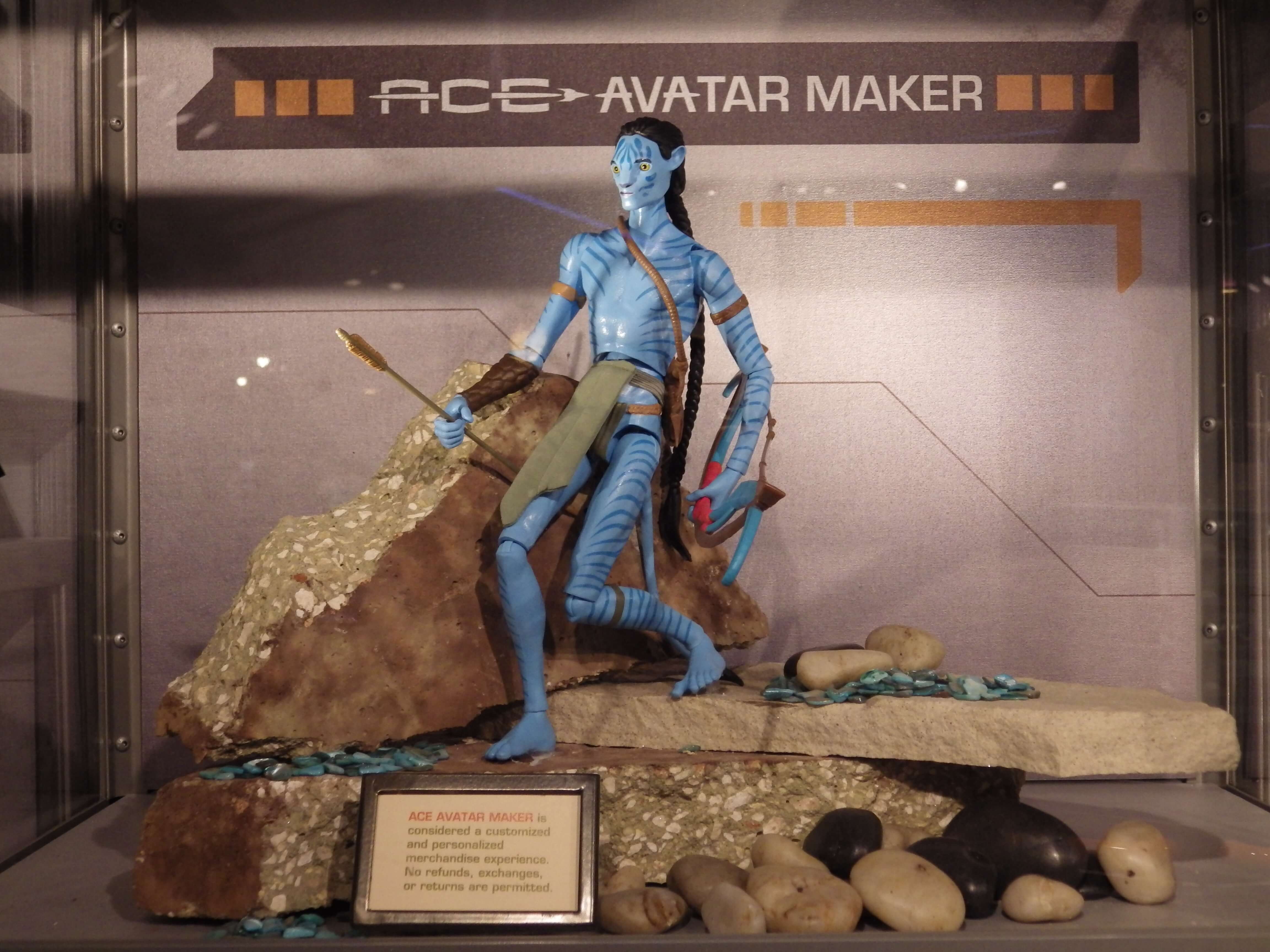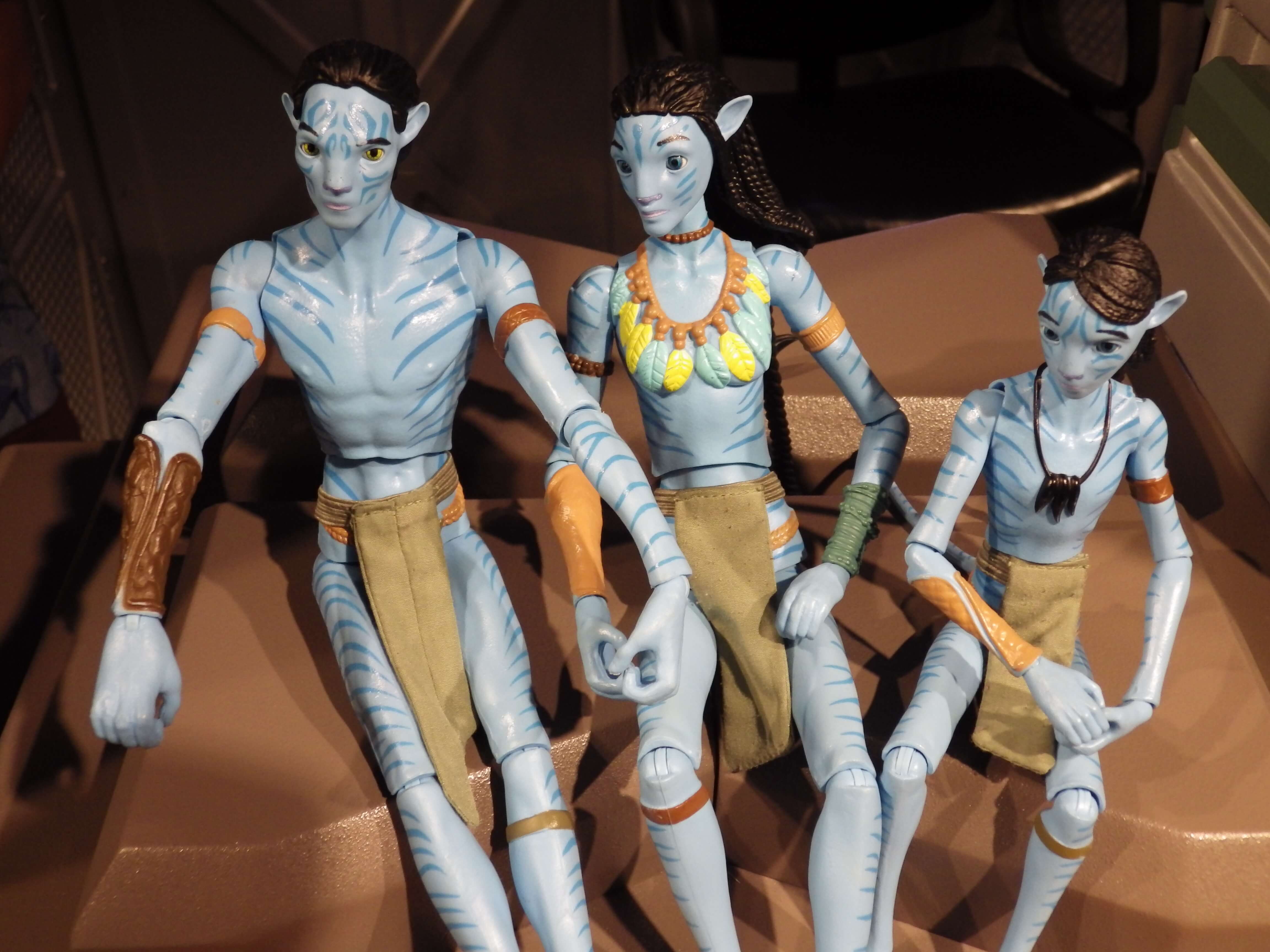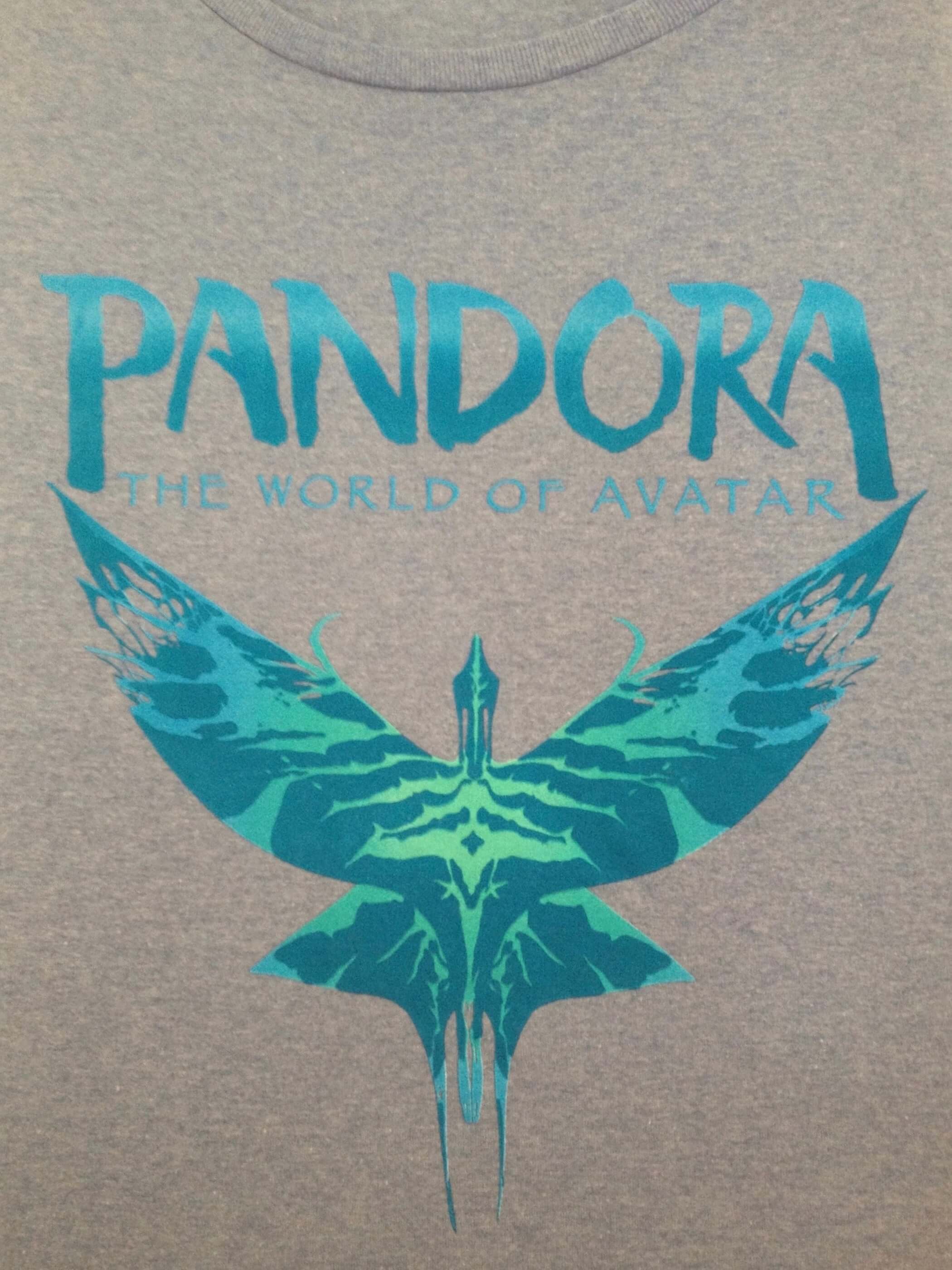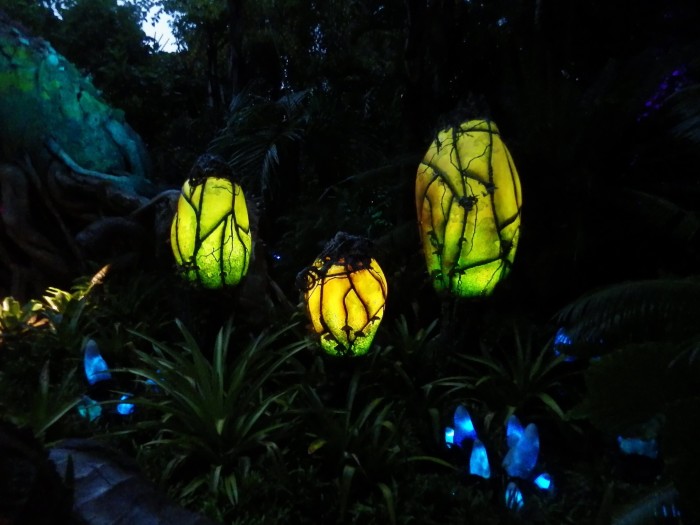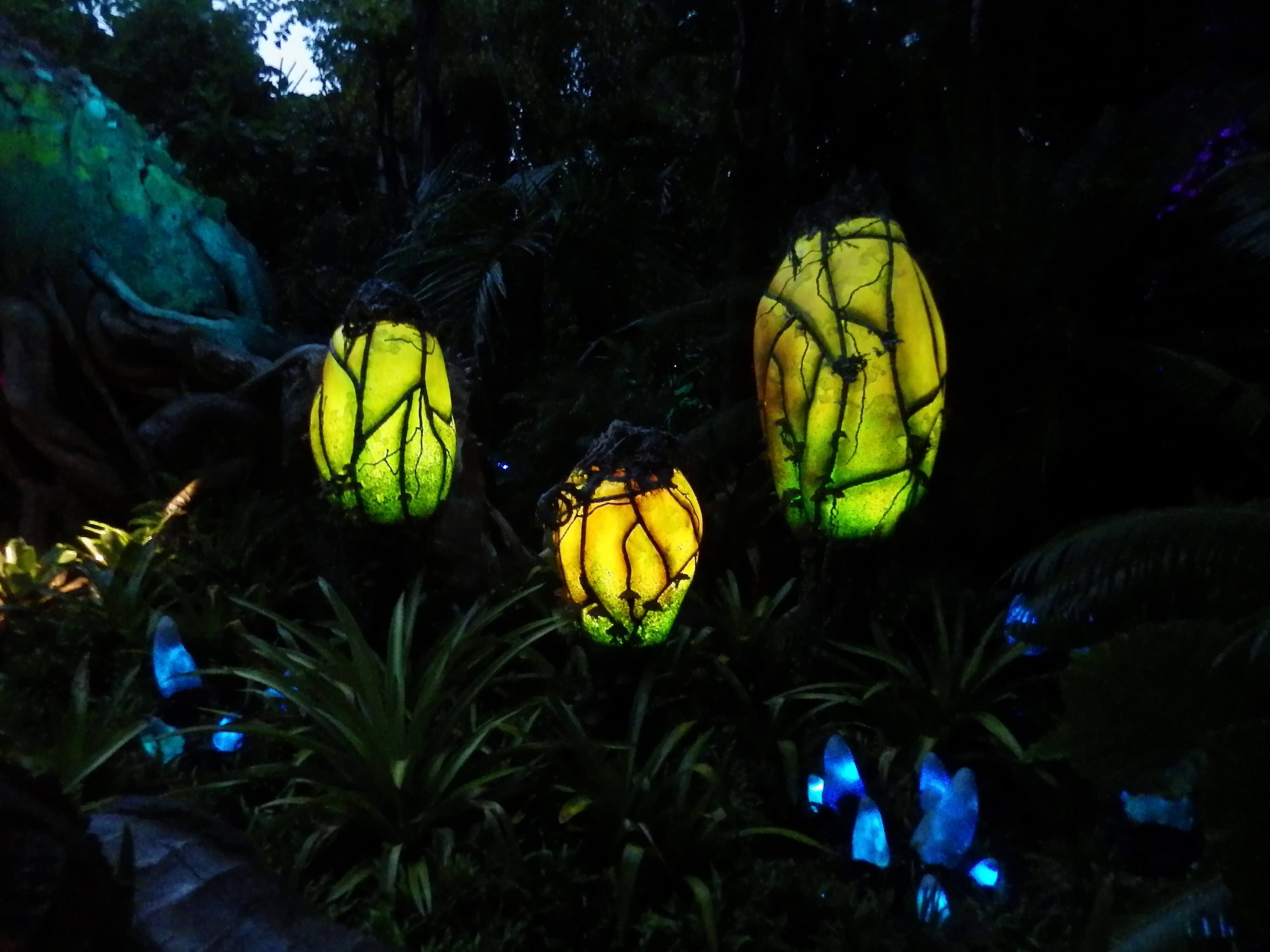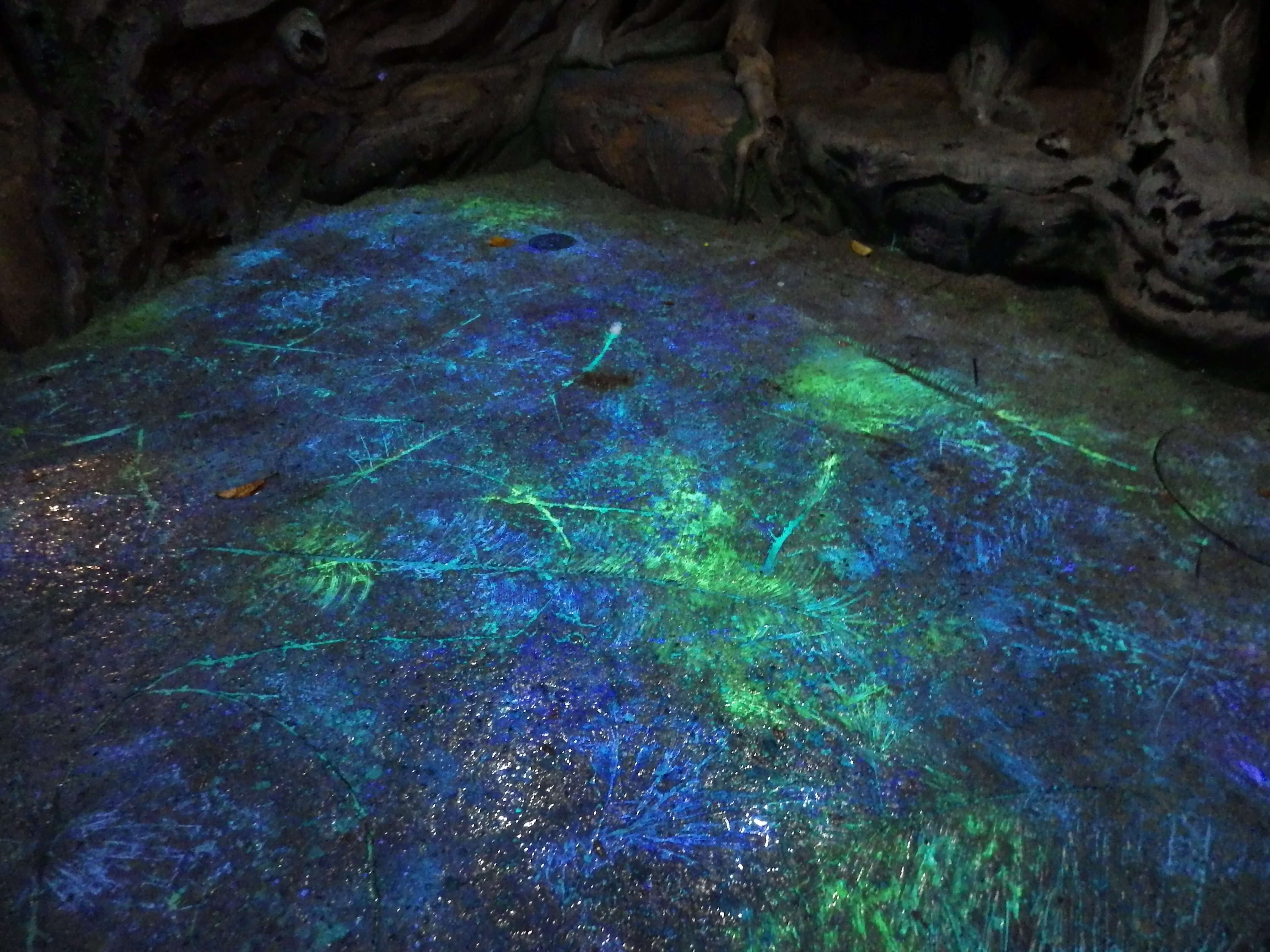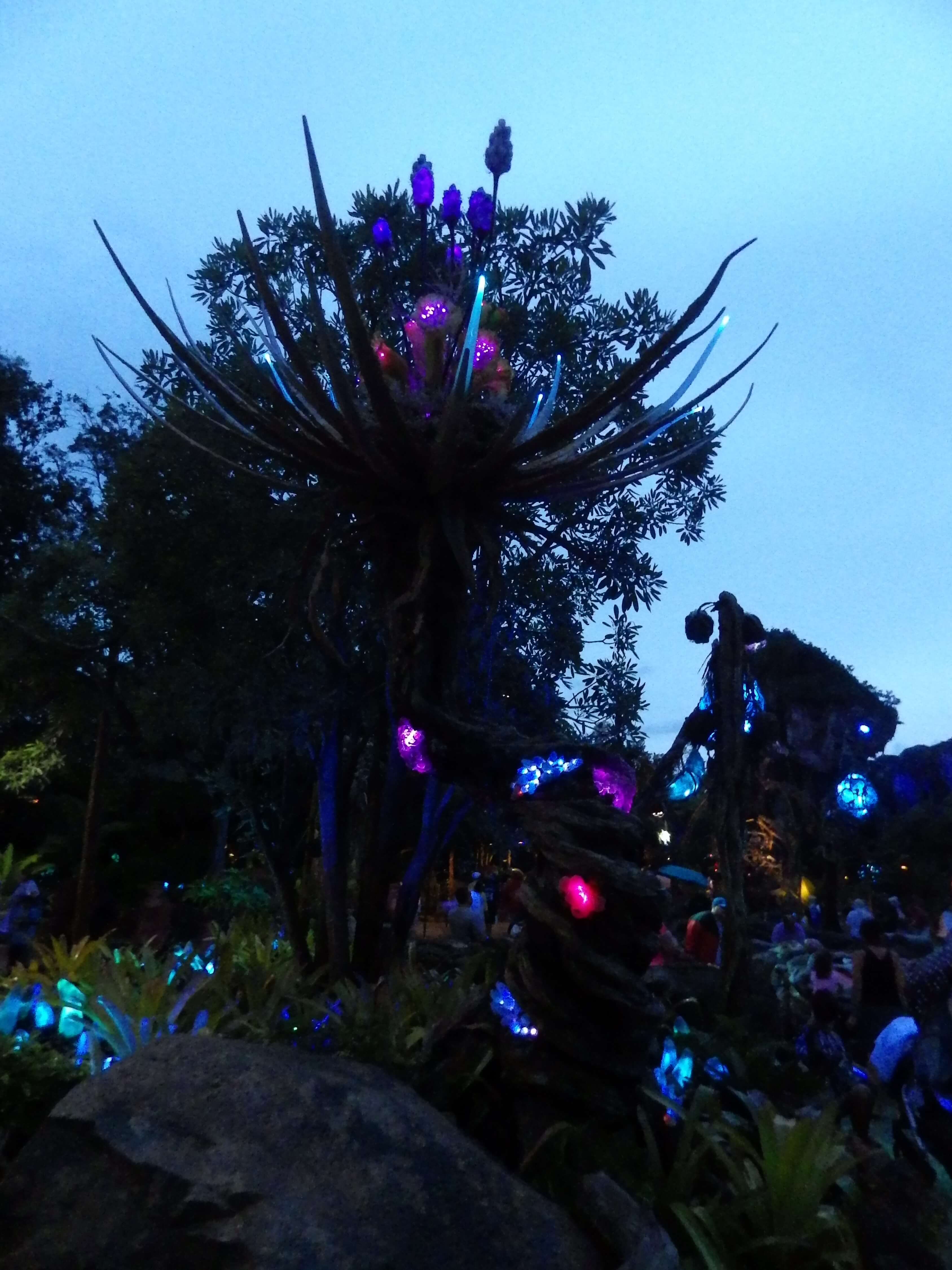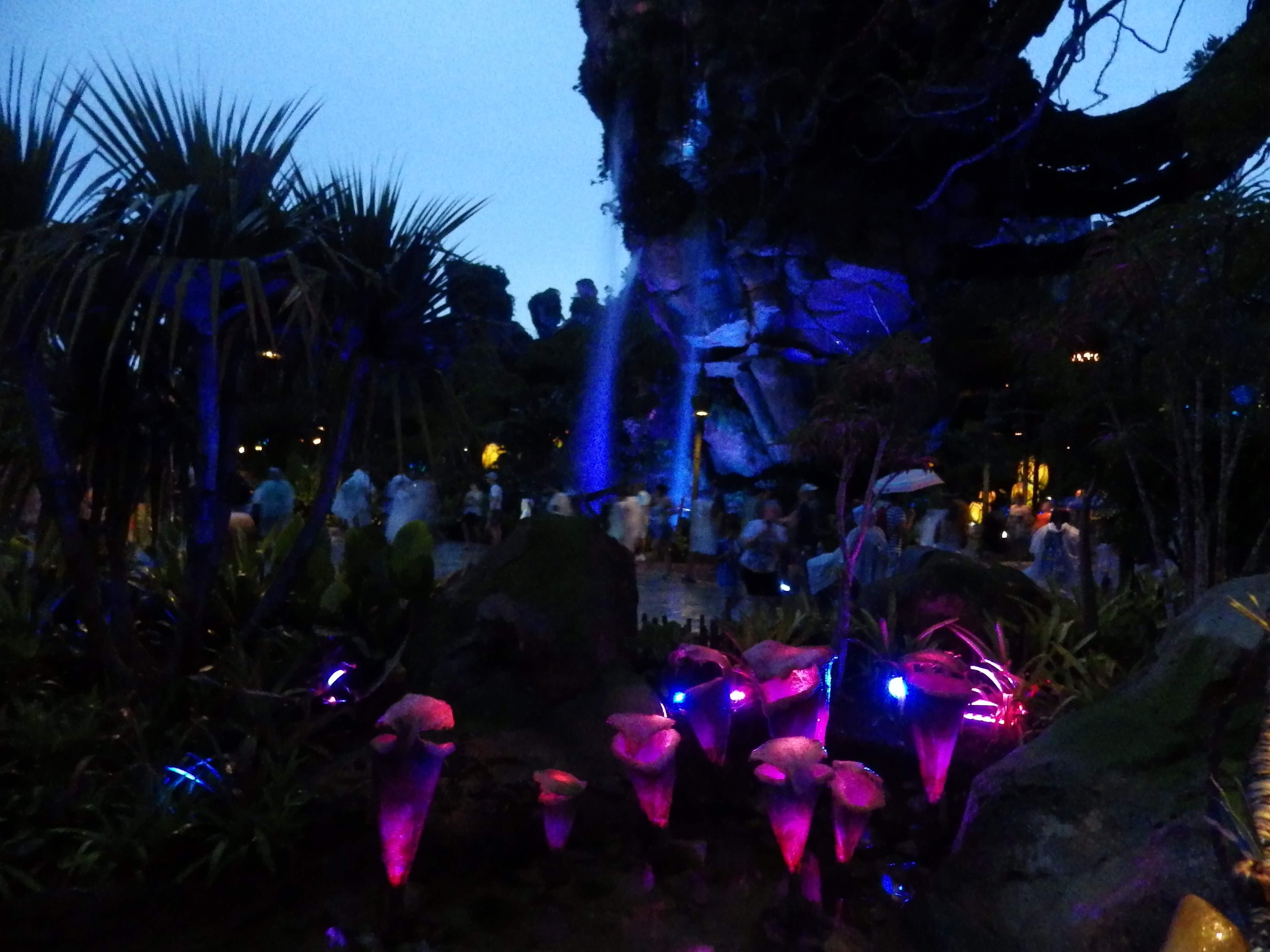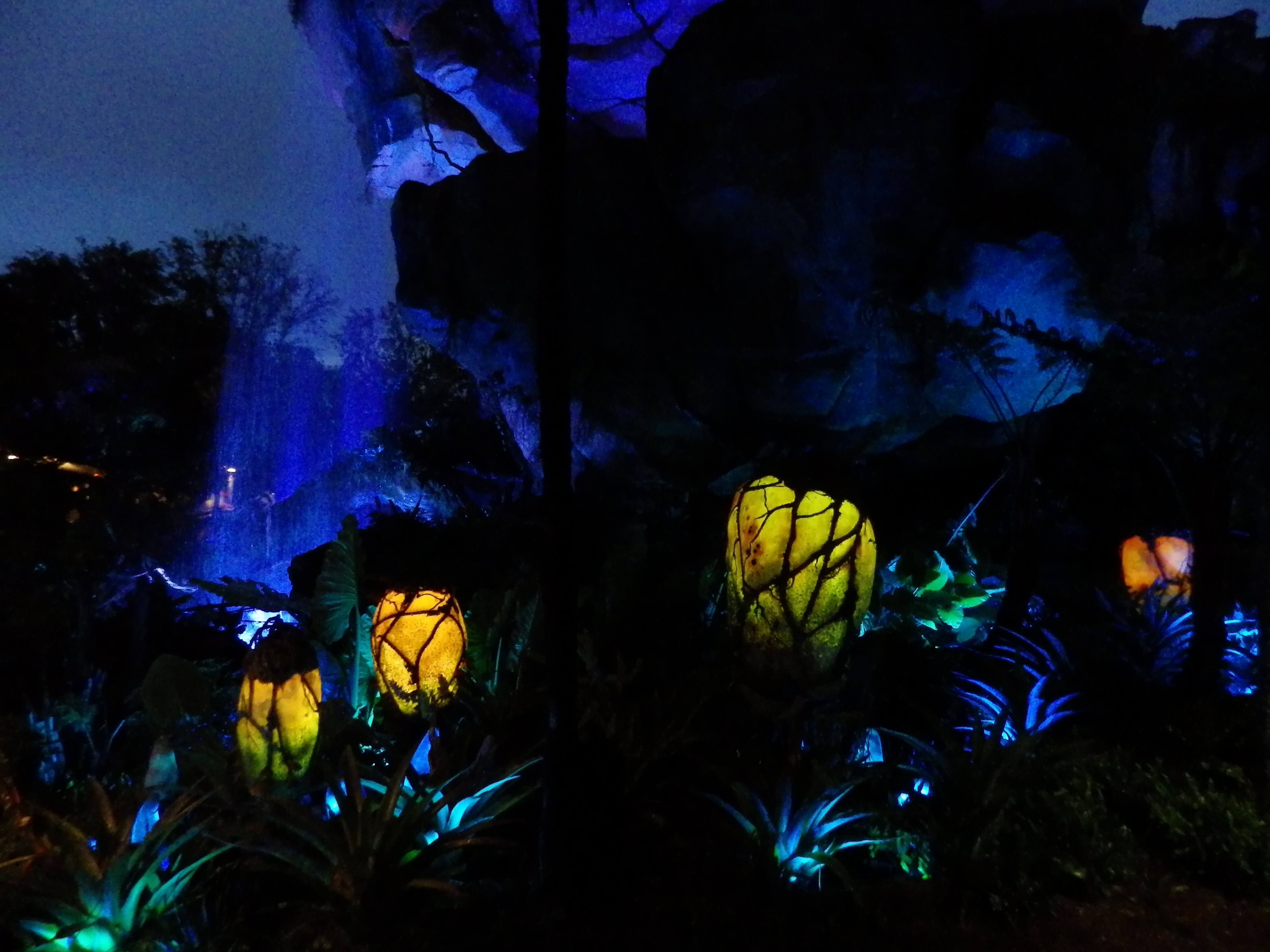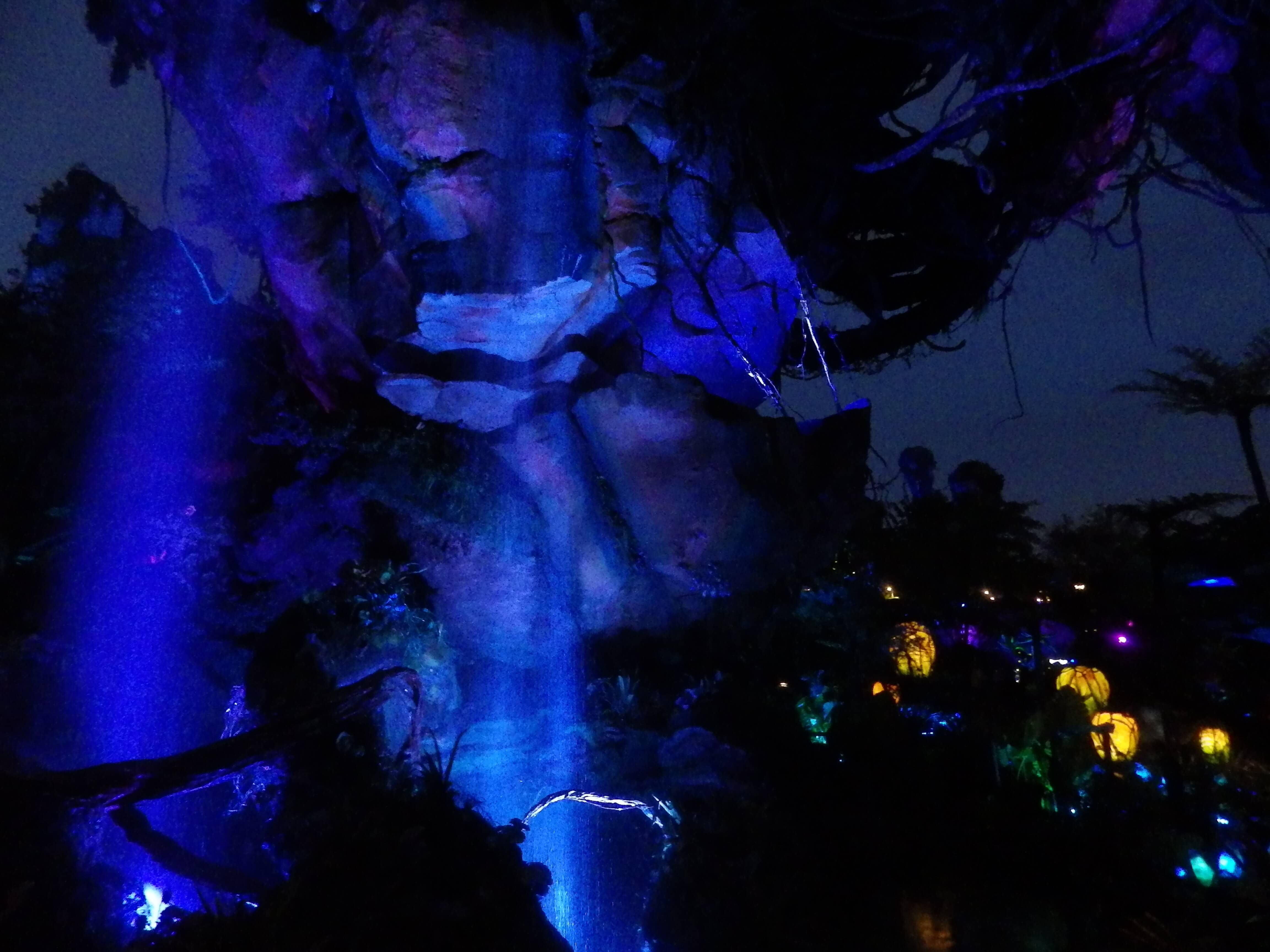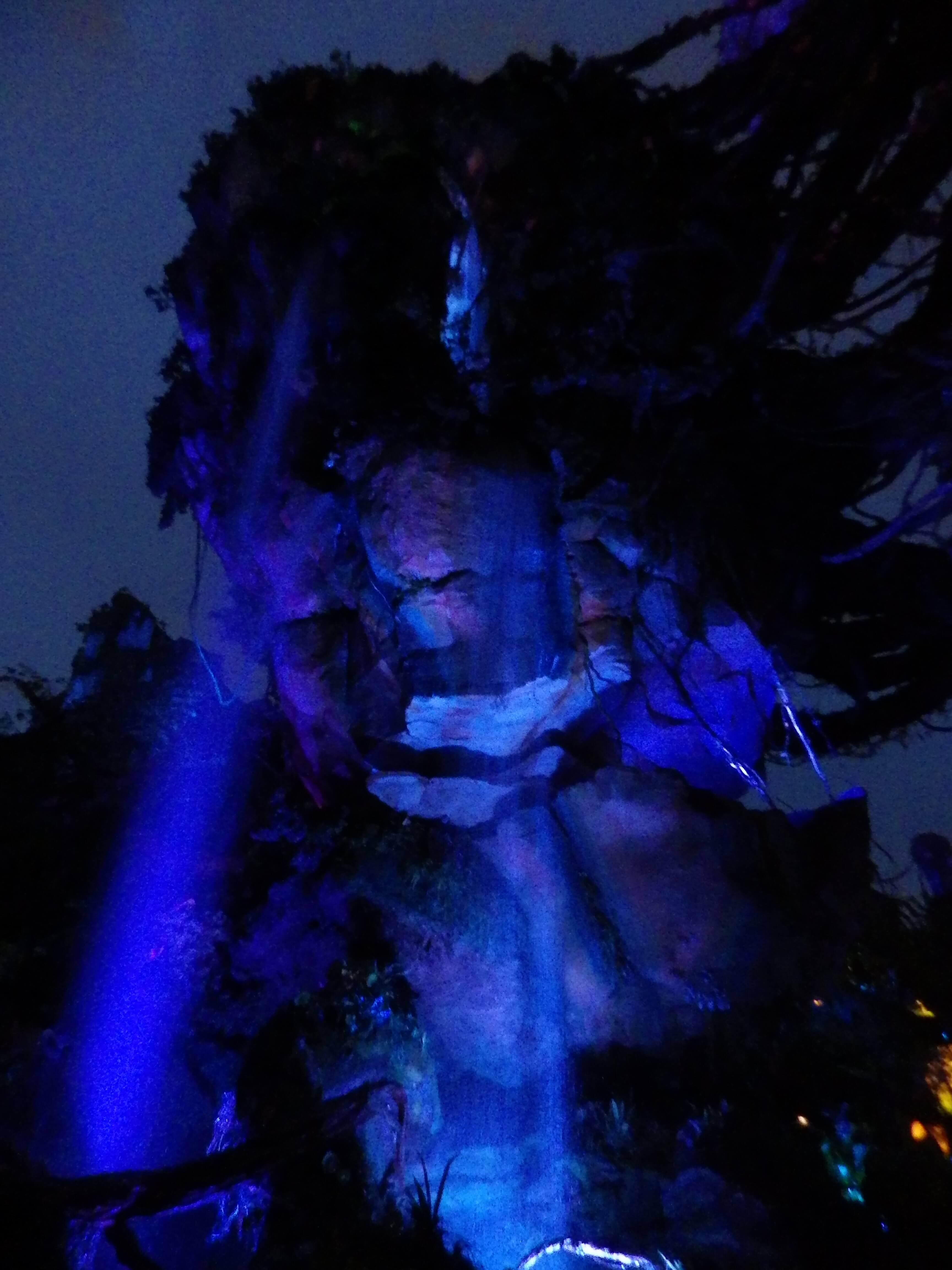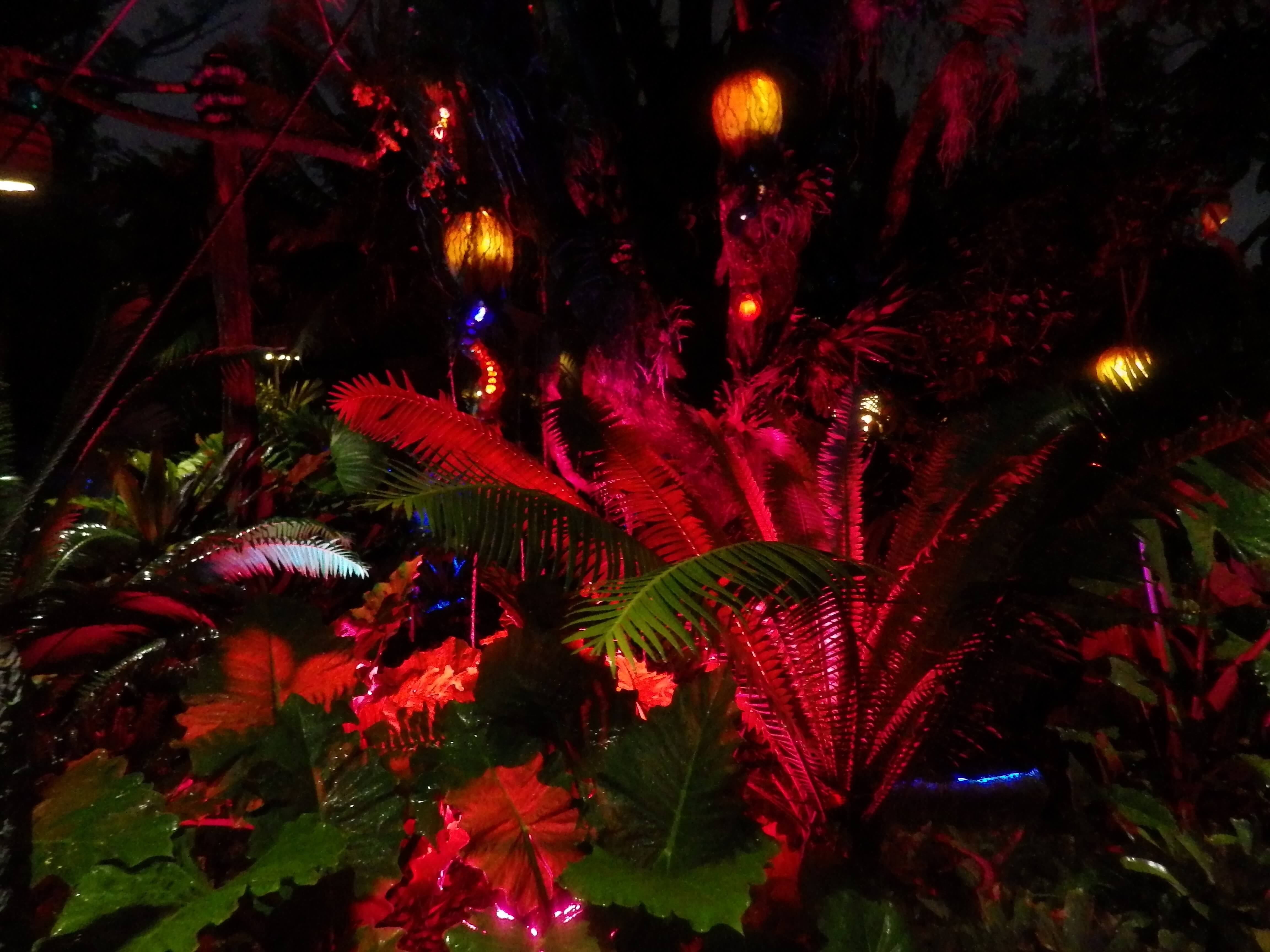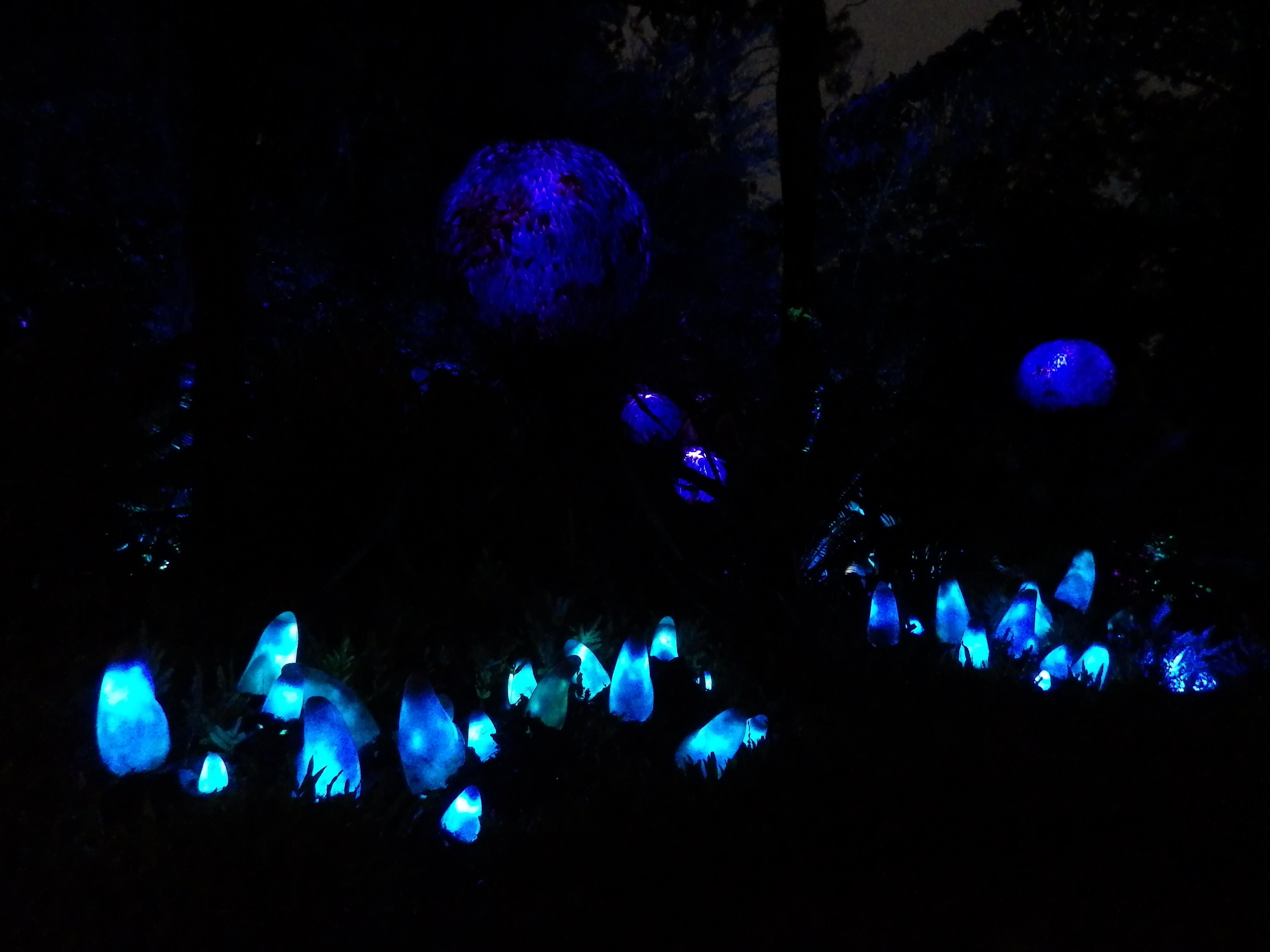How Does Pandora - The World Of Avatar Reflect James Cameron's Film?
There is no denying that the movie Avatar was once a great cultural event. In late 2009, director James Cameron's blockbuster about blue-skinned aliens was seemingly all anyone could talk about, even though it was arguably not even the best science fiction film that year (to be sure, the landscape was crowded, with District 9, Star Trek, and Moon all jockeying to be the sci-fi inclusions on people's Top Ten lists.)
Critics hailed Avatar as a singularly immersive theatergoing experience, and audiences agreed, insofar as they helped it unseat Cameron's previous film, Titanic, to become the highest grossing film of all time. Even when adjusted for inflation, it still ranks as the second highest grosser, right behind the classic Gone with the Wind.
Yet as many have noted, in the intervening years since Avatar set off the big wave of post-converted 3-D films, it seemed to vanish from the cultural conversation. Back in 2014, on the fifth anniversary of the film's release, Scott Mendolson of Forbes.com posted an article examining the film's legacy. The headline of that article asserted that Avatar had "left no pop culture footprint." And indeed, the film's cultural relevance, or lack thereof, is something the voices on our own /Filmcast have continued to debate.
As of this summer, however, Avatar the experience (emphasis on "experience" over the film's middling story) has suddenly become relevant again. All it took was the opening of a certain theme park land at Disney's Animal Kingdom in Florida.
Let's take a closer look at Pandora – The World of Avatar, how it fits in with Animal Kingdom, and how it brings aspects of Cameron's film to life in a way that just might make a believer out of you, even if you are not an Avatar fan.
Even before setting foot in Pandora – The World of Avatar, the sight of the Tree of Life, Animal Kingdom's central landmark, might serve as a faint visual callback to one of the elements from Cameron's film: namely, the towering Hometree, which served as the habitat for the Na'vi until a fleet of gunships brought it down. If you hang a left at the Tree of Life, and follow the signs, you will eventually cross a bridge and find yourself entering the Valley of Mo'ara on Pandora.
A glimpse at the guidemap for Animal Kingdom reveals two rides, two restaurants, and one gift shop in Pandora.
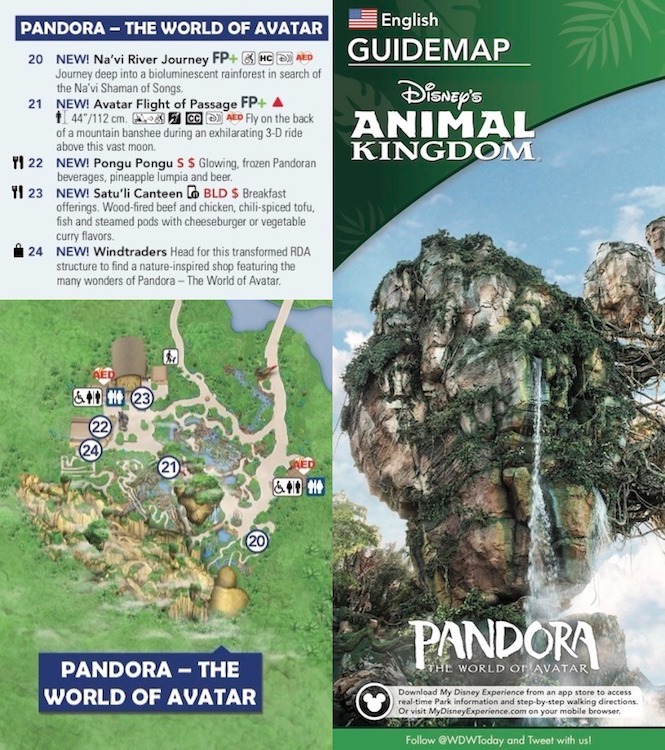
From here on out, we will move through the land, spot by spot, taking a look at each of those places, as well as a few other key geographical features that are not given a map description.
Floating Mountains
In Avatar, there is a funny scene where a character named Norm professes open excitement about visiting "the Hallelujah Mountains," only to look and see no visible reaction from the main character, Jake Sully (remember him?) That scene is a microcosm for how many people would probably feel about the prospect of visiting Pandora. Which is to say, they would probably stare blankly at you as you scoffed, "The legendary floating mountains of Pandora? Heard of those?"
Yet even for an avowed non-fan of Avatar the movie, the sheer massive scale of the floating mountains almost single-handedly justifies visiting the World of Avatar. As you walk up on them, the juxtaposition of these huge green-speckled rocks with waterfalls cascading over the side and people streaming under them like ants is a real wonder to behold.
That, in a nutshell, is what makes Pandora – The World of Avatar such a perfect extension of the movie. In a way, Avatar was already more of a theme park ride than a movie. Once the ride left theaters, you could never truly relive it...until now. Watching the film at home, even on a big-screen TV, is just not the same. If anything, it would only lay bare the film's deficiencies as a piece of storytelling. What the theme park land does is restore the lost spectacle, the missing element of interactivity, to the Avatar experience.
So yes, the floating mountains are gosh-wow terrific. Hallelujah, indeed. You can see them looming large over Pandora from just about anywhere in the land; the two best vantage points are probably the southeast quadrant, or the viewing ridge just off to the right when you first walk in.
Disney made the smartest choice it could have with this land by setting the backstory "over a generation" after the events of Cameron's film. In doing so, it has effectively downplayed the film's weakest aspects — specifically, its characters and threadbare story — in favor of a more standalone experience that plays to the movie's strengths.
Avatar's greatest asset was always its world-building, the photo-realistic backdrop of the exoplanetary moon Pandora. This is understandable, since the whole reason the movie was considered such a technological leap forward at the time is because Cameron had utilized a new virtual camera system whereby he was able to create a digital environment as he was filming. This allowed him to view how his actors interacted with the environment every step of the way.
As a result, the moon of the film became a place of exotic beauty that looked and felt like an authentic, mist-shrouded rainforest in a National Geographic special. Only now, that place, with all its painterly background flourishes like the floating mountains, is also a physical construct that you can visit in the real world. Once again, the audience has become an active participant, invited into Avatar by way of immersion.
Flora and Fauna
Before we take a look at the two rides in Pandora – The World of Avatar, it is worth remarking on some of the otherworldly plant life. Back at the Valley of Mo'ara sign, when you first walk in, you will see a large specimen called a flaska reclinata. This plant is said to be the last of its kind, however touching its pink belly makes it emit spores (in actuality, just steam) to reseed itself across the moon.
This is but one small detail that helps Pandora fit in with the overall theme of conservationism at Disney's Animal Kingdom. Throughout the land, there are many other exotic specimens: the so-called "vein pods," for instance, almost look like the eggs carrying facehuggers in Cameron's Aliens.
Flight of Passage
Avatar: Flight of Passage is the newest E-ticket ride at Walt Disney World, meaning it utilizes some of the most advanced technology and is one of the most popular new attractions at the resort. Since I was there on a busy Saturday, and it's still the opening summer, the ride had a standby wait of 2 ½ to 3 ½ hours all day long.
Luckily, this writer was able to secure a Fastpass online before showing up at the park. The only downside to jumping the line is that there are certain things you can only see in the standby queue, such as the lab where one of the blue avatars floats in an amnio tank. Back in May, our own Peter Sciretta shared some videos from Inside the Magic that show that part of the experience, and a whole lot more. You can check out his coverage here.
As Peter noted, Flight of Passage is set within an abandoned RDA (Resources Development Administration) facility. RDA was the corporate entity that served as the main antagonistic force in Cameron's film. Since it was driven off-world at the end of the film, there are several abandoned RDA facilities scattered throughout the World of Avatar. In the backstory, this one has been taken over by Alpha Centauri Expeditions (ACE), an "interplanetary adventure travel" agency, which seeks to connect guests with nature on Pandora.
At the entrance to Flight of Passage, there is no big sign trumpeting the attraction's name. Instead, if you look up, you will see a handwoven hanging decoration, depicting a mountain banshee, one of the flying creatures that the Na'vi can interface with via a neural connection.
To reach the ride, you hike up into a mountain cave whose mouth also yields an impressive view of the floating mountains. Once inside, you move past cave paintings and twist through a few old access tunnels, until you reach a room with a video screen where a scientist debriefs you on how you will be "genetically matched and linked" to your own avatar, so you can ride on the back of a mountain banshee. This not only lets eco-tourists experience an important Na'vi rite of passage; it also helps the Pandora Conservation Initiative study a "keystone species" in the moon's recovering ecosystem.
Again, back in May, our own Hoai-Tran Bui shared some embedded footage of the ride experience. Suffice it to say, guests board a contraption like a futuristic stationary bike and soon find themselves soaring through a simulation, with lush imagery provided by Weta Digital, the visual effects company that came to fame with The Lord of the Rings trilogy.
Na’vi River Journey
Like Flight of Passage, this attraction boasts no big sign, but rather, a handwoven decoration at the entrance, which helps to reinforce the motif of all-natural materials. In this case, the decoration depicts the Na'vi Shaman of Songs.
Inside Na'vi River Journey, guests board a boat for a slow ride through a bioluminescent rainforest. Sadly, creatures like the Viperwolf are depicted by video screen only: part of a growing trend at Disney World of dark rides that effectively whisk you past TV monitors. At the end, this particular ride does pay off, however, as your boat encounters an animatronic of the Shaman of Songs, who sits among glowing plants, singing and moving her arms with a fluidity that is almost beyond belief for a theme park robot.
Colors of Mo’ara / Swotu Waya
On the day we were there, Na'vi River Journey had a standby wait of over an hour and a half. The line stretched back all the way to Colors of Mo'ara, a small station where guests can have their faces painted blue or done up in other colorful designs.
This station is said to be "run by local expats," humans living on Pandora. As it turns out, there are a lot of those now — and not so many Na'vi. In fact, outside the land's two rides, seeing another guest with their face painted blue is probably the closest you will come to encountering one of the natives.
In that respect, walking around Pandora almost feels like riding Snow White's Adventures back in the day. At the Magic Kingdom, the Snow White's Adventures attraction was notable for its curious lack of Snow White. Instead, guests would take on Snow White's POV and encounter a succession of scenes based around the Witch.
In the same way, guests visiting Pandora wind up seeing the Na'vi's POV more than the Na'vi themselves. Chalk it up to the gangly height of the natives, which makes it somewhat impractical to design movie-accurate greeting costumes for them.
While there are no Na'vi character greetings, there is some atmosphere entertainment, in the form of a Na'vi Drum Ceremony. Again, this is conducted by humans: one musicologist, one first-generation Pandoran, and another expat, according to Disney Parks Blog.
The three drummers assemble at a spot called Swotu Waya, meaning, "sacred place of song." Here the drums are nested within gigantic roots.
Pongu Pongu
Outside this drink stand, which serves bioluminescent beverages, a derelict exoskeleton stands guard. Though it may bring to mind Aliens again, what with its mild resemblance to Ripley's power loader, it is actually one of the AMP suits (AMP stands for "Amplified Mobility Platform") leftover from the RDA's time on Pandora.
Beside the exoskeleton and drink stand, you can see a rusty gate with an RDA logo on it and the label "Mine Access Road." This serves as a subtle reminder of the dreaded (or perhaps just dreadful) word "unobtainium:" the term for the natural resource that the RDA was attempting to mine at the expense of Pandora's natural beauty.
Speaking of goofy words, "Pongu Pongu" is apparently the Na'vi phrase for "party party." Throughout Pandora, guests are encouraged to brush up on their Na'vi terminology. The Shaman of Songs and Swotu Waya drummers sing to "Eywa," the Na'vi deity, while signs instructs guests in the ways of saying, "Oel ngati kameie," or "I see you."
Of course, that infantile catchphrase was never the best movie quote. It sounded more like something a parent playing peek-a-boo with a toddler would say.
The act of perpetuating such baby talk is where a non-fan of Avatar the movie might find themselves chafing against the World of Avatar a little. Still, Pongu Pongu serves frozen cocktails, which is always a plus on a hot summer day. The drink stand is run by yet another human expat, which makes me wonder how cool it would be if they actually had a Na'vi bartender instead?
Satu’li Canteen
Housed within a former RDA mess hall, which has since been converted into a spacious hut, this eatery serves (according to the Walt Disney World website) "wholesome grains, fresh vegetables, and hearty proteins ... a unique, fast-casual menu that's been crafted from Pandora's natural abundance."
Inside, there are crafts on display, and more handwoven decorations can be seen hanging from the ceiling. The two main lunch/dinner entrees at Satu'li Canteen are steamed pods (buns similar to the Japanese snack nikuman) and meat, fish, or vegetarian bowls. You can also quench your thirst with a Pandoran Sunrise, a tropical juice concoction that comes with an optional upcharge for a Na'vi Flute Cup...which is really just a cheap plastic souvenir that will set you back nine dollars.
Windtraders
Speaking of souvenirs, Windtraders is the resident gift shop in Pandora. This is another place where you can see Na'vi markings on RDA metal and other signs of civilization having been reclaimed by the wild.
Highlights at Windtraders include a corner where guests can adopt their own interactive banshee toy; an overgrown root in the middle of the store where guests can build their own Na'vi necklace; and a station where guests can have an avatar action figure designed based on their own unique likeness. Both the banshee and the action figure come with a hefty price tag, but for those looking to take home less expensive souvenirs, there are plenty of other merchandise options, such as Pandora – The World of Avatar T-shirts.
Pandora by Twilight
After dark, Pandora comes to life in a different way, as its various bioluminescent species start glowing. The only way the beauty of all this gets slightly undermined is by pollution in the sky, which becomes more visibly pronounced the darker it gets.
Disney Tourist Blog has pointed out that Pandora is close to Animal Kingdom's parking lot, and so there is a lot of sodium vapor, which turns the night sky a sickly shade of orange. On the one hand, it "adds to the surreal appearance of this alien landscape," just as Disney Tourist Blog points out. On the other hand, it serves as a reminder of the industrial world, which runs somewhat contrary to the conservationist message of Animal Kingdom.
That message does shine though in Pandora, albeit in more understated ways, ones that frantic tourists who are not attuned to background details might very well miss. Speaking subjectively, yours truly found himself dwelling on conservationism more after hearing the tour guide on Kilimanjaro Safaris tout the Disney Conservation Fund.
Though the movie franchise has been dormant for a few years, Avatar is not going away anytime soon. With the opening of this theme park land, and no less than four film sequels scheduled for release from 2020 to 2025, we could be looking at a major resurgence for this intellectual property. Canny businessman that he is, James Cameron may have found a foolproof way to ensure the legacy of his fictional world, just at the point when it seemed the moviegoing public had given up caring about it. Now, suddenly, people with no great desire to ever watch the film Avatar again may find themselves curious to revisit it.
In a way, Pandora – The World of Avatar almost retroactively makes the film better, insofar as it reinstates the thrill factor and nearly makes the weak plot seem more forgivable. Essentially, it is what Star Wars toys were to a whole generation of kids. It is a way to join in the world-building by staging your own adventures.
No one ever doubted that Avatar was an amazing visual achievement. But perhaps the reason that an arguably third-rate sci-fi flick about blue-skinned aliens became such a cultural phenomenon years ago is because it was buoyed by the fad of 3-D in a way that was actually meaningful. When people put on those 3-D glasses, they were fully, almost forcefully, engaged by the movie they were watching.
On the second to last day of the '00s, The New York Times website published an article about the future of film called "Floating in the Digital Experience." In that article, writer Manohla Dargis talked about how we had reached the end of "a decade when watching movies became an increasingly solitary affair, something between you and your laptop."
That trend has only exacerbated in the 2010s. And now Avatar is here again, to re-engage spectators in a new, exciting manner, and in doing so affirm what Dargis called "the deep pleasures of the communal." Phoning in the story in favor of immersive thrills already made the movie the perfect fodder for a theme park land. In 2017, Avatar's nascent presence at Animal Kingdom has enabled it, once again, to do what any good bit of escapist entertainment should do, and transport you to another world.

